











Cladco Steel Roofing Sheets are suitable for agricultural, industrial and domestic applications, available in up to 14 colours. Speak to our expert Sales team to find out more.

Corrugated, Box Profile, Tile Form and Standing Seam Roofing Sheets Available Cut To Custom Lengths
Polyester Paint, PVC Or Prelaq Mica Coatings

Pictured: 13/3 Corrugated Roof Sheets Nationwide Delivery Or Collection
Andover Branch 55 Reith Way, Andover, Hampshire SP10 3TY Mon-Fri 8am to 5pm, Sat 8am to 1pm
Head Office Beardown Road, Exeter Road
Industrial Estate, Okehampton, Devon EX20 1UA Mon-Fri 8am to 5pm, Sat 8am to 1pm
SOUTH EAST FARMER
Kelsey Media, The Granary, Downs Court Yalding Hill, Yalding, Maidstone, Kent, ME18 6AL 01959 541444
EDITORIAL
Editor: Malcolm Triggs
Email: sef.ed@kelsey.co.uk
Photography:
Martin Apps, Countrywide Photographic
ADVERTISING & MARKETING
Jamie McGrorty 01303 233883 jamie.mcgrorty@kelsey.co.uk
GRAPHIC DESIGN
Jo Legg 07306 482166 jo.legg@flair-design.co.uk
MANAGEMENT
DIVISIONAL MANAGING DIRECTOR: Steve Kendall
PUBLISHER: Jamie McGrorty
RETAIL DIRECTOR: Steve Brown
SUBSCRIPTION MARKETING MANAGER: Claire Aspinall
PRINT PRODUCTION MANAGER: Kelly Orriss
DISTRIBUTION
Distribution in Great Britain: Seymour Distribution Limited 2 East Poultry Avenue, London EC1A 9PT Tel: 020 7429 4000 www.seymour.co.uk
Distribution in Northern Ireland and the Republic of Ireland: Newspread Tel: +353 23 886 3850
Kelsey Media 2025 © all rights reserved. Kelsey Media is a trading name of Kelsey Publishing Ltd. Reproduction in whole or in part is forbidden except with permission in writing from the publishers. Note to contributors: articles submitted for consideration by the editor must be the original work of the author and not previously published. Where photographs are included, which are not the property of the contributor, permission to reproduce them must have been obtained from the owner of the copyright. The editor cannot guarantee a personal response to all letters and emails received. The views expressed in the magazine are not necessarily those of the Editor or the Publisher. Kelsey Publishing Ltd accepts no liability for products and services offered by third parties.
Kelsey Media takes your personal data very seriously. For more information on our privacy policy, please visit www.kelsey.co.uk/privacy-policy/
If at any point you have any queries regarding Kelsey’s data policy you can email our Data Protection Officer at dpo@kelsey.co.uk
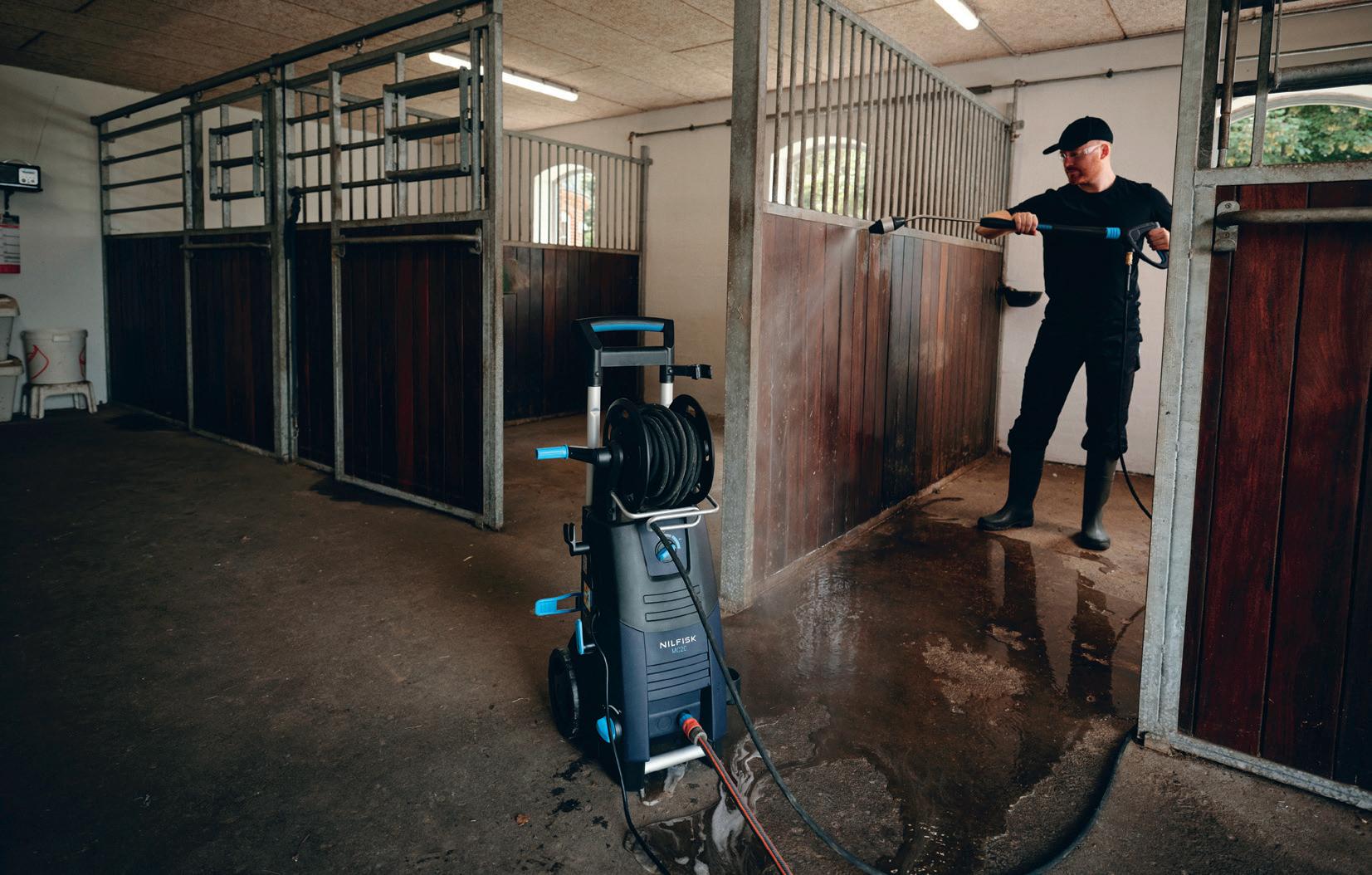
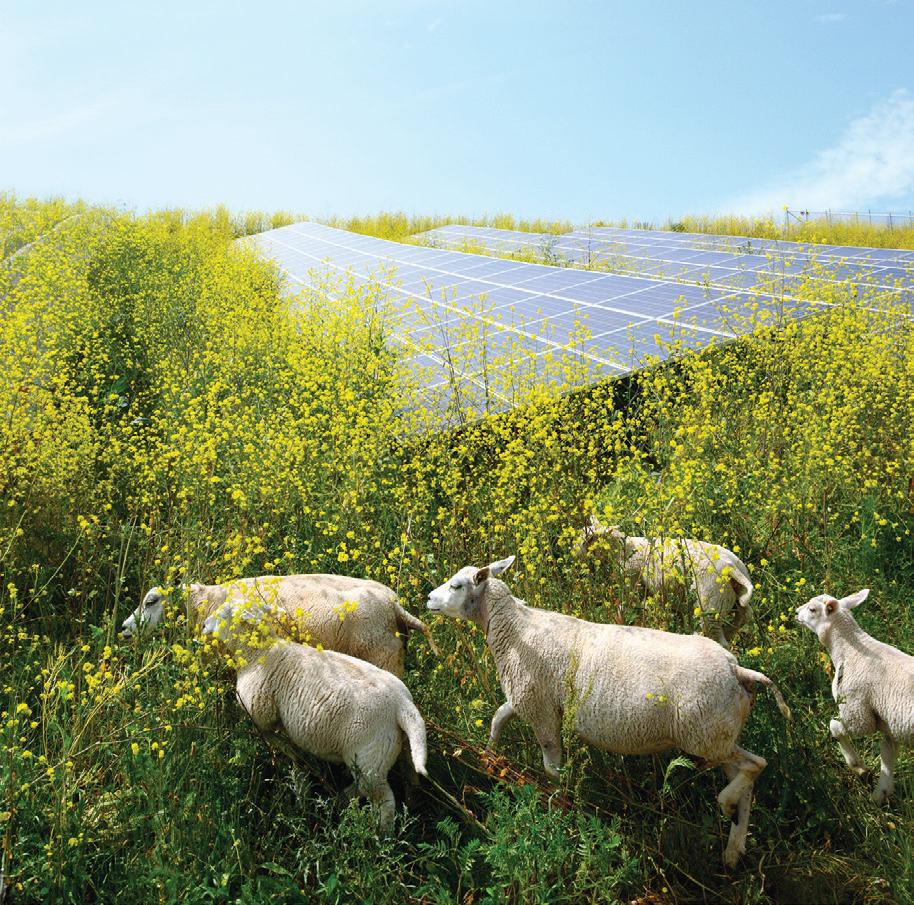
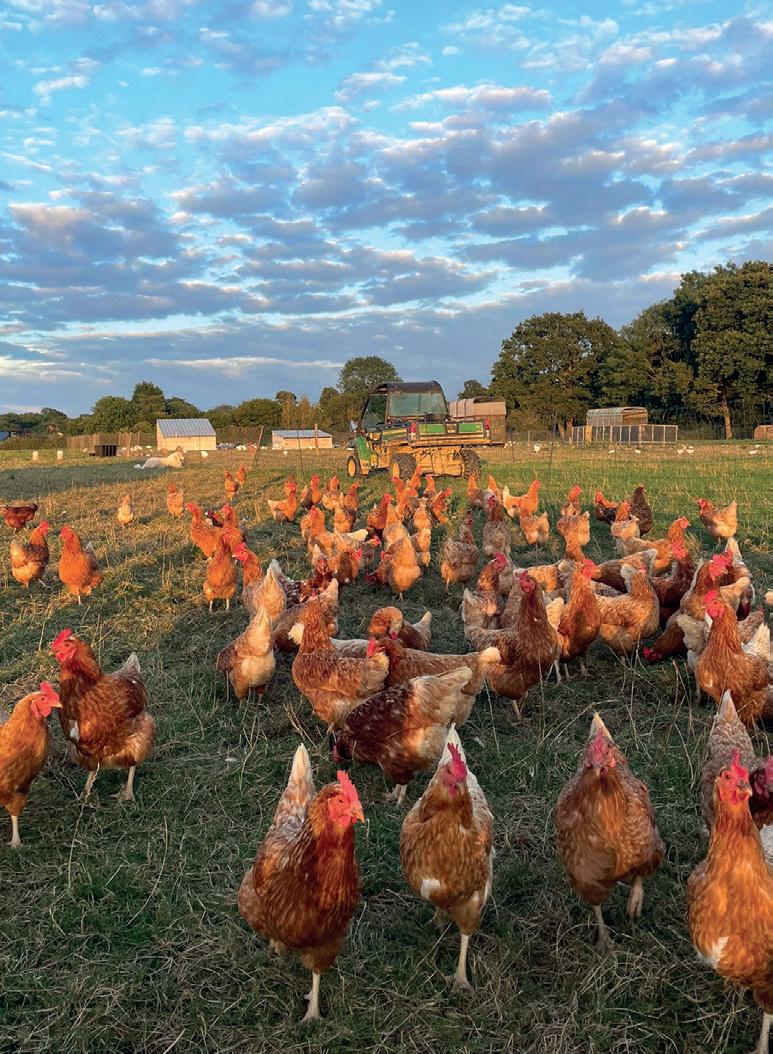
www.kelsey.co.uk
Cover picture: Shutterstock.com
14 KENT FARMING CONFERENCE
Is regen ag the way forward? 24 FARM EXPO 2025 PREVIEW
The South East’s largest agricultural and machinery show, Farm Expo, will return for its sixth year at the Kent Showground in Maidstone on 5 March 2025. 34 PRESSURE CLEAN
New machines, hiring options to spread the cost and a wide range of cleaning equipment are all on offer from Pressure Clean as 2025 heralds another busy year.
A Hampshire farmer has said the abattoir crisis is threatening a wide range of small businesses by adding to the pressure on farm shops.
Hampshire farmer David Janaway was responding to the announcement by Newman’s Abattoir in Farnborough that it would be shutting its doors from the end of January.
The closure of Newman’s, an independent family business, is another major blow to livestock farmers across the South East who have seen several small and medium-sized abattoirs close in recent years, meaning they face longer journeys and higher costs as well as potentially adding to the stress of animals heading for slaughter.
The Janaway family runs a mixed arable and livestock farm, near Hook, as well as the award-winning Newlyns Farm Shop, which celebrated its 20th anniversary last year.
David Janaway said: “We currently are a 35-minute drive from the abattoir but, with Newman’s closing, we will now face a journey of about an hour and 50 minutes. We are often taking just a small number of sheep and pigs for slaughter and it makes that less viable.
“With many farm businesses like ours running farm shops, small innovative food producers making cheese, chutneys and jams and other local products rely on us to sell their goods, rather than the big supermarkets.
“The abattoir shortage impacts a wideranging sector of small, innovative, food producers, people who are passionate about producing good quality local food and caring for their animals. It’s a big problem in this region and nationwide as well.”
William Newman, who co-owns Newman’s Abattoir with his brother Robert, said: “This is a very sad day for us. Our grandfather started this business in the late 1950s. We felt we
gave a very good and much-needed service.
“We will continue our wholesale meat business and send our own animals elsewhere for slaughter. We will support our customers and offer transport where we can to other abattoirs.”
A new NFU survey of livestock farmers in the South East has found many would be forced to cease trading if the closure trend, blamed on a variety of reasons including lack of labour, lack of infrastructure investment due to low margins, increasing costs from waste disposal and red tape, continues.
Around half of respondents to the survey of 545 livestock farmers in South East counties said that if that happened, they would have to reduce their stocking levels, stop keeping livestock or cease trading.
The NFU wants the Government to recognise the importance of small and
medium-sized abattoirs as critical livestock infrastructure, support investment into these businesses and work with them to make sure official controls are proportionate and collaborative.
NFU Livestock Board chair for the East of England Hugh Broom, who farms near Dorking in Surrey, said: “This latest closure is another significant blow to livestock farmers in the South East and South of England.
“Small and medium-sized abattoirs are vital to the food supply chain and the Government needs to work with the NFU and help us do all we can to support and seek opportunities to grow this sector.
“Ensuring food is safe and healthy always needs to remain the top priority, but that does not mean over burdening operators in the supply chain with excessive red tape and treating them unfairly.”

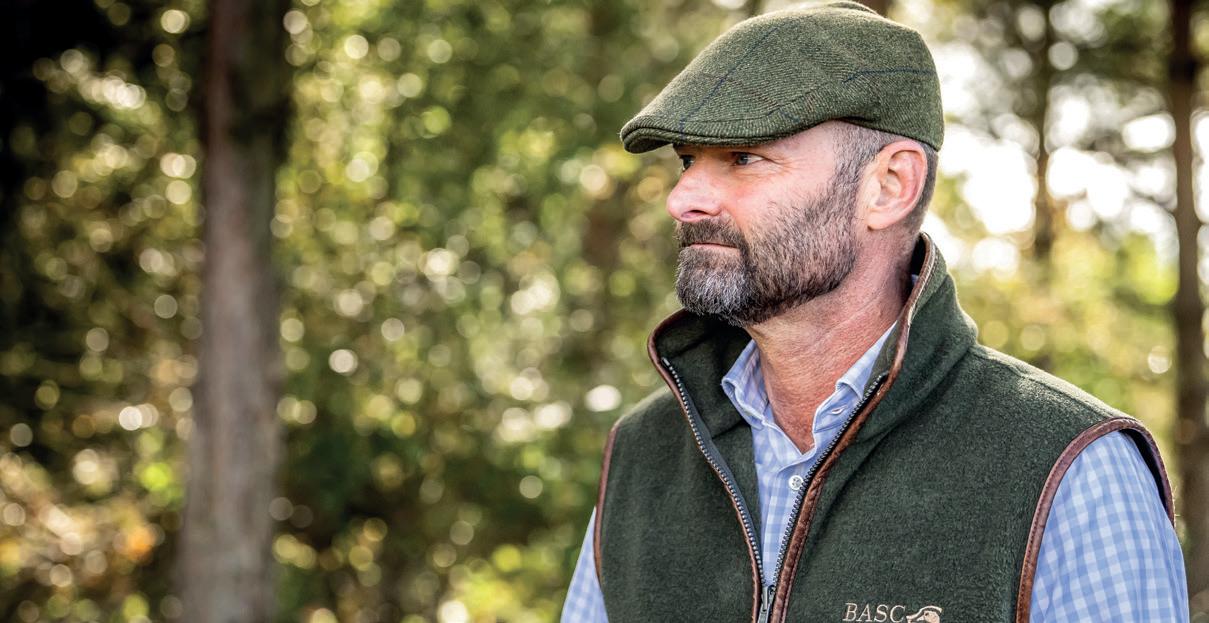
Ian Bell
With the cost of a shotgun certificate set to more than double to £194, the British Association for Shooting and Conservation (BASC) has condemned the incoming Labour Government for hiking fees without fixing the system.
The association has warned that “an inefficient system is an ineffective system” and pointed out that an ineffective system “can allow the wrong people to obtain guns”.
The Home Office in January announced rises of between 111% and 157%, to come into effect on 5 February 2025. The shotgun fee will rise by the biggest percentage, a climb of 144% from £79.50 to £194, while a firearms licence will increase from £88 to £198, a 125% increase.
The Government says the “full cost recovery” charging basis is part of its efforts to cover the increasing costs of the firearms licensing system, which has not seen fees increase since 2014.
BASC responded by criticising inefficiencies in the system, pointing out that more than a quarter of police forces are taking between one and two years to process licensing applications, delays that would be unacceptable for passports or driving licences.
BASC chief executive Ian Bell said: “The Government’s plan to raise fees without addressing the glaring inefficiencies in the system is outrageous. It appears this government is intent on alienating yet another rural constituency.
“Imposing a rise in fees without tackling these inefficiencies endangers public safety and condemns people to having to pay a premium for an inefficient service which in many cases can take years to process applications.
“There has been a complete absence of any proper consultation with stakeholders or the public, despite the fact that this has been done in the past with fee increases, and no transparency on how firearms fees are being calculated by this government.
“The public and lawful firearms owners deserve a licensing process that protects public safety and is fair, efficient, and transparent. BASC will continue to fight for a system that delivers for both public safety and the shooting community.”
If every cloud has a silver lining, then the Government’s decision to subject farmers to inheritance tax by changing the rules around agricultural property relief and business property relief (BPR), has at least highlighted the industry’s ability to mobilise swiftly and to capitalise on every opportunity to make its feelings known.
The NFU used LAMMA, one of agriculture’s biggest showcases, to further its campaign against plans that it claims put “the future of UK farms at serious risk” and launch a ‘pledge’ it wants other businesses to sign “to show they will join our fight to stop this unfair tax and secure the future of British family farming”.
Other businesses are indeed joining the campaign, with supermarkets amongst those speaking out about the proposals to cap what the Country Land and Business Association (CLA) called “vital” inheritance tax reliefs for farmers. President Victoria Vyvyan said it had been “heartening to receive such widespread support from the public, other sectors and businesses”.
Not to be left out, the Central Association of Agricultural Valuers (CAAV) has attacked the figures on which the Government has been relying.
Speaking at the Oxford Farming Conference, secretary and adviser Jeremy Moody said the claim that the changes would affect only 500 farmers, a figure described by Prime Minister Sir Keir Starmer as “robust”, was out “by a factor of five”, and rejected the idea that the figures had been confirmed by the Office for Budget Responsibility.
The NFU has also been crunching the numbers, suggesting that independent analysis shows 75% of farm businesses could be impacted in some way by what it has dubbed “the family farm tax” and that other data has shown changes to BPR could lead to more than 125,000 job losses.
So it’s a strong, generally consistent and all-encompassing campaign that reflects a close-knit farming brotherhood, but will it work? Notwithstanding the fact that politicians don’t usually change their mind (except when it comes to lavishing praise on an incoming US President they once roundly abused), the tax-paying public may not be quite as on board as farmers like to think they are.
This month’s magazine also dares to pose the opposite view, both in a letter to the editor and in Stephen Carr’s outspoken and thought-provoking column. He makes the point that ‘family farm’ is an interesting euphemism for the huge acreages bought up by wealthy individuals to avoid paying tax.
Farmers deserve a break and need the support of the public and of government. This proposed tax change is unfair in many ways, not least because the politicians denied it would happen and did it anyway, but perhaps we need a more nuanced approach that avoids throwing the baby out with the bathwater.

EMAIL YOUR VIEWS, LETTERS OR OPINIONS TO: sef.ed@kelsey.co.uk or write to the address on page 3
® MALCOLM TRIGGS - EDITOR
The first UK-wide, comprehensive review of farm assurance has called for a fundamental reset of the system in a bid to rebuild confidence amongst farmers.
The review, established by the UK farming unions and the Agriculture and Horticulture Development Board (AHDB), was conducted independently by four commissioners.
It concludes that farm assurance is critical to the industry’s future, is delivering necessary assurances on quality to consumers but must make some fundamental changes to address growing frustration amongst farmers in the way it is delivered.
The review makes nine recommendations:
1. On-farm audits must be reduced, simplified and delivered more consistently
2. There must be a transformational step forward in embracing technology
3. Schemes need to reset and/or restate their structures to establish farmers as the driving voice in standards development
4. A new, industry led, initiative must set out the future environmental ambitions for farm assurance
5. The inclusion of regulatory requirements within farm assurance should be conditional on government agreeing a form of ‘earned recognition’
6. There must be greater collaboration between farm assurance schemes across the UK
7. Schemes must better position the UK farming industry in world food markets and in competition with imported food
8. All schemes must review and improve their communication with farmers
9. The Red Tractor scheme must complete the implementation of recommendations in the Campbell Tickell report on its governance. The nine-month review collected evidence from every link in the UK food supply chain. The dissatisfaction expressed by farmers was not uniform across all sectors nor across all nations, notably with assurance schemes in devolved areas working more effectively

than UK-wide schemes. The report recognises where existing arrangements work well but is clear about where changes are essential.
The nine strategic recommendations are supported by 56 operational recommendations, with clear lead bodies and timescales.
Lead Commissioner Dr David Llewellyn said: “The is the first fundamental look at UK farm assurance since it was established in the 1990s. So much has changed over the past 30 years, and we know that further change is on the horizon for the farming industry.
“Farm assurance must be a critical part of that future. However, for that to happen, significant changes are needed to win back farmer confidence where it has been lost, to build on what already works well and to secure a competitive edge for UK farming on the world stage.
He said “competing interests and ambitions for the farm assurance system” had, over time, “added complexity and stress for farmers, many of whom now struggle to identify any real benefits to their business”, adding: “Worse still, many feel they live in a permanent state of jeopardy with ‘make or break’ audits determining whether their businesses can operate or not.”
The reality, he said was that “too many
farmers feel farm assurance is ‘done to them’ rather than ‘delivered with them’,” adding: “It should be better than this.”
Dr Llewellyn went on: “The farmers we consulted want to produce to the highest standards and to be supported by assurance schemes in that endeavour. However, they also want to be appropriately compensated for the considerable effort required by the current farm assurance system.
“We recognise that the system is essential to provide assurance of high production standards. However, it must deliver for all parts of the food chain, including contributing to a process of continuous farming improvement, something the approach of the current assurance system does not always provide.”
The National Beef Association (NBA) welcomed the “thorough and comprehensive report”, with CEO Neil Shand calling on stakeholders to “carefully consider the strategic recommendations outlined”. He went on: “These recommendations offer some clear directions, and we think these directions are important for the industry to follow”, adding: “We are very much enthused by the strategic focus, which aligns closely with the priorities and sentiments expressed within the industry.”
News on the latest research projects affecting apple and pear growers will be shared at a Kent top fruit technical day hosted by British Apples and Pears Ltd (BAPL) and NIAB on Monday 10 February.
The hybrid event will take place in The Mumford Building at NIAB’s East Malling site, with attendance possible on-line as well as in person. It runs from 10am until 4pm.
Growers will be given an update on research projects designed to address some of the industry’s most pressing production problems and will hear from scientists as well as from growers and agronomists who will share their practical experience of new techniques.
Topics include improved low-oxygen storage of Gala, new control opportunities for apple scab and canker and new approaches to forest bug and codling moth control.
Delegates will also find out more about an Innovate UK project to develop precision orchard management for the environment and how the industry is contributing towards carbon capture.
In addition, the Horticulture Crop Protection Ltd team will explain how grower funds are being used to deliver new and alternative plant protection products for the apple and pear sector. There is space for 80 delegates to attend in person, while a virtual connection will be available for anyone unable to travel to the Kent location.
BAPL research programme manager Rachel McGauley said the event was “about ensuring our growers understand the plan for our R&D work and how their money is being spent,”, adding: “The

















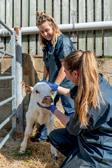
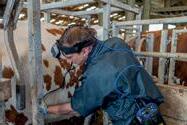












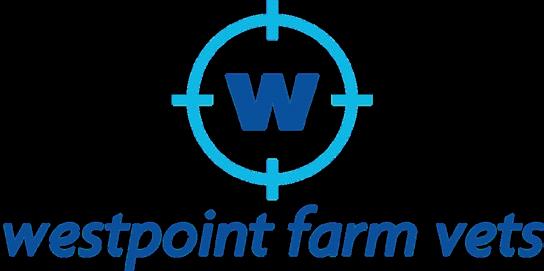
results of research and development work that we have previously commissioned are already delivering helpful results that growers can use in their businesses.”
NIAB knowledge exchange manager Scott Raffle said growers and businesses had been “keen to reinstate events which allow delegates to meet and chat in person rather than relying solely on virtual meetings”.
He went on: “The new facilities that have been developed at East Malling with funding from The East Malling Trust, Growing Kent & Medway and Kent County Council have allowed us to collaborate with British Apples and Pears Ltd to create what will be an informative day with the opportunity for delegates to network.”
�� www.britishapplesandpears.co.uk/research-meeting-2025





Goldfinch on chicory seeds at Allerton
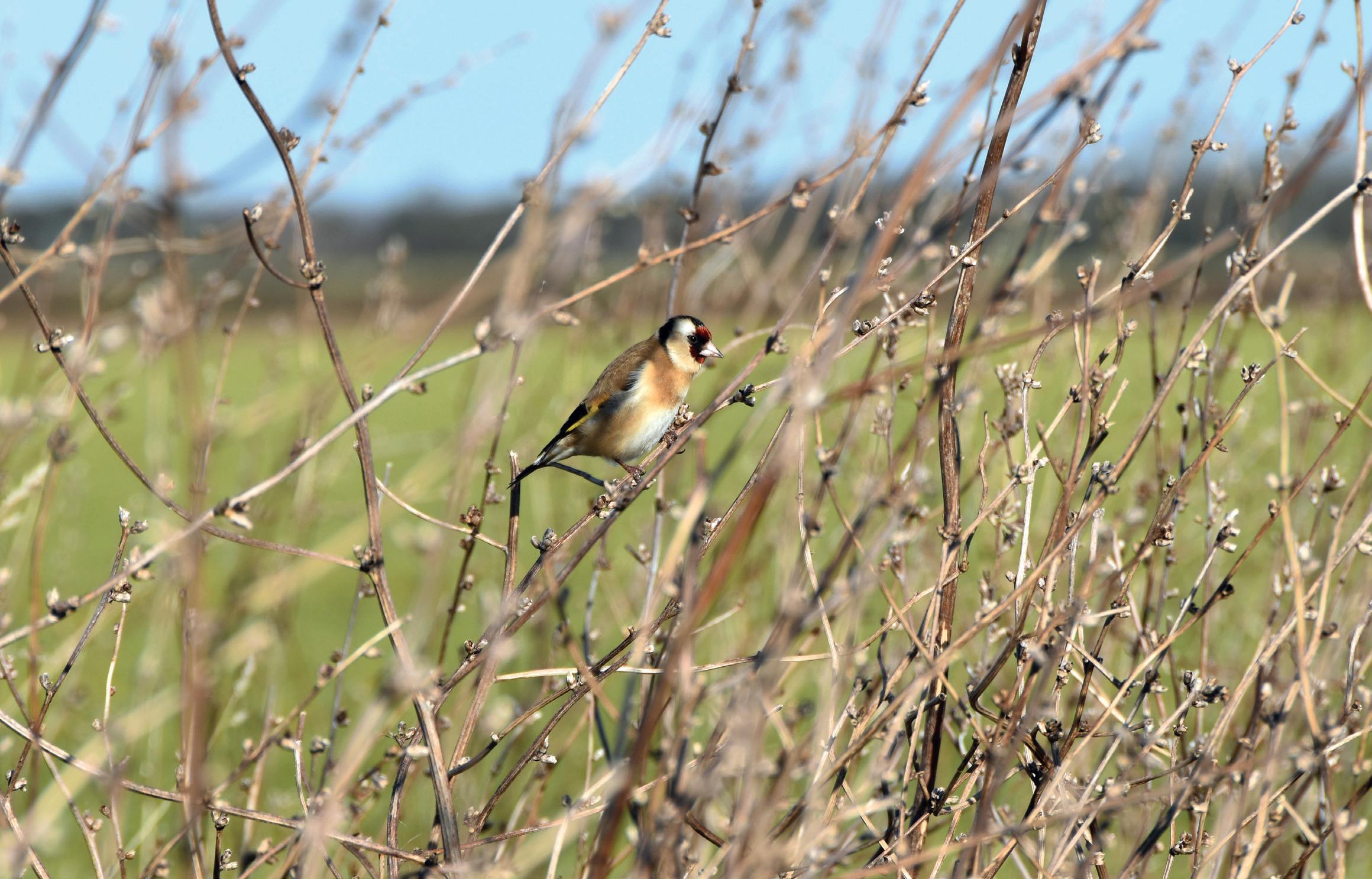
The Game & Wildlife Conservation Trust’s (GWCT) annual census of the UK’s farmland birds will be launched on 7 February by farmer and TV personality Adam Henson, well known from the BBC’s Countryfile programme.
The Big Farmland Bird Count encourages farmers, landowners and wildlife managers to spend 30 minutes recording the different bird species and how many they see of each kind on their farms and surrounding land during a two-week winter window.
The count is in response to the fact that the number of farmland birds has declined by 63% in the past 50 years and reflects the GWCT’s view that “the key to reversing the trend is held by the people who look after the 72% of the UK which is agricultural land”.
The event, sponsored by the NFU, has provided vital data over the past decade to help the GWCT and others understand which farmland birds are in the most serious trouble and how they can be helped. Those taking part in the February 2024 count recorded nearly 395,000
birds during 1,721 surveys.
Adam Henson recently installed additional supplementary feeders on his Cotswold farm, with help from the Trust on the best location for them, and said birds had been flocking to them since they were put up in December.
“Lots of little birds, such as finches and buntings, are using the feeders. They have been put in some long, uncut grass along a hedgerow, which is really good habitat and natural shelter for them. It’s also an overwintering area for lots of invertebrates and insects, providing even more food for hungry birds,” he said.
Adam will be taking part in the Big Farmland Bird Count for the first time, having reported on it on Countryfile last year.
Signing up is free and no specialist knowledge or equipment are required
�� www.bfbc.org.uk/take-part/how-to-take-part
Virgin Money's Senior Director has been promoted to extend the bank’s growing support for large estates and major agri-businesses in England.
East Sussex-based Justin Ellis, currently Virgin Money’s agricultural business manager responsible for clients in the south of England, has been promoted to senior director (England).
Virgin Money said Justin’s new position was designed “to further strengthen the bank’s market-leading support for the UK’s agricultural sector”, pointing out that the bank was committed to providing more than £1.5bn worth of funding to the sector.
The bank went on: “Justin Ellis will continue to take responsibility for the bank’s developing client base, but with a special emphasis on the large estates and major agri-businesses that account for the biggest proportion of the UK’s agricultural industry.”
Virgin Money’s head of agriculture for England, Oliver Maxey, said the appointment reflected the bank’s “deep and abiding commitment to the future of farming and agribusiness”, continuing: “Virgin Money has a long track record of providing banking facilities and investment funding for the industry, and Justin’s
appointment as a senior director reinforces our commitment to providing support where the industry needs it most.
“Our farmers and landowners are facing an unprecedented range of challenges right now, and large estates and agri-businesses are leading the way in making the changes required to meet those challenges.
“Justin has all the skills and experience to help those clients with the banking services, the financial planning advice and the investment funding they need to take our industry forward into a sustainable, productive and economically viable future.”
Justin grew up on the South Downs within an established mixed farming family business and graduated from Newcastle University before working in various farming sectors across the south and east of England, including managing the family dairy farm. He travelled the world to broaden his farming experience in Australia, New Zealand and Zimbabwe before moving into agricultural banking. He joined Clydesdale Bank (now Virgin Money) in 2011.

The Kent Farmers Benevolent Fund was established in the 1960s with the aim of helping farmers and others working in agriculture who found themselves in need of assistance.
Governed by a small group of trustees who have experience in farming as well as other professional backgrounds, the charity is able to consider applications for grants as well as providing support for those in need.
Chairman of the Trustees is Penshurst farmer Graham MacKenzie, who explained: “I
have been involved with the charity for over 10 years, during which time we have been able to reach out to farming families and members of the farming community who have found themselves in difficult and distressing circumstances.
“The advantage we have as a Kent-based charity with a relatively small group of trustees is that we can respond quickly in times of crisis to offer financial support.
“Anybody finding themselves in need should contact Angela Jarvis of Brachers solicitors,
who oversee the charity from their head office in Maidstone.”
Graham added: “We all work in a relatively small community and sometimes farmers find it difficult to ask for help, but we would encourage people to make contact in time of need. Applicants can be reassured of complete discretion regarding any assistance that is offered.”
✉ angelajarvis@brachers.co.uk
Dear Sir,
People do not believe me when I tell them that, if we follow the course which this Marxist Government has set, in about 40 years’ time we shall be heading for starvation in these islands.
In the 1920s and 1930s, farming in Britain went to the wall. There were farm sales almost every day for months on end. This was because we were importing most of our food from the Commonwealth countries.
When the Second World War started, there was a slump in world trade, including food supplies. Suddenly there was not enough food being imported to keep us alive; we had come to within weeks of starvation.
If it had not been for the Atlantic convoys, at great cost in lives lost, and the Dig For Victory campaign, we would have been starved in to surrendering.
Governments in office after the war realised how desperate the situation had been, and they vowed not to let this dreadful prospect happen again. They gave us in farming every incentive to produce more food to make us self-sufficient, at least in the basic commodities.
No government in recent times has learned from history. More and more land is being taken out of agriculture, and more land than ever is being built on.
I was one of many who attended a meeting in Newchurch Village Hall in January to hear about a planned solar farm on Romney Marsh which would take yet more land, most of it grade one agricultural land, out of production.
We are all extremely concerned that this scheme might go ahead, and I would like to thank James and Amanda Farrant and all the other caring and dedicated people who have already done such a lot to oppose these mad proposals.
Those who are responsible for putting their names forward to go into ‘solar farming’, for the sake of money and squandering their assets, should stand aside and allow others to farm and produce food. There are young people who would cherish the opportunity to farm this land and get their hands dirty, even if they did not earn much from their labours.
The ranges at Lydd and Hythe have been under-utilised for decades. Concentrate the training at Lydd, which can accommodate artillery and small arms. Between the Grand Redoubt and Hythe are hundreds of acres of beach which cannot possibly be used to grow food. This is government-owned land through the Ministry of Defence. Put solar panels there!
Already, we have 26 wind turbines just down the road. Already, we have 120 acres of the best land covered in solar panels. We have got our share; that is quite enough for one parish. I worry so much for the future of our nation.
Chris Finn-Kelcey Old Romney
Dear Sir,
The passing of David Sullivan (1941-2024), a 1981 Nuffield Scholar who travelled to New Zealand and Australia to study their sheep industries, will come as sad news for those who were privileged to have met and worked beside this inspirational man.
His study, Sheep Farming – The Human Factor pre-empted what we see today in world agriculture. His thought-provoking report referred to stressful relationships in agriculture which were at that time quietly brushed under the carpet. Amongst the stress factors, and outside personal control, were changes in market prices, disease and weather.
David, the son of a grocer, joined 1981 Scholar Chris Older's father at Romney Marsh Farms and he went on to farm sheep in Hampshire, Wiltshire and Berkshire.
David's report tells of an epiphany when seeing share farming agreements in New Zealand. Returning to the UK, David and the late Richard Stratton, of the then Stratton and Holborrow land agents, perfected the wording for share farming agreements which were seen as an accountable way to farm.
At its prime, over 2,000 ewe lambs were share-farmed annually with landowners, mostly on downland. Latterly, David progressed to lambing mule ewes, although foot and mouth disease took its toll, and from 2016 he lambed a flock of Wairere ewes.
David had a close association with Sparsholt College, where he headed the sheep management course for many years. Having met Godfrey Bowen in New Zealand, David was a disciple of the new Bowen shearing method, which spread worldwide, and sheared for 63 consecutive seasons.
The John Edgar farm management course for mature students was part of David’s portfolio of good works and he was instigator and past chairman of the Hampshire Sheep group.
A committed Christian, David spoke at 12 churches in New Zealand on his scholarship tour and was one of the founder Trustees of the Hampshire Christian Trust camp site at Lockerley, Hampshire, where children of all ages, sometimes with parents, can escape the bustle of town life. His son Andrew is continuing this excellent initiative as a Trustee.
Eileen, David's wife, died in 2021. He leaves sons Andrew and Peter, five grandchildren and four great grandchildren. A memorial service will be held at Andover Community Church on Monday 3 February at 2pm.
Ted Sclater
Andover, Hampshire
Dear Sir,
Having read a great deal in your pages in the past two issues about inheritance tax (IHT), I think balanced reporting justifies a view of the other side of the coin, although braving the readers of a farming magazine is asking for trouble (hence I have asked for my name to be withheld).
So why do farmers think they are so entitled? Why should they be a special case? They own 70% of the land yet contribute 0.6% to the economy and resent paying even half the IHT that everyone else pays. They totally block the streets of London with tractors with no sanctions, whereas Just Stop Oil protesters get five years in jail for doing the same.
Why should farmers get a free ride and avoid all the tax that everyone else has to pay? If we all need to contribute, they must too. They've had this advantage for a long time.
They talk of toil and love put into the land. A lot of us are asset rich and cash poor. My family home had been in the family for 160 years, handed down through the generations. My father and his ancestors fought poverty to keep and repair it. Their blood was in every repair
and bit of work they did on it. It was their treasured home which they loved.
I had to sell it to pay the IHT when my father died, and it broke my heart. I felt I had betrayed my ancestors. I paid that tax at 40% not 20%. And with a threshold of £325,000 not £3 million. And paid in six months, not 10 years.
It isn't just farmers who are affected by IHT, but up until now, they have been free of IHT for 40 years. So they have to sell a bit of land. Welcome to the world the rest of us live in.
I'm sure you will all tell me that my home didn't feed the nation. No, but it would have been my home. Shelter is as much a necessity of life as food.
I do feel that IHT should be abolished, full stop. But until then, a fairer system will have to suffice, so please stop complaining and count yourselves lucky to have avoided this tax for so long.
Name withheld
Editor’s note – I normally avoid publishing anonymous letters as strenuously as I do amateur poetry, but the author has given me her name and I felt her views were important, and perhaps thoughtprovoking, enough to justify breaking the rules on this occasion. Feel free to put the other side of the argument in the next edition.
• Fast
• Expert advice
• Excellent service and delivery

• Full range of accessories

01435 862992 sales@englishwoodlands.com www.englishwoodlands.com
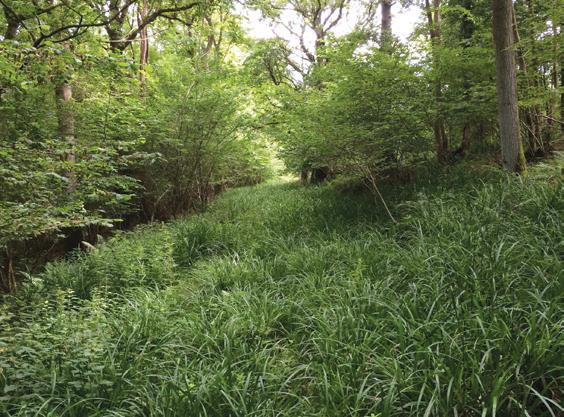

Our roads will withstand the heaviest lorries and farm vehicles. Constructed with our own materials which makes us one of the most competitive companies around.
We also create ditches and culverts for the wettest of areas to cross

Comments on the parlous state of British bird life regularly produce the knee jerk response calling for predator ‘control’.
The sad fact is that the calls are right, but the target is wrong. The problem lies squarely with us, the planet’s top predator, and there is little appetite for a cull there.
Animals increase when they have sufficient food, habitat and survival rate to breed. We are a perfect example of this law of nature, for we have commandeered the planet’s resources for food and habitat, increased our survival rate and, hey ho, we are pushing 10 billion souls. So, sadly it is not surprising that all todays’ ecological disasters lie at our door.
Remember that 95% of mammals on the planet are humans and those we domesticated, right down to our granddaughter’s hamster.
The Game and Wildlife Conservation Trust (GWCT) argues, from its studies, that restoring species depends on providing habitat, food and predator control. Correspondence that follows always picks on the last, which is the least important.
The GWCT does some excellent research, which I have sometimes supported, but it has a constituency with the potential for bias. The essence of game conservancy is to produce a surplus for sport, and that really requires removing competitors that affect yields. Prey can only tolerate so much predation, but must that always be our privilege?
The GWCT demonstrated increasing yields of grouse and other upland nesting birds from active moor management, including legal predator control. Sadly, on too many moors there is still illegal destruction of raptors like the hen harrier.
Both the GWCT and the RSPB have shown
that diversionary feeding of harriers, or rearing young ‘off site’, boosts the population of grouse chicks. Left to nature, however, there would be too few grouse on the moors worth shooting, though harriers and grouse would remain in a dynamic balance.
Predator culling, even elimination, is undeniably necessary where we have caused the problem by introducing species to naïve populations, so risking extinctions. Many islands around the world have been expensively cleared of introductions, such as rats, mice and hedgehogs to save resident colonies of seabirds.
New Zealand has a serious problem from so many European species decimating native ones, to the point where there is little pristine habitat left. Culling is also legitimate when native birds, such as the curlew, are at such a low ebb that they need all the help they can get to arrest decline and initiate recovery.
So when should farmers reach for traps and guns, and to what extent are predators the cause of our general decline in bird numbers and species?
From my experience, and after reading the available evidence, seldom. When we had a large herd of outdoor pigs, our jackdaw, magpie and crow numbers rose to the point they darkened the sky, fueled by the abundance of pignuts.
Cull the corvids or manage feeding better? We resorted to Larsen traps, but the corvid epidemic persisted until the pigs went. In this situation the corvids had little impact on passerines because of the continuous supply of pignuts. They had no need to seek awkward alternatives.
So, when predators increase beyond normal numbers, how are we causing it?

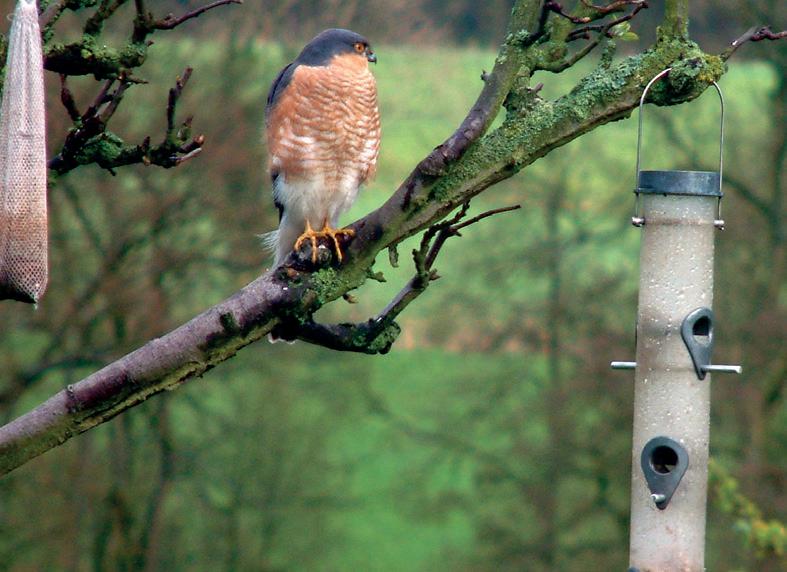
An elegant long-term case study of bird populations on two farms, the Allerton estate and the RSPB’s Hope Farm, was published by GWCT ecologists (Aebischer et al 2016. Bird Study, 63; 10-30). This showed that improving habitat led to a sustained increase in the number and species of farmland birds on both farms.
There was, however, a ‘but’. The increase depended upon corvid control at Allerton, while none was needed at Hope Farm. Corvid density was higher at Allerton. Why? Allerton is more wooded, favouring corvids, and it also hosts a shoot. Food for pheasants and partridge is also great for corvids.
Again, there is a ‘but’, for gamebird feeding is not continuous, so corvids, now in greater numbers, have to find alternative sources of food to rear chicks, putting greater pressure on the passerines. No shoot, fewer corvids, more passerines?
My reason for labouring the point is that studies such as this are informative but incomplete. Good habitat and better-targeted gamebird feeding could stop corvid numbers rising. Numbers are demonstrably sensitive to food supply.
Shoots also have other ecological consequences from so many big alien birds and the amount of grain available. So does the way we farm, for different reasons. We cannot escape culpability by pointing fingers, for the list of our enthusiastic stupidity is long and troublesome.
On a more positive note, I would urge South East Farmer readers to take part in the GWCT’s Big Farmland Bird Count between 7 and 23 February. Details are on their website and it delivers useful citizen science. It is also fun.
A2A group members will be taking part in the Big Farmland Bird Count in February. Pictured are two long tailed tits As I put pen to paper, the air is cold but the sun is shining and it is crisp and dry underfoot.
As livestock farmers with sheep out on mainly electric-fenced keep and cattle being strip-grazed on fodder beet, this pleasant interlude from the previous long, mild, wet weather is much appreciated. Our 900 strong, March-lambing flock has scanned well with only a few barren but with rather too many triplets and quads and not enough singles. They have all been shed off into their scanned groups so they can be fed appropriately according to the number of lambs expected.
The cull ewe trade is strong at present so the ‘barreners’ will be sold to take advantage of the good prices. The April lambers have yet to be scanned but are looking well.
One of the present worries for local livestock farmers is the imminent loss of Farnborough abattoir and the uncertain long-term future of other abattoirs. Local abattoirs play a vital role in the rural economy, support the environment by reducing food miles and benefit animal welfare by reducing journey time to slaughter.
All counties throughout the UK should have an infrastructure policy that ensures there is adequate slaughtering facilities for the local livestock so they do not have too far to travel and local consumers can purchase quality goods produced by their local farmers. This issue is high on our 2025 to do list in West Sussex and the NFU will be lobbying both West Sussex County Council and local MPs.
Unfortunately, as well as our day-to-day business of farming, the 2025 'to do list' is growing daily, not helped by the autumn budget and its attack on private businesses, including the now much-publicised family farm tax.
At the time of writing, farmers across the South East have been busily preparing

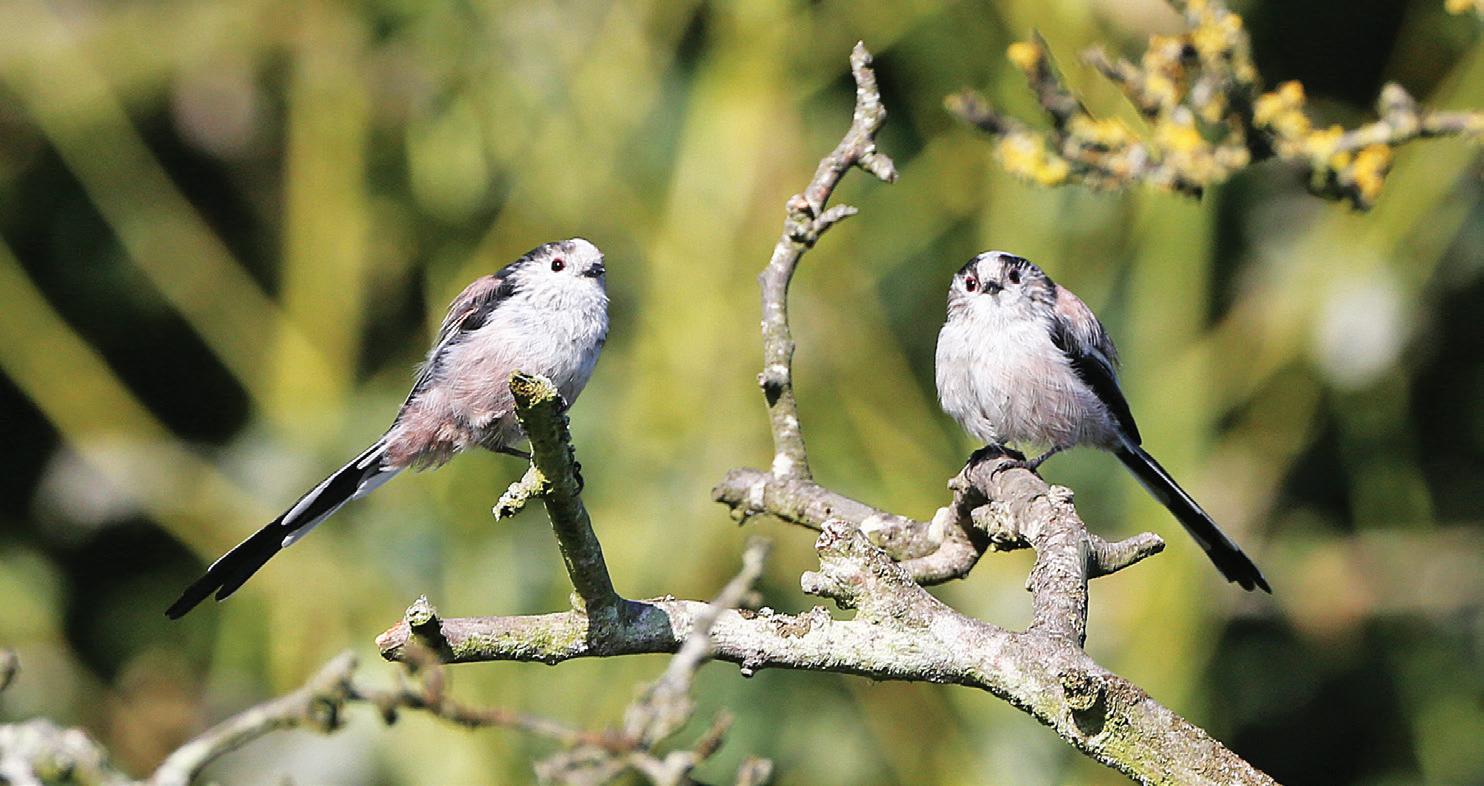
By NFU West Sussex council representative Caroline Harriott, who is also an NFU Farmers for Schools ambassador, a director of Arun to Adur (A2) farm cluster group, chair of Chichester Young Farmers’ Club advisory group and A2A group representative on the South Downs National Park Farming in Protected Landscapes panel. The family farming business based at Arundel consists of a 180 cow dairy unit and beef, sheep and arable enterprises on mainly tenanted land.
community events as part of the NFU’s National Day of Unity on January 25, aimed at showing the real impact the family farm tax would have on British farmers, to thank the public for their ongoing support and to show the Government that we are not going away.
Sticking together and playing to all our strengths is vital to keep agriculture, the rural economy and all its allied businesses viable. I feel it is important that all children understand the connection between food and farming,
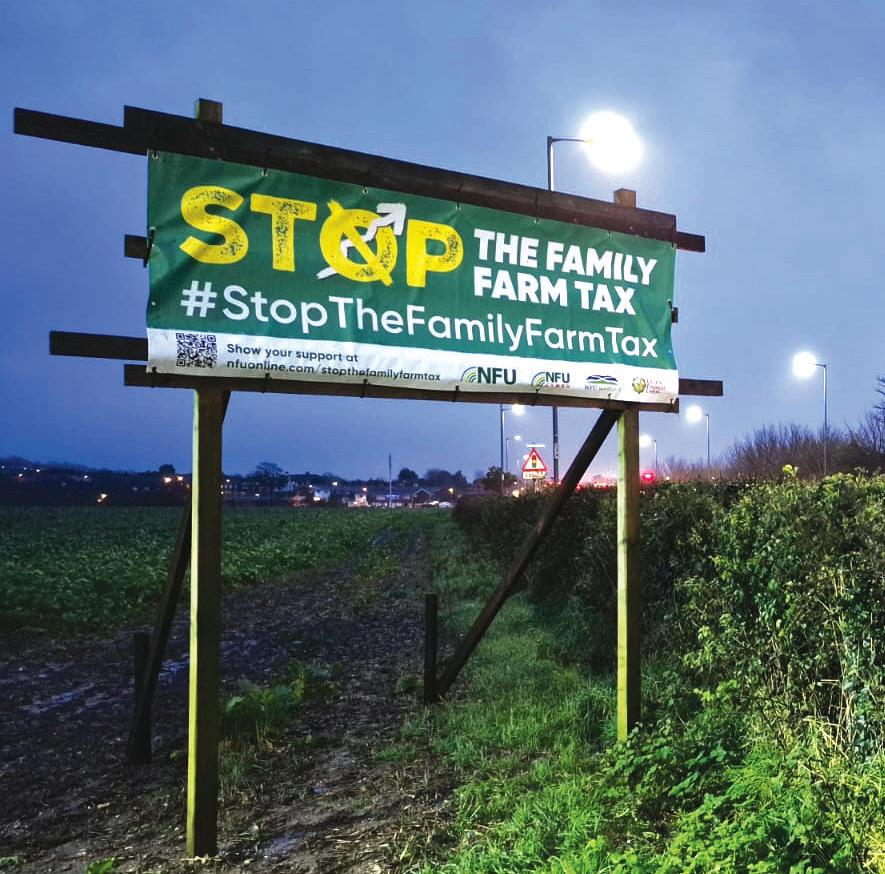
and the NFU will keep providing opportunities for school children to get out onto farms and also bring farmers into classrooms.
Some Arun to Adur (A2A) group members will be taking part in the Game and Wildlife Conservation Trust’s Big Farmland Bird Count from February 7 to February 23. It involves just 30 minutes counting and submitting a simple online form indicating bird species and numbers on farm.
The A2A group has received South Downs National Park Farming in Protected Landscapes funding for bird feeding buckets plus food so that, at this time of year, when the birds are short of berries and seeds, their natural feed sources are supplemented. Supplementary winter feeding has helped our farmland bird numbers increase dramatically over the past three years.
There is a lot to fight for at the moment, but every day I try to find time also to realise how lucky I am, breathe in that fresh air and go and find a friend to talk to.
A Q&A session that felt as if it could have gone on late into the evening was a clear indication that the line-up of speakers at the Kent Farming Conference 2025 was spot on.
Even the thought of the splendid postconference refreshments lined up by organisers the Kent County Agricultural Society wasn’t enough to stop the fully engaged audience lining up to put questions to the well-selected panel.
In response, the expert panel, made up of host Andrew “Wardy” Ward MBE, Silas HedleyLawrence and Sir Peter Kendall, responded with enthusiasm and good humour to a range of questions that explored everything from regenerative agriculture – the advertised theme of the debate – to, inevitably, the budget’s well-publicised tax plans.
For the Q&A session, the speakers were joined by local farmers Doug Wanstall and Peter Bromley, making for a lively debate in response to the topic: A sector divided: Is regenerative farming the way forward?
The carefully chosen speakers guaranteed an interesting response to the question, with Silas’ almost evangelical approach to the benefits of regenerative farming contrasting to a greater or lesser extent with both
Andrew’s and Sir Peter’s more measured approach and Peter admitting to being “probably the least regen person in the room”.
It made for a fascinating evening at the Kent Showground at Detling and left the audience with plenty to think about on topics that included the Environment Agency’s response to keeping waterways clear and the threat of climate change, a subject on which host Andrew revealed himself to be somewhat cynical.
In his opening address to what was the fourth annual conference of its kind, the Lincolnshire-based farmer and founder of Forage Aid said that he had stopped ploughing 22 years ago, farmed sympathetically, had planted wildflower
meadows and worked to avoid soil erosion.
But he said that after a seven-year trial in which he had grown the same crop on two adjacent fields, one conventionally and one using direct drilling and cover crops, he had found the return on the ‘regen’ plot to be £182 per hectare worse than the other when averaged across the period.
Andrew also raised eyebrows on the panel when he said that having kept records of rainfall across the years, the wettest weather he had seen had been back in 2002. The reason for flooding, he suggested, was not more rain but the result of the Environment Agency neglecting proper waterway maintenance.
While the audience murmured its
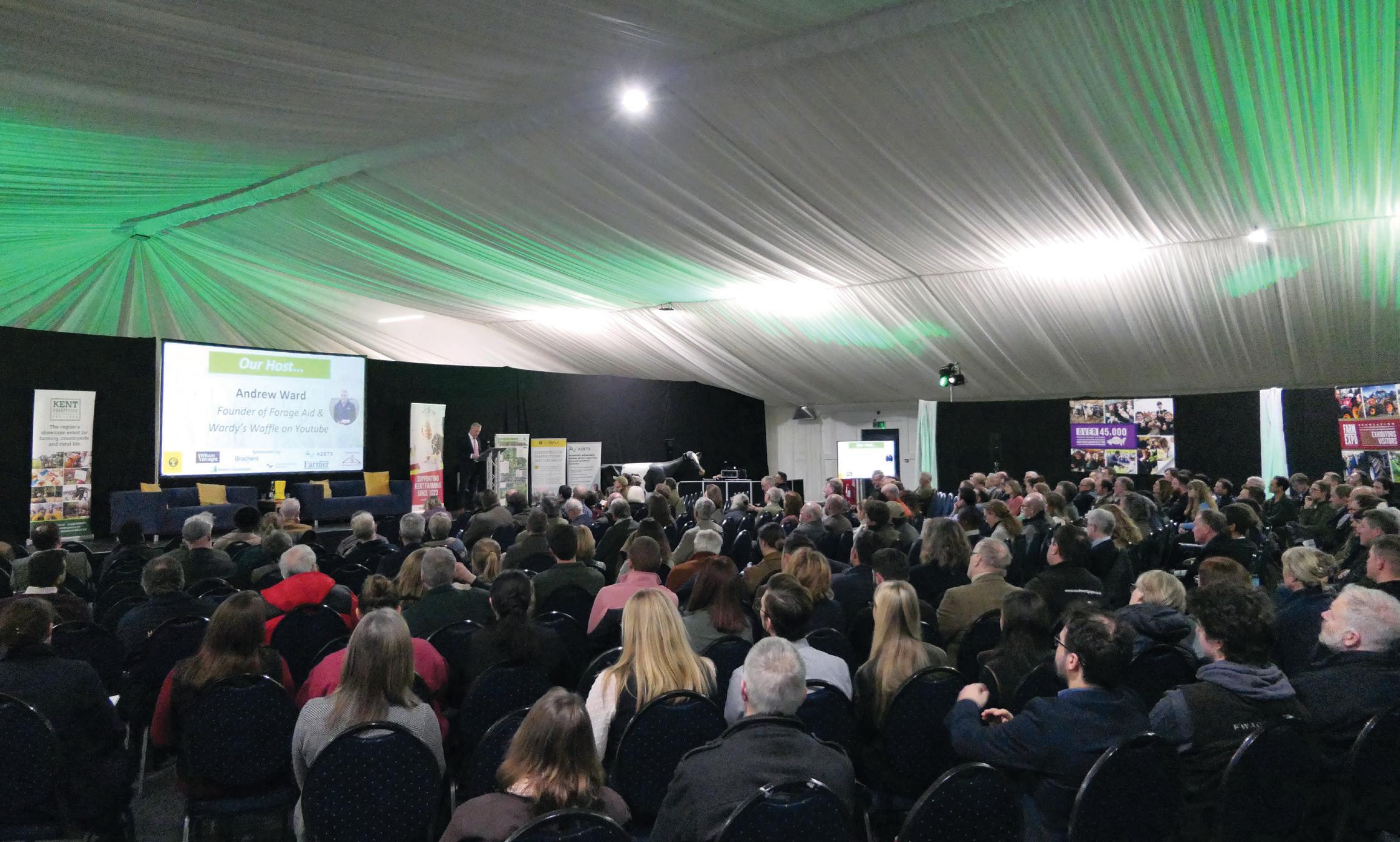
agreement regarding what he saw as the agency’s failings, it was a comment that later prompted Sir Peter to stress in response that “climate change is the most scary thing”, adding: “Andrew is denying the science.”
Andrew was followed by the first of the two speakers, agroecological farmer, coach and consultant Silas, who has a decade of experience in science-led regenerative farming with an emphasis on soil health as the basis for higher yields, lower input costs and greater biodiversity.
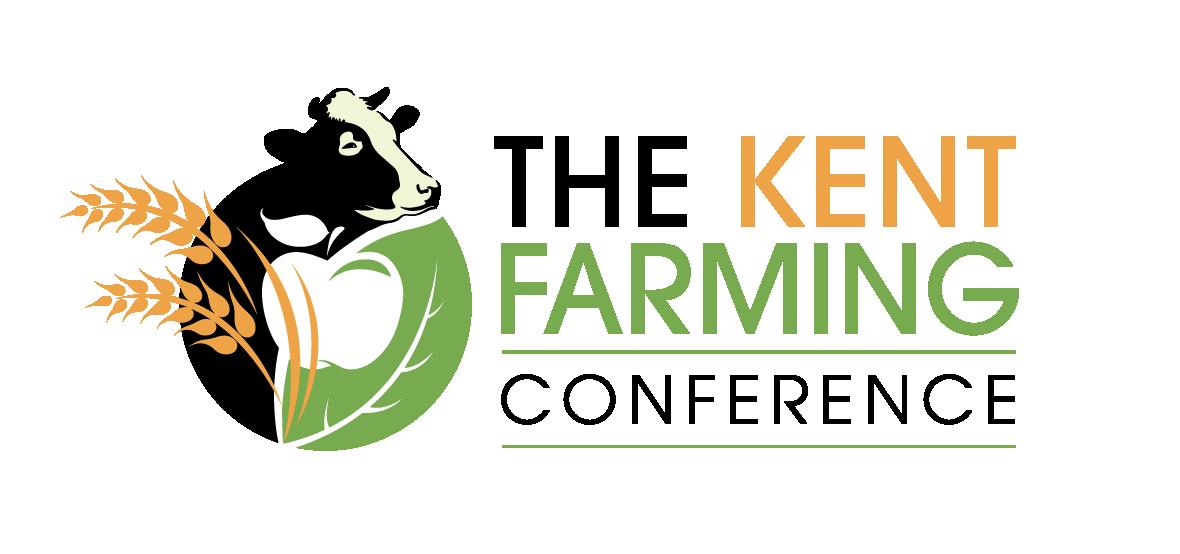
wrong,” he said, before highlighting the need to move away from a dependency on man-made chemicals.
In a wide-ranging and comprehensive presentation, Silas made a convincing case for ‘regen ag’ but also stressed that the aim was not to be prescriptive but to give farmers a “wider range of tools” which they could use to make their own systems work better.
The focus on soil health, allowing better root penetration and water storage, improving mineral content and microbiology and boosting aeration, was persuasive, as was his call for farmers to “work with nature, don’t try to beat it”. It was, he said “about collaboration, not competition, abundance not scarcity”.
In answer to the question posed by the conference title, he said the sector was not divided. “It’s not a question of right or

On new initiatives, Silas said that “teaming up” with biology and nature was also good for carbon storage, water retention and other environmental ‘goodies’, allowing farmers to benefit from the new opportunities offered by such things as biodiversity net gain and the sustainable farming incentive.
Sir Peter, fifth-generation arable farmer and former president of the NFU, now runs a broiler unit that is heavily dependent on renewable energy and is a keen advocate of circular systems and of changing farming’s image to one that is “innovative, exciting and central to facing global challenges”. He began, though, by stressing that he “likes to grow a big crop of wheat”.
Also a former chair of the Agriculture and Horticulture Development Board, Sir Peter
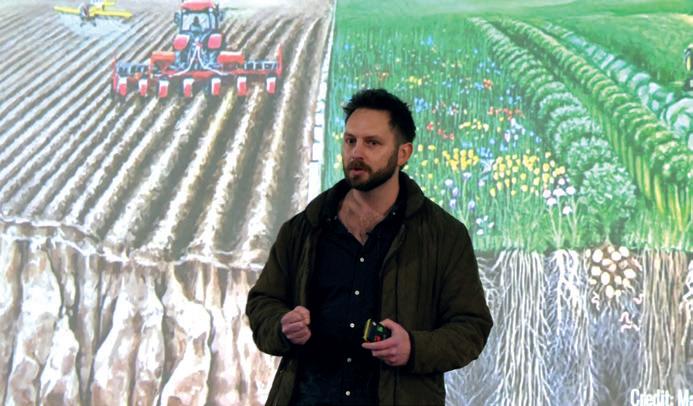
added to his climate change warning by stressing also that the country needed to produce more food to help feed a growing world population but also had to lower its environmental footprint and improve biodiversity. The UK should not be dependent on imported food, he stressed.
Sir Peter pointed out, though, that there were challenges for those on land like his own in East Bedfordshire, including the difficulty of following regenerative principles on a large scale, dealing with heavy, poorly drained soils and tackling blackgrass. Rotational ploughing, he said, had worked well after he tried not ploughing for ten years but found that “the blackgrass was dreadful”.
Stressing that farmers needed to be persuaded by economic analysis as well as ecological analysis and “can’t afford to gamble”, he nonetheless concluded that “doing nothing is not an option”.


Last month I took a picture of our sheepdogs driving lambs down the lane. What I failed to reveal is that three lambs had climbed the high bank, feasting on ivy, and were hidden from view. None of the moving team noticed. We turned the lambs into the home field and shut the gate, congratulating ourselves on a smooth operation.
Our triumph was short-lived. We were alerted to our mistake and promptly reassembled to round up the escapees. These lambs, however, having tasted a brief spell of freedom, had other ideas. ‘Uncooperative’ is an understatement; they were wild, and embarrassingly managed to flatten a passing motorist who had stopped to help. Eventually they found a gap in the hedge and escaped onto neighbouring land. Deciding it was best to let them calm down, we retreated. By the next day these lambs had returned to the original pasture they’d been grazing. We nicknamed them “the feral lambs”. While we managed to shut them in a paddock, getting near them was another matter. They were fast and agile, effortlessly clearing sheep hurdles. It took weeks of coaxing them with feed before we finally secured them in a trailer and returned them home. According to the
landowners who witnessed our struggles, it was “better entertainment than Netflix”. Sometimes mundane farming tasks turn into far more adventure than we’d like. For example, my recent experience checking the marsh flock. The ewes needed new grazing, so I called them to follow me towards the gate. Suddenly, I felt an impact from behind, a force so strong it ricocheted up my spine and sent me sprawling face first into a heap on the ground.
I looked up to see a menacing ram bearing down on me for round two. Thankfully I’d held onto my crook, (which I carry in case I need to rescue sheep from the dyke). I used it to fend off my attacker. I knew I should have removed the rams sooner. Ungrateful brute, he had better sire some descent lambs or he’ll be heading to market. Now I always take a dog as backup.
A few days later, winter calving began, a time when newly calved cows can be notoriously tetchy. The fifth cow to calve was mothering her calf who would keep sucking on the side of the teat, consequently getting hungry and disillusioned. To help, we decided to feed the cow while assisting the calf with its connection technique.
My other half was supervising this while I was behind preventing it from backing away.
Unfortunately, we underestimated how quickly the cow would finish her food. She turned, spotted me and charged. I wasn’t quick enough, she knocked my head against the hurdle and blood streamed down my neck and face. I didn’t hang about.
In hindsight we should have put a halter on the cow, but it was late and we were focused on ensuring the calf got its colostrum. At least we succeeded; the calf finally clued up. As for me, I cleaned up my two head gashes and applied pressure until the bleeding eased. Against family advice I stayed home rather than seek medical attention. It’s sore but it’s healing. Lesson learned: err on the side of caution next time.
Winter calving is now successfully completed. Notably, a 13 year-old British blue calved naturally, producing a pair of robust twins. She had us worried post calving because she became lethargic and lost her appetite. Her temperature was normal, and she continued to drink water. We tried tempting her with a range of enticing foods with little success. We consulted the vet, who suggested giving Metacam and Betamox, and we also gave her a mineral bolus. Five days later the cow perked up, returning to normal behaviour. Perhaps the twins were a shock to her system.
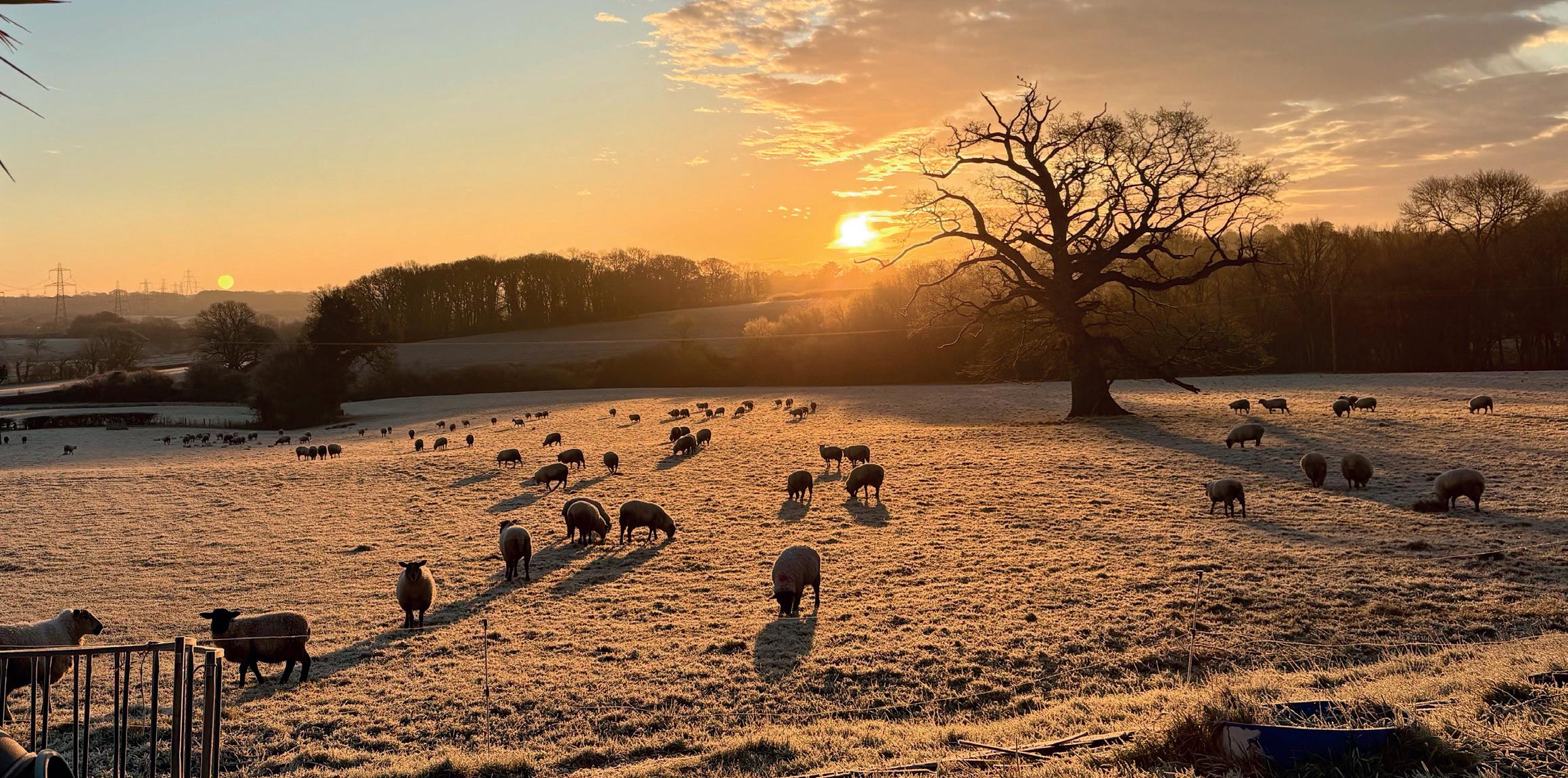
I enjoy the start of a new year, opening up a fresh diary, new plans, and the hope that 2025 will bring better things. Early January saw us undergo a Red Tractor inspection. If we didn’t sell some cattle to ABP or Dunbia, I’d gladly forego this exercise. The paperwork, writing down the reason for giving each medication, is infuriating. The tick box side of today’s farming is endured, not enjoyed. Bureaucracy is strangling UK business growth. According to celebrity farmer Gareth Wyn Jones, it costs £155 million annually to run DEFRA.
Our kitchen table seems to act as a magnet for an assortment of clutter; paperwork, files, keys, cakes, plates, cups and more. Over Christmas my brother popped in for a visit. As he sipped his tea, he surveyed the chaos and commented: “Your column is called At the kitchen table, but I’ve never actually seen your table.” Harsh, but fair; classic sibling banter. I didn’t confess that I’d been tempted to buy a plaque that read: A clean kitchen is a sign of a wasted life.
For 2025 my resolutions are positive thinking and a clear kitchen table.
On a successful note, have you heard of Fresh Start for Hens? With only one hen left and no luck finding point-of-lay pullets, it was suggested I try the above charity. Although initially I was sceptical, as it’s all done via emails and I worry about online scams. I donated the £2.75 per hen requested. A few days later I was told I could collect my six hens from a housing estate in Hailsham. These hens settled in beautifully, and yesterday I collected six eggs. I’m thrilled.
We’ve just enjoyed a brief spell of frosty nights and glorious sunny days. The golden sunrises have been stunning. Of course, the freezing temperatures cause associated problems, like frozen pipes and troughs, tractors needing extra cosseting to get started, icy patches to be wary of etc., but its preferable to wet, murky, mud-making weather and the bonus is that dogs stay clean. That said, swans sliding along on top of the frozen dykes are less happy. Hopefully the cold will lower the bluetongue risk and kill off other unwanted bugs and parasites.
The first day of February marked the end of the pheasant shooting season. My daughter’s terrier, our spaniels and I thoroughly enjoyed being a part of this community.




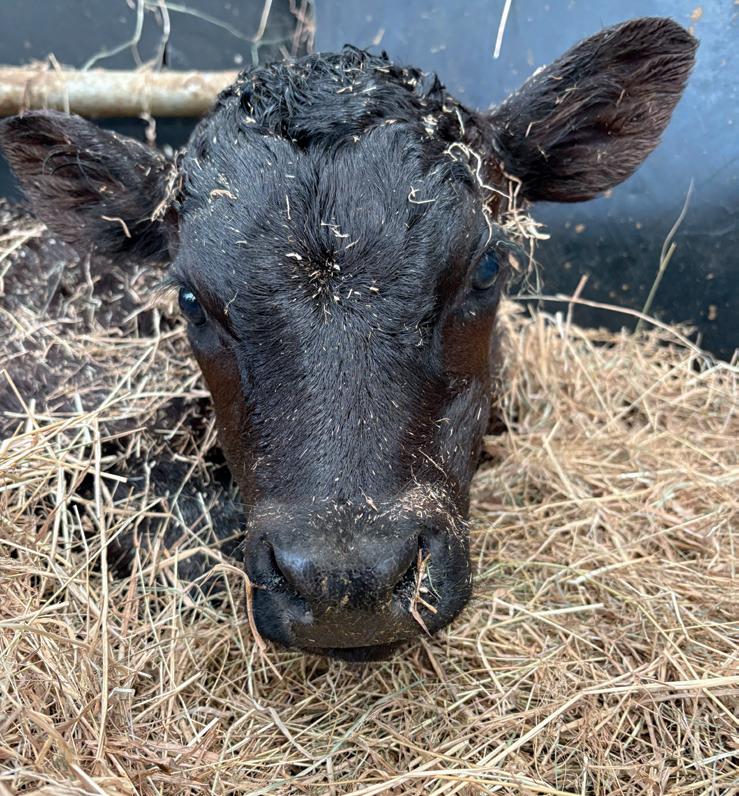
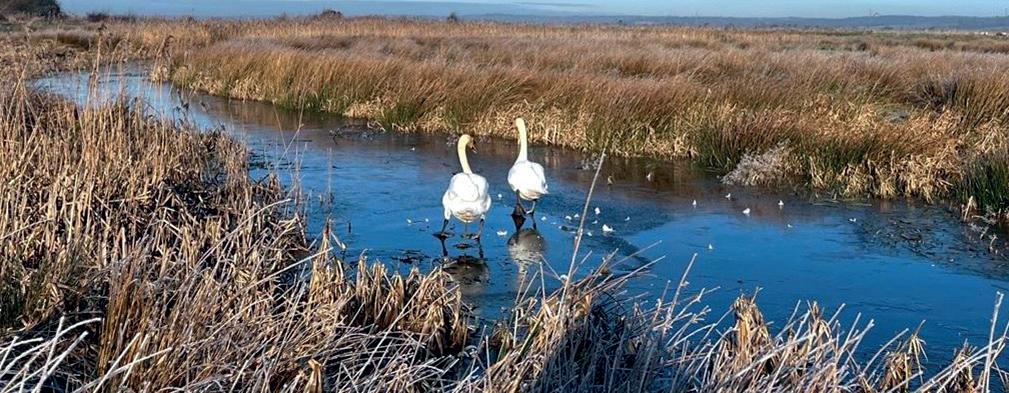


This month Nigel Akehurst visits Brightleigh Farm, near Redhill in Surrey, to meet regenerative livestock farmers Nigel and Penny Franklin, along with Penny’s daughter Ellie. Together they rear 100% pasture-fed beef, free range pigs and poultry, selling their produce direct to customers.
I found myself driving up the A22 on an overcast damp morning. Turning off at Newchapel I followed the route to Outwood, spotting the large signage for Brightleigh Farm Shop on my left. Driving up the concrete track, I parked in front of their pop-up farm shop and was warmly welcomed by Penny and Nigel.
Penny’s family has farmed at Brightleigh Farm since 1959, when her father, Jim Brunton – then
a young man from a non-farming background – used a modest inheritance from his late father to put down a deposit on the 52-hectare farm.
With his mother Miriam in tow, he arrived at Brightleigh Farm ready to start a new life.
“He started with just eight Ayrshire cows,” Penny recalled. “They were brought down from Scotland by a local haulier, Bowers & Sons of Turners Hill" who they still use to this day. “My father poured all his energy into building the herd and modernising the old sheds.”
Over the next few decades, Penny’s father
expanded the herd to 100 cattle, switching to British Friesians in the 1970s because of their robust constitution and lower input requirements.
It was an era shaped by stable milk prices under the Milk Marketing Board (MMB), and many smaller farms thrived. By the time Penny was 12, she was milking cows in a simple, six-abreast parlour, working alongside her father. “It was all I knew, and I loved it,” she recalled. “I had two brothers, but neither of them took to it the way I did.”


The 1990s brought upheaval. After the MMB dissolved, supermarket power drove milk prices down. By 1999, the family made the difficult decision to sell the dairy herd altogether. “It was heartbreaking,” Penny admitted. “My father was 67, and running a dairy was all he’d ever known. The milk quota we’d held onto had plummeted in value. The economics simply didn’t stack up any more.”
In place of milking, they tried a brief foray into small-scale suckler beef production, initially rearing some of their own dairycross heifers. Then came the foot and mouth outbreak of 2001, which cancelled cattle markets and scuppered any ideas of a swift dairy comeback.
With her father’s health declining, he put the farm into a Countryside Stewardship scheme, letting sections of the farm ‘rewild’ somewhat. When he passed away in 2009, Penny found herself at a crossroads; either help her mum keep the farm afloat or watch it be sold. For her, the choice was obvious. Giving up on farming wasn’t an option.
For several years Penny tried pedigree Hereford bulls, but she found it hard to gain a foothold in the market. She was “practically giving the bulls away,” as she put it, just to gain recognition.
In 2014, she discovered the Pasture for Life Association (PFLA) at the Oxford Real Farming Conference. Intrigued by 100% grass-fed beef, despite local scepticism, she began trialing small groups of AngusHereford crosses (‘black baldies’). They thrived on heavier clay soils using a low-input approach she’d learned from her father. “It felt like everything clicked at that point,” she told me.
When I asked about their grazing methods, Penny grew animated. “We used to set-stock everything,” she explained. This left large swathes of the farm unoccupied, particularly areas earmarked for silage. One unwelcome side effect was the spread of Yorkshire fog, which thrived in the under-grazed areas. Conventional advisors told Penny the only solution was spraying off and reseeding, an enormous expense for a small family farm. Penny came across holistic management and adaptive rotational grazing through the PFLA networks and attended a workshop run by Regenerative Agriculture UK. Other local farmers helped encourage her, too, in particular David Cornforth and Fergus Henderson (see the July 2021 edition of South East Farmer). “They’d talk about trampling the grass, about moving cattle quickly, and all these ideas that went against how I had grazed for years,” she recalled. “But I saw the evidence on their farms, so we gave it a go.” >>
• 60 hectares, comprised of 52 ha permanent pasture and eight ha woodland
• 100% grass-fed Pasture For Life-certified herd of 40 suckler cows, mainly Hereford and Angus crosses (black baldies) plus followers
• Small herd of pigs to produce Tamworth and Mangalitsa crosses to fatten (average four per month through the shop and farmers’ markets)
• Use only soy-free feed for their pigs and chickens
• Flock of 200 egg layers (mix of brown and white hens)
• Rear batches of 100 to 150 Hubbard broiler chickens through the warmer months on pasture
• Two Maremma livestock guardian dogs (Fusco and Bella) to protect their chickens from predators
• Opened a pop-up farm shop in February 2020 and now open every Saturday from 9am to 3pm, selling between two and three bodies of beef per month.
• Sell at five farmers’ markets per month
• Received Rural Prosperity match funding last year to convert an existing farm building into a larger farm shop and kit it out with new equipment (chillers, freezers etc.) which is due to open on 1 February 2025
• A few commercial lets, including a gin distillery, personal trainer, pottery studio and container units
• SFI agreement due to start in 2025 (awaiting confirmation).

<< offered her a disused chiller. It was the start of a new chapter.
Little by little, she raised the stocking densities, moving the animals more frequently. Trampling older stems into the soil helped suppress less desirable species like Yorkshire fog while giving beneficial grasses a competitive edge. The first time she trampled the tall grass, it felt almost wrong, she said. However, seeing the resulting boost in soil health and pasture diversity soon turned her into a firm believer. “I’m always learning,” she added. “Each season, we tweak the rotation, see how the land responds. It’s never static.”
Ellie said going 100% grass-fed was a real turning point for the farm and helped cement her interest. After a stint off-farm as a professional jockey for a few years, and three months working on a ranch in Montana last summer, she returned home to help out and see if they could make it work long term. “I love the animals and have always admired mum’s determination, and I wanted to be part of it,” she added.
Nigel, Penny’s second husband, who she met in 2017 is now a partner in the farm, helps bring a different skillset after working in event branding for over 30 years. Chatting to him later, he explained that he immediately saw the potential of what Penny had built with the 100% grass-fed beef, adding they just needed to package it properly to appeal to butchers, farm shops and the direct-to-consumer market.
In 2018, Penny took a group of store cattle to auction at Thame, only to receive dismal prices that barely covered her costs. It was the final straw, she said, and that same afternoon she rang a neighbour who had previously
FARMING AND ENVIRONMENT
FOCUSED JOURNALISM AND DIGITAL CONTENT CREATION
Storytelling through interviews, features, case studies, photography and videos.
For enquiries contact Nigel Akehurst via email on nigel@indiefarmer.com
Instagram @indiefarmer www.indiefarmer.com

They started by finishing one or two cattle at a time, using a local abattoir and butcher to cut up the meat into mixed boxes to sell to friends and local families. Demand grew steadily, thanks to word-ofmouth praise for the flavour and texture of Brightleigh’s slow-grown, purely grass-fed beef.
Then in early 2020, just before the pandemic, they decided to open a ‘pop-up shop’ in an old store shed at the farm. The first time they opened the doors, it was more of an experiment than a grand launch. “We figured we’d sell some frozen stock, get the locals familiar with our setup,” Penny recalled. “Then lockdown hit, and suddenly locals were seeking out local produce like never before. People literally queued down our drive. We couldn’t believe it.
Since then, the farm shop has become a permanent Saturday fixture, opening from 9am to 3pm. It’s a simple setup, with a small farm stand display at the front with a chiller for fresh cuts, and a freezer for surplus at the back. They bring in some extra items from local partners - honey, jams or cheese - partly to offer variety and partly to support other small producers. “We realised consistency was crucial,” Penny said. “If customers know we’re open every Saturday, they’ll plan their weekly shop around it.”
Today, Brightleigh farm stands as an inspiring model of how small family farms can expand by stacking enterprises. In addition to beef, the team raises free-range pigs, often Tamworth and Mangalitsa crosses, on a soy-free diet.
“The pigs do a fabulous job on the pasture, often digging out persistent thistles and opening up the seed bank,” Penny explained, “but they’ll quickly make a mess if we don’t rotate them.” In winter, the pigs move into sheltered areas in the barns on straw bedding or an area of woodland for protection from the elements.
Meat chickens arrived on the scene in 2020 after a visit to Richard Keen at Etherley Farm (see August 2021 edition of South East Farmer). They buy day-old Hubbard chicks, raise them under heat lamps and then move them onto grass in mobile pens once they’re feathered up.
As with the pigs, the birds are raised on a soy-free diet, augmented by whatever insects and greenery they can forage. By rotating them
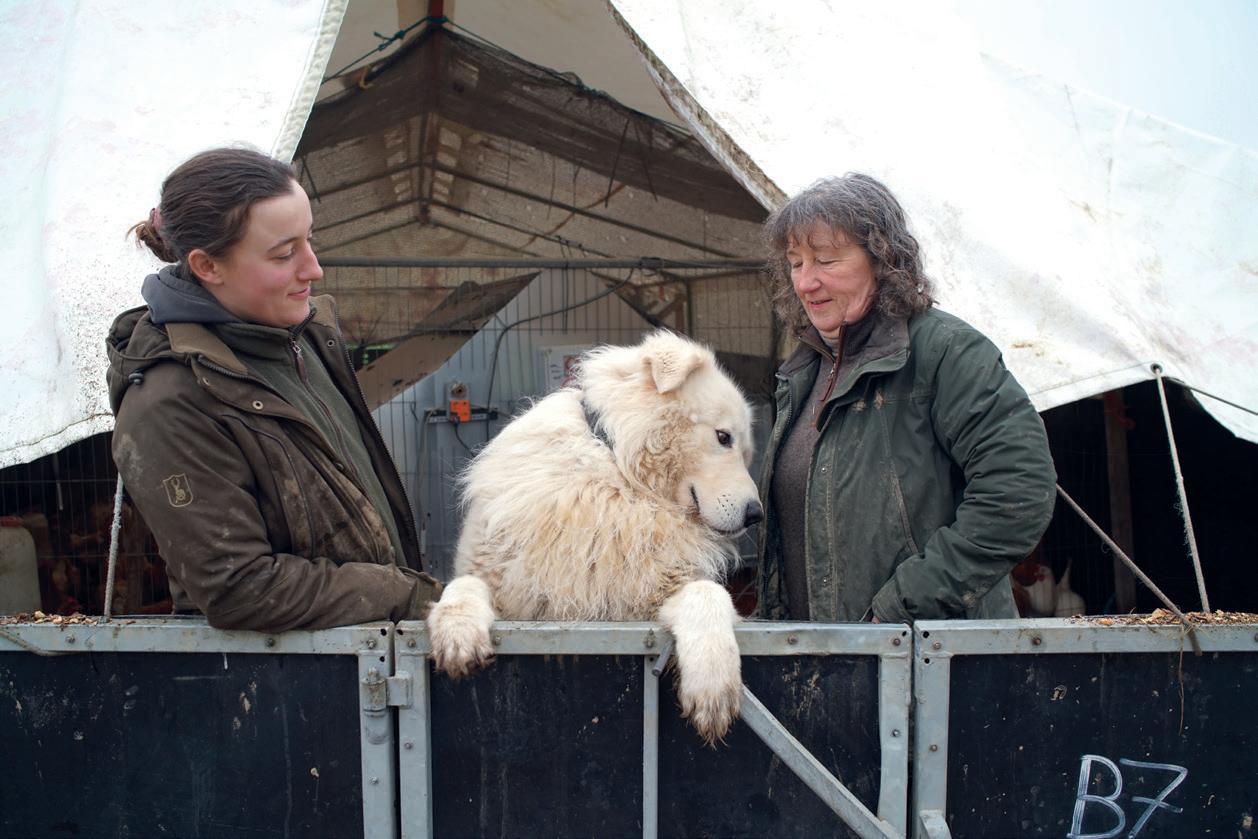
across the fields weekly, the Brightleigh team reduces disease pressure and adds fertility back to the land. Before long, word got out about their delicious, slow-grown birds, and they keep having to increase production to meet demand.
Layers, too, are an integral part of the enterprise. “We started with a small flock of about 50,” Ellie said, “and now we have nearly 200. Demand for soy-free, free-range eggs is surprisingly strong.”
Though laying drops in winter, the Saturday shop faithful often arrives early to bag a couple of dozen. “No matter what other cuts we have, eggs are always the first to go,” she laughed.
To supplement shop sales and build brand recognition, the team loads up a van with sausages, fresh cuts, and eggs to sell at several farmers’ markets in towns like Ripley, Farnham, Guildford and Earlswood (they now do five markets in total). “Farmers’ markets can be hit or miss,” Penny concedes, “but they’re brilliant for advertising. People taste our beefburgers or sausages and then visit our farm shop the next weekend.”
The markets also allow them to gauge customer feedback in real time. Some customers love a thick cap of yellow fat on a sirloin, while others prefer a leaner cut. By selling direct, Penny says, they can celebrate those differences instead of conforming to a strict carcass

specification for a single buyer.
"We might have a big-framed older animal that produces beautiful, marbled meat, but it doesn’t meet the supermarket’s exact fat class. That’s no problem for our customers - they love the flavour of those more mature animals.”
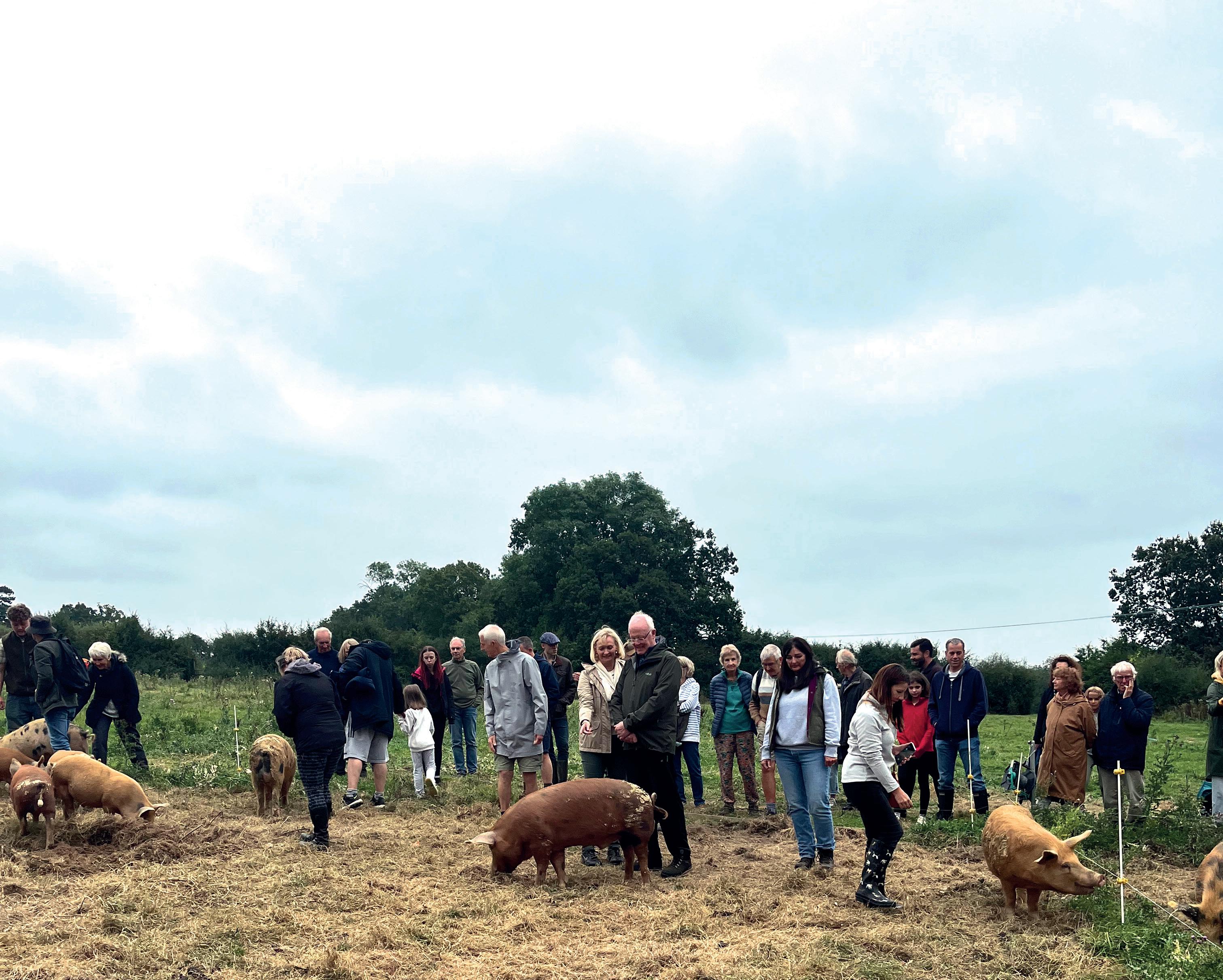
Helping supplement their farm income is a handful of microenterprises housed in some of the old dairy infrastructure. These include a pottery studio that offers weekend classes, a personal training gym in another corner and a small gin distillery workshop experimenting with botanical spirits.
They also rent out a few containers for storage and space for old military vehicles. Penny explained that while beef, pork, poultry and eggs remains the ‘heart’ of the operation, these diversified lets provide a welcome, steady income stream.
“It’s become a wonderful community,” Ellie said. “Customers come to the shop, see someone throwing clay at the pottery wheel, or watch the personal trainer leading a small group class in the converted barn. It gives the place so much life.” The synergy extends to events; sometimes they will host a farm open day with tours of the cattle out in the fields, pig pens and the potter’s studio, culminating in a barbecue featuring the farm’s own beef and sausages. >>


Like many independent livestock producers, the team at Brightleigh faces the persistent worry of abattoir closures. They currently use Downland Traditional Meats in Henfield, about 40 minutes away; a manageable distance. But with small local abattoirs shutting down across the country, they wonder if one day they will have to send their animals on a longer, more stressful journey.
“You can’t run a direct farm business if you can’t get your animals slaughtered humanely and efficiently,” Penny sighed. If Henfield closes, their next option might be hours away, which raises transport costs, animal welfare concerns and logistical headaches.
Another looming issue is inheritance tax. Penny’s mother Anne, now 84, still legally owns the farm. Proposed changes that might remove certain agricultural property reliefs threaten to saddle the family with a hefty tax bill when she passes.
“We can’t just conjure up that sort of money,” Penny said, frustration evident in her voice. “We’d have to sell land, or give up a big chunk of the business. That undermines all the work we’ve done to improve the soil and the herd genetics.”
Nevertheless, the team is pressing on, determined to find solutions. “We may not have big corporate backing,” they said, “but we’ve built direct relationships with our customers, and that’s powerful. People care about keeping small, sustainable farms alive.”
As we headed out to see some of the animals, Penny explained that they try to keep their cattle out on pasture for as long as possible by bale grazing, but the persistent wet weather in December meant they had to bring them in to prevent too much damage to their heavy clay soils.

Arriving at their main cattle shed, Penny and Ellie introduced me to some of their Mangalitsa cross pigs. Next door the cows and calves looked very content on a bed of fresh straw and get a diet of silage down a central passage.
We stop so I can take a few pictures of the cows and Penny and Ellie in front of their cabless Massey Ferguson tractor and McHale feeder. We then continue through to the other side of the yard, where they keep their silage and straw bales, stacked in a pyramid on pallets covered with a sheet from Toptex.
In the yard was a ’23 plate New Holland loader tractor, their main work horse. In the past they used to do all their own field work, but now just do their own bale wrapping and bale carting, explained Penny, who said they had built a good relationship with a local farmer who carried out all their silaging and hay making.
Continuing our tour, Penny and Ellie showed me another group of pigs housed in a white pig tent, which they bought secondhand. Next up were their egg layers, a mixture of white and brown hens housed in another white tent surrounded by Heras fencing and protected from predators by Fusco, one of the two large Maremma guard dogs which live with the chickens day and night.
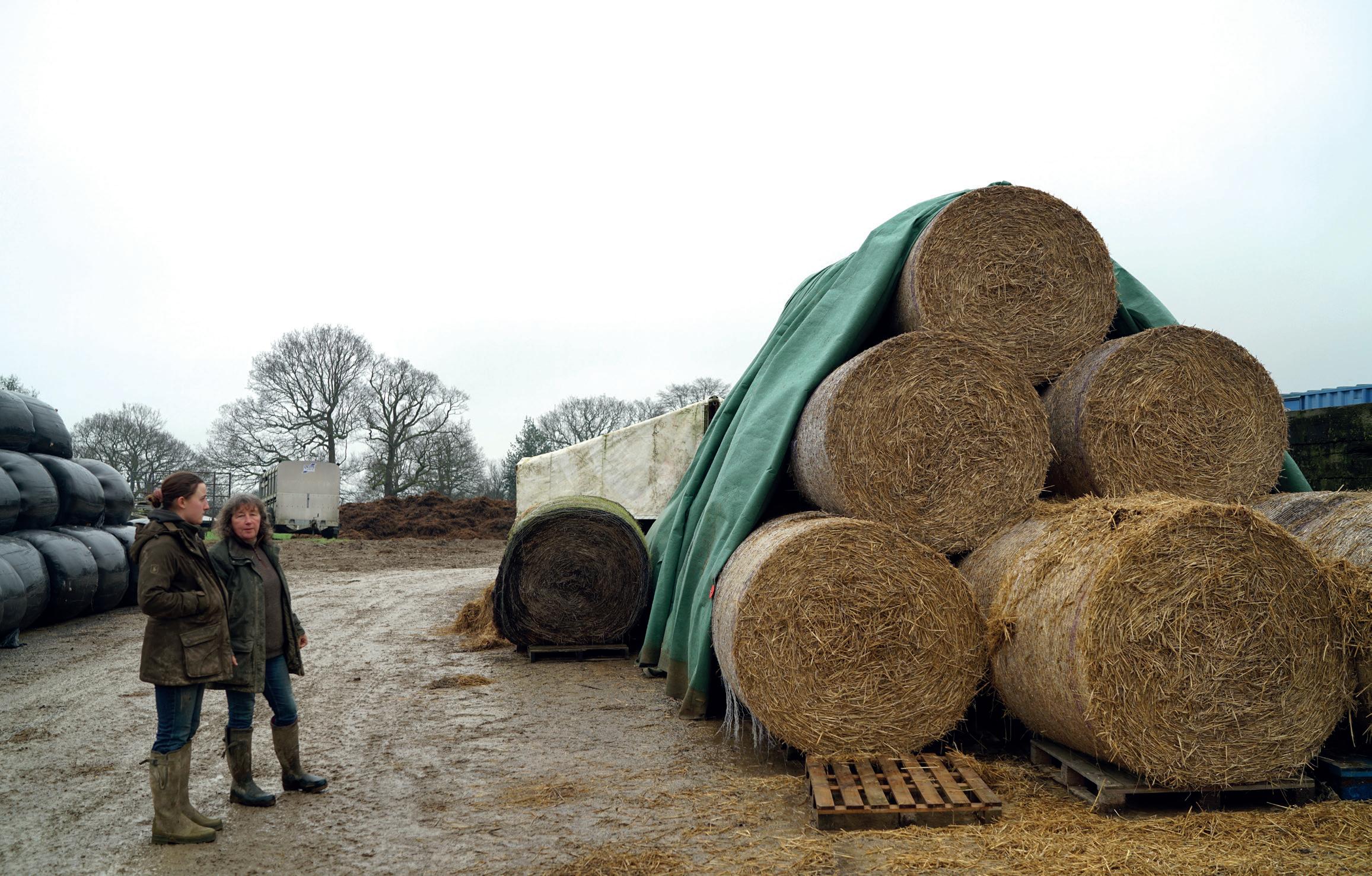
When the cattle are out, the free-range chickens follow the rotation, picking over and spreading the dung. Penny moves the cattle twice daily using KiwiTech kit on their quad bike, and said setting up and taking down fences took no time at all.
Over the years, she has noticed significant improvements to their soils and the amount of grass they are able to grow, adding that recent tests revealed that some of their fields showed soil organic matter of over 10%. Unfortunately, she didn’t do any baseline tests before they started rotationally grazing, but she is certain they must have risen dramatically since set stocking.
Heading back to the main courtyard, we pass some of their commercial lets and arrive back where we started. Penny and Ellie show me their old pop-up shop. It’s a space that has served them well over the past five years, they say, but they are excited to open their new shop housed in a larger space next door.
Looking around, I notice the shop is already kitted out with shiny chillers and lots of stainless-steel surfaces. Penny explained it was Nigel’s baby and was made possible by a small family inheritance and match funding from the Rural Prosperity Fund.
After the bifold doors have been fitted, they open to the public on 1 February and hope their investment will help take sales to the next stage. Currently, their 40-cow beef enterprise seems about the right size to sustain two to three animals a month through the shop - sometimes four in peak season. That’s supplemented by a steady turnover of pigs (averaging four per month) and a rolling schedule of meat-chicken batches of 100 to 200 birds. The synergy between farm shop and farmers’ markets ensures brisk, year-round trade.
Ellie, for her part, sees a future where Brightleigh Farm becomes even more of a local hub, hosting more open days, bringing in more school visits and perhaps launching educational workshops on rotational grazing or soy-free poultry rearing.
“We’ve gained so much from visiting other farms, seeing what they do,” she said. “It feels natural to want to share our journey, too.”
Nigel, ever the brand strategist, points out that “knowing your farmer” has never been more valued by consumers. “We highlight the story of each animal; where it was born, how it was raised, which field it grazed. People love that transparency. It’s part of the reason they drive out on a Saturday morning to buy direct from us.”
With my visit coming to an end, Nigel joins us outside the old pop-up shop. The conversation turned to health, the carnivore diet and regenerative farming books. Nigel said they had noticed a growing trend of customers regularly buying large quantities of meat and, after chatting to them, found out most were on the carnivore diet due to various health issues. After doing some research themselves, they decided to give it a go and haven’t looked back. They now eat only twice a day, have lost weight and feel healthier.
On the topic of regenerative farming books, Nigel suggested checking out A Bold Return to Giving a Dam, written by American regenerative rancher Will Harris. “It’s the best book,” he said.
Grabbing a final portrait of the three of them in front of the farm signage, I asked if they had any advice for other farmers. “You have to stay nimble,” Penny replied. “If something’s not working, like selling stores at a poor price, you do something else. The market can shift, but people will always value high-welfare, local food.”


“You have to stay nimble. If something’s not working, like selling stores at a poor price, you do something else



Learn more about Farm Expo 2025 and register for your free ticket: www.kcas.org.uk/farm-expo/

The South East’s largest agricultural and machinery show, Farm Expo, will return for its sixth year at the Kent Showground in Maidstone on 5 March 2025. This free event showcases the best of farm machinery, goods and services from national and international suppliers.
Farm Expo aims to connect merchants and buyers, providing a convenient opportunity for visitors to meet all their farming needs. With over 100 exhibitors in attendance, bringing the latest in innovative equipment and technology from all sectors of farming, land management and related business, this is a prime opportunity to try before you buy and discover the latest releases from all the favourite brands. See live demonstrations, view equipment and machinery up close and network with industry-leading professionals.
Now a firm fixture in the annual calendar of events for organisers the Kent County Agricultural Society, Farm Expo brings together farmers, farm workers, land managers, students and agri-businesses from all corners of the agricultural industry.
Nikki Dorkings, general manager of the society, said; “The continued growth of Farm Expo year on year shows the need for events that unite the farming community across the South East and beyond. With the agricultural industry facing challenges from every direction, often working in isolation, events like Farm Expo are a
vital opportunity for farmers to socialise, network and explore new technologies and services for their farm.
“With a brand new layout and new features including our first vintage tractor auction in partnership with Hobbs Parker at this year’s Farm Expo, our team is excited to continue growing the event to showcase businesses and services supplying all sectors of the agricultural and associated land-based industries.”

Farm Expo 2025 will see the introduction of a vintage tractor auction, kindly supported by Hobbs Parker Auctioneers. Entries for lots are now open via the Hobbs Parker team. Don’t miss the auction in car park A on the showground.
Visitors to Farm Expo 2025 will once again be able to claim NRoSO continuing professional development points for attending. Points can be collected on the Mid Kent College stand in the John Hendry Pavilion. The Kent County Agricultural Society would like to thank Brachers, headline sponsors for Farm Expo 2025, for their ongoing support.
The Little Green Energy Company is proud to sponsor and exhibit at this year’s Farm Expo, showcasing its expertise in renewable energy solutions tailored for the agricultural sector.
Based in the South East, the Little Green Energy Company specialises in designing and installing premium solar PV systems and battery storage solutions that help farmers and rural businesses reduce their energy costs, secure reliable power and lower their carbon footprint.
Whether it’s enhancing agricultural buildings with rooftop solar, maximising land use with ground-mounted systems or safeguarding against power outages with battery backup, the Little Green Energy Company has it covered.
As a trusted partner of NFU Energy, the Little Green Energy Company understands the unique challenges faced by farmers, from rising energy costs to the need for sustainable operations. Our solutions are designed to deliver long-term energy surety and profitability, whether for the landowner’s own agricultural use or for sublet buildings and tenants.
Visit the Little Green Energy Company at Farm Expo to learn how renewable energy can transform your business. Let them help you power your future while contributing to a greener, more sustainable farming industry.
Visit https://solar.tlgec.co.uk/farmexpo/ or call 01622 832 834
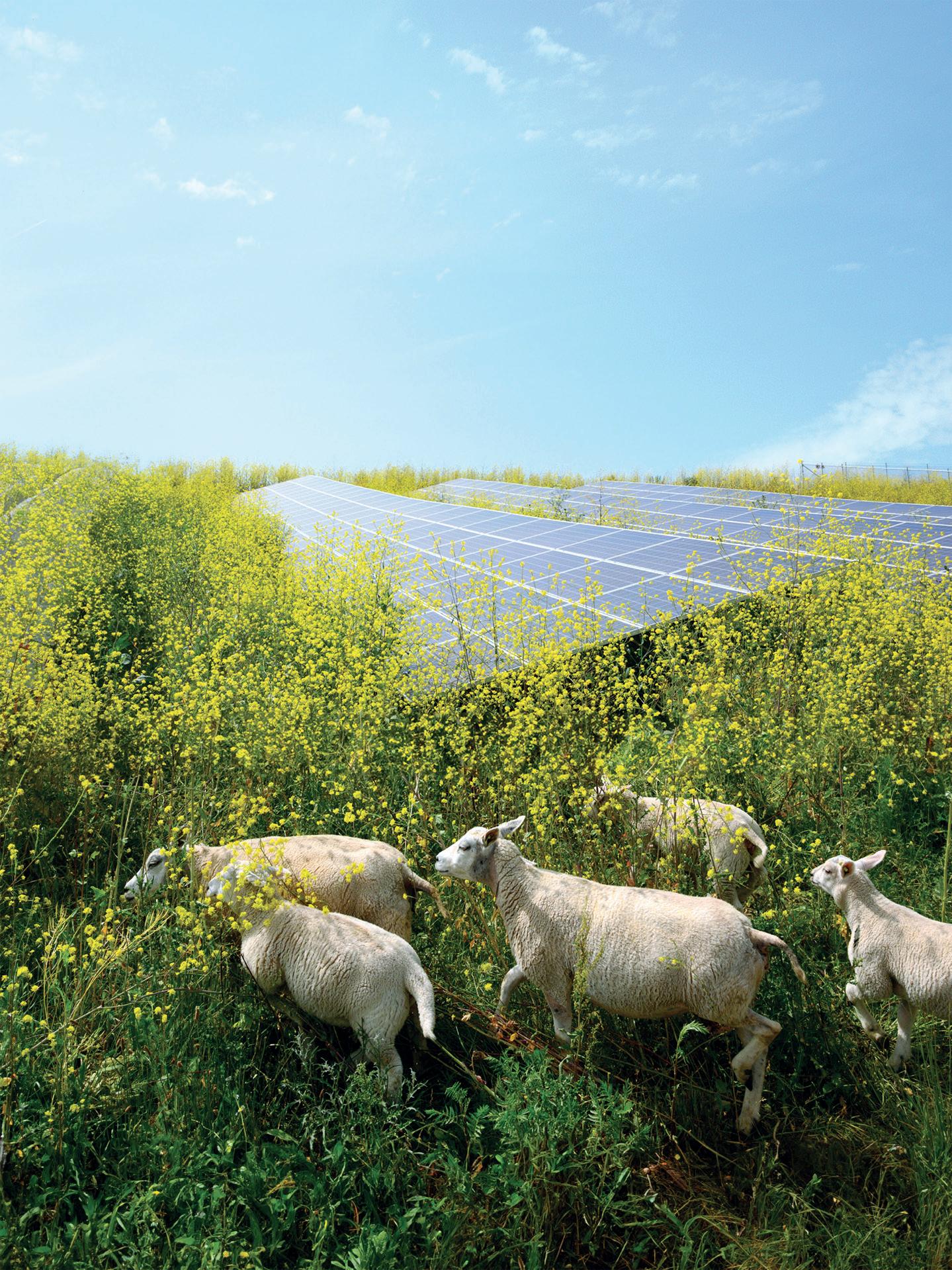

Talk to us at Farm Expo
• Inheritance Tax Planning
• Environmental Schemes
• Development Land
• Rural Diversification
• Sales and Lettings
• Telecommunications


batchellermonkhouse.com

• Steel frame buildings
• Sheeting and cladding
• Guttering and repairs
• Groundworks and drainage
• Demolition and asbestos removal
• Refurbishment and change of use
• Concrete frame and steel frame repairs
• Insurance and general repairs
• Concrete floor and block paving
www.gjelgarconstruction.co.uk
For more information contact us:
t: 01233 623739 m: 07860 414227
e: office@gjelgarconstruction.co.uk



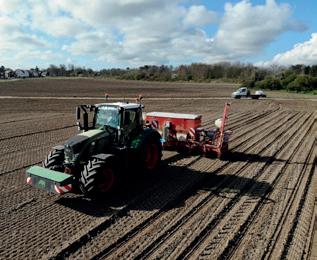




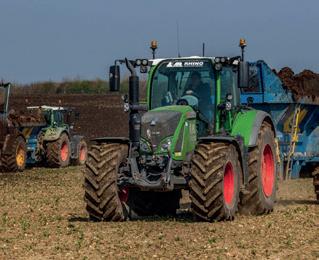
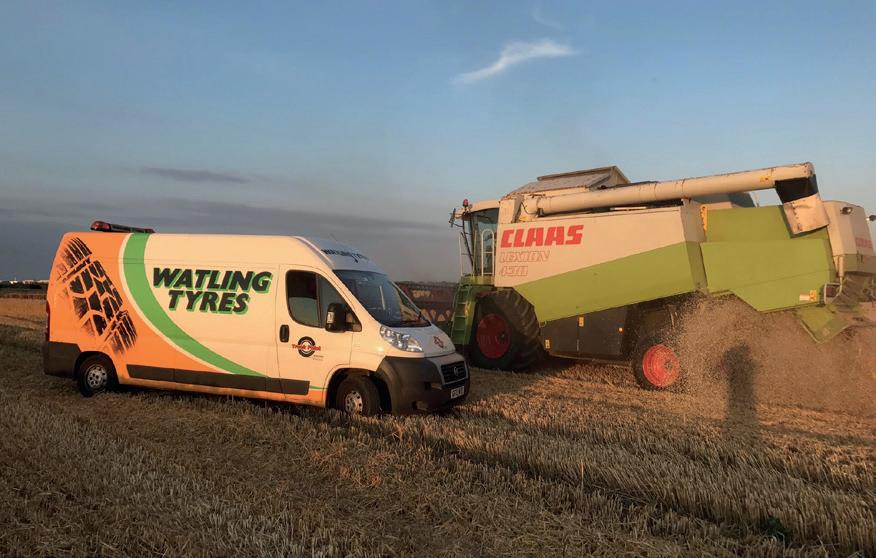
To learn more about KCAS membership or to become a member visit: www.kcas.org.uk/kent-county-agricultural-society/become-a-member/
The Kent County Agricultural Society became a registered charity in 1990 but has been around a lot longer.
The society was first formed in 1923, and throughout its history its mission has been embedded in the endorsement of agriculture, improvement in the breeding and rearing of livestock and encouragement of the invention and development of agricultural implements and machinery.
As well as holding the annual Kent County Show, the society holds an additional five events, The Kent Farming Conference, Farm Expo, The Heritage Transport Show, Living Land and Biddenden Tractorfest.
The Society's Kent Rural Scholarship Scheme, introduced in 2015, has
sponsored more than 20 students of land-based degrees at a cost of over £60,000, and makes charitable donations each year to support the Kent Federation of Young Farmers’ Clubs, providing essential funding for materials and services.
Membership fees contribute towards the continuation of the Kent County Show and help the society continue to achieve its charitable objectives each year.
Members receive tickets to society events and other benefits such as entry to exclusive show areas and access to other offers and discounts, as well as a quarterly newsletter with information on the latest news and events.
Haynes Agricultural Ltd is a well-established family-owned company which is part of a larger group of companies founded in 1790.
Since the earliest days of mechanised farm machinery, the company has been at the forefront of innovation, steadily growing its agricultural machinery. Their commitment to innovation, quality service and strong partnerships with leading manufacturers ensures enable them to provide support to farmers and landowners from seven depots across the South East.
Haynes Agricultural is proud to be the main dealer for top agricultural machinery brands including CNH, JCB, Kuhn, Claydon Drills and Stewart Trailers. There is also a wide range of used agricultural machinery in stock.
Qualified technicians provide expert servicing and repairs through comprehensive maintenance and service programmes, ensuring customers’ machinery performs at its best year-round.
Haynes Agricultural stock genuine manufacturer parts and a wide variety of products to help customers maintain and care for their machinery. In addition to agricultural parts, Haynes Agricultural offers a wide selection of garden machinery, outdoor wear and merchandise.
With centuries of expertise, Haynes Agricultural is a trusted partner for the farming industry’s agricultural and ground care machinery requirements.
Visit www.haynes-agri.co.uk to find out how they can support your needs.












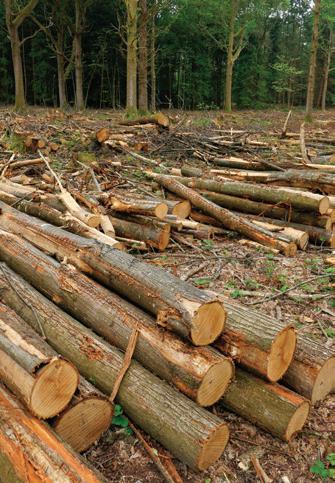






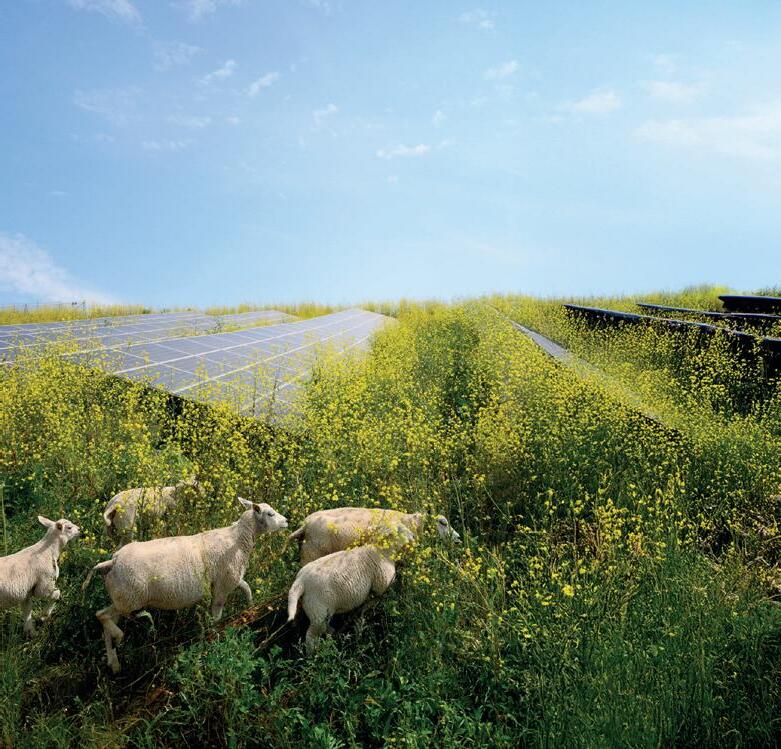
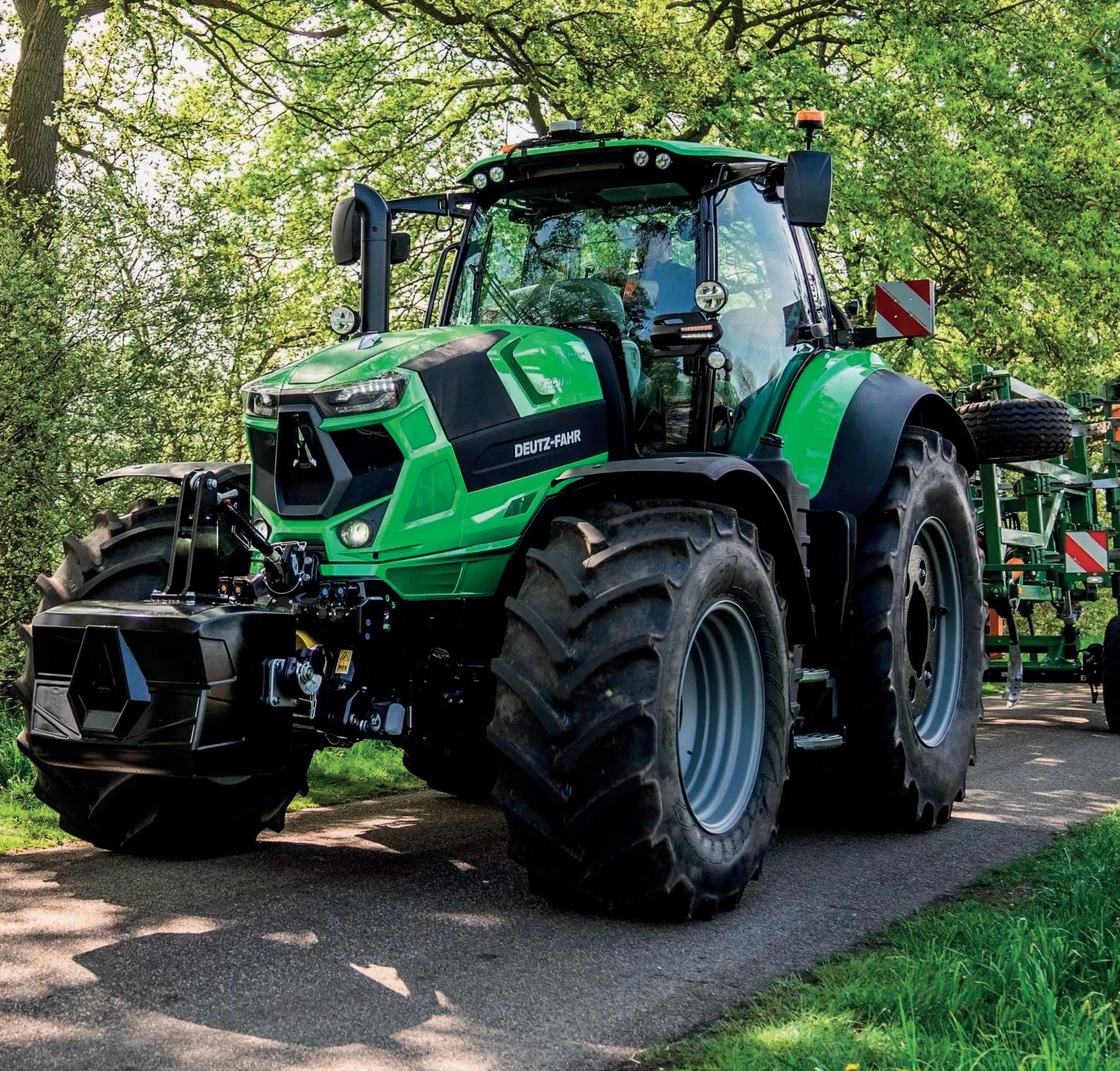





Hayley Kingsnorth, partner at Azets, looks at the potential monetary impact of the inheritance tax announcement and how it could make a significant difference.
There has been widespread concern from many farmers that selling up now may be better than leaving a hefty inheritance tax bill later for their children.
From April 2026, inherited agricultural and business assets worth over £1m will no longer fully benefit from reliefs which could effectively exempt them from inheritance tax (IHT) and will instead be susceptible to an effective rate of 20% (due to reliefs being restricted to 50% of the value in excess of the first £1m).
EXAMPLE ASSETS* (ALL HELD JOINTLY BETWEEN SPOUSES, BUT PASSING TO EACH OTHER ON FIRST DEATH)
• A 500-acre family farm
• Land and farm buildings valued at £6m
• Farmhouse valued at £500,000
• Cash savings of £100,000
*assumes the farmhouse does not qualify for APR.
TAX SITUATION UNDER CURRENT RULES
See table below.
Outcome: No IHT liability (taxable estate = £0)
See table above.
Outcome:
• Taxable estate (after deducting the nil rate bands): £2,450,000.
• IHT liability: 40% of £2,450,000 = £980,000. Not only is this a significant difference, but only having £100,000 of cash would likely mean that the house or some of the farm would have to be sold to pay the liability. HMRC has stated that the tax owed following the changes can be paid over 10 years interest free, although this may not be much of a consolation for those impacted.
For those with assets in excess of the £1m allowance, the initial thinking may be to sell land or borrow funds to pay the IHT bill, but there are other considerations beyond this as a means of mitigating the impact:
• A back to basics understanding of the business structure and land ownership to provide an awareness of where tax reliefs may apply
• Review of partnership agreement and Wills to ensure appropriate passing on of assets upon death and allowances is maximised
• Lifetime gifting rather than on death as a means of reducing an IHT bill
• Strategic gifting such as gifting core parts of a farm
• Utilising the joint interest in land rules effectively
• Using trusts to support tax efficiency.

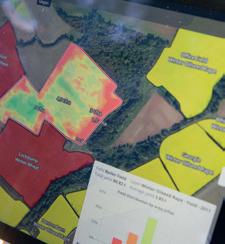




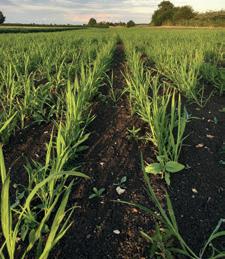

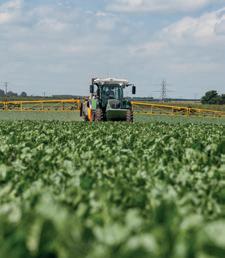


Southern Sheeting is a family-run business with more than 40 years of experience providing first-class roofing and cladding solutions to the agricultural and equestrian communities. The company’s specialist knowledge enables the team to understand the unique needs of farmers, stable owners and others involved in the agricultural sector.
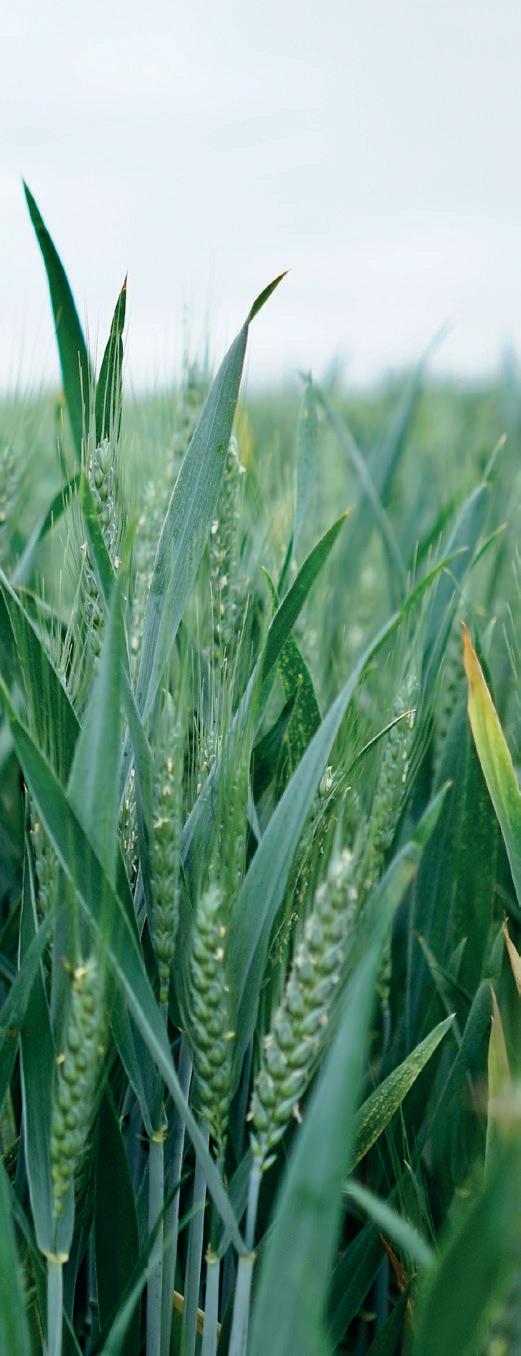
Discover an approach to law that’s more progressive, more proactive and more pragmatic. We’ll help your agricultural business to reach the next level.
With an unwavering commitment to excellence, Southern Sheeting has become a trusted name in the industry and one that takes pride in offering a comprehensive range of products to meet customers' requirements all year round.
The importance of maintaining farm and equestrian buildings cannot be overstated. Regular repairs to roofing, rooflights and panelling ensure that outbuildings remain in optimal condition to withstand the challenges of the year ahead. Southern Sheeting is here to support successful farming operations by providing quality products, expert advice and exceptional service.
Purchasing specialist materials can be complex, which is why our knowledgeable advisors are always happy to help. Registered businesses can also benefit from discounted trade rates.
Contact Southern Sheeting’s dedicated sales team on 01342 590142 or email sales@southernsheeting.co.uk, and a member of the team will be in touch.

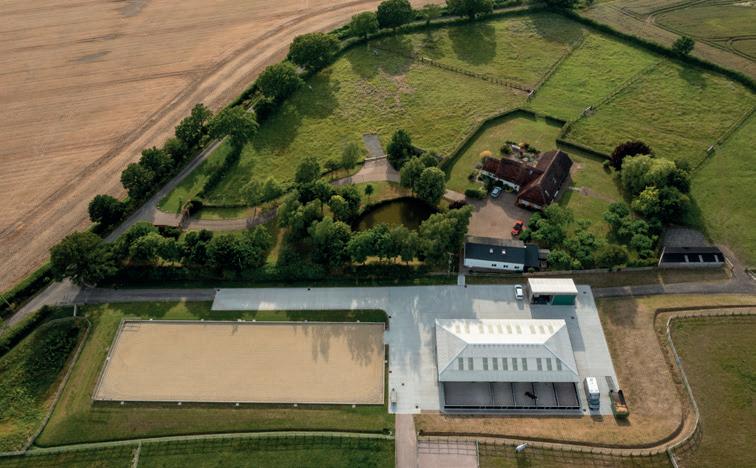
Farming has never been more in the headlines, be it the government’s budget announcement on inheritance tax or the subsequent demonstrations across the country. Is British farming receiving the recognition that it deserves for its role in both feeding the country and delivering on environmental improvements?
The challenges faced by farmers and landowners only seem to become more complex. Planning for the future of the family farm has never been more important. There is enormous pressure to improve performance across all aspects of farm management. Sitting here in the South East creates opportunities but also brings added pressures.
The starting point is to understand the threats and opportunities. Batcheller Monkhouse’s land agents, agricultural and environmental experts and planning consultants will be on hand at Farm Expo to answer your questions and provide guidance on key issues including:
1. ELMS and other environmental grants
2. Succession and inheritance tax
3. Natural capital opportunities
4. Tenancies and contract farming
5. Planning and development
6. Glamping and other diversifications
7. AMC finance
8. Residential and commercial lettings
Please join Batcheller Monkhouse on their stand for refreshments, including fabulous fresh coffee, and an informal discussion. Batcheller Monkhouse would love to look at how they might add value to your operation and, most importantly, enhance the enjoyment of your life on the farm.
A display of over 1,000 vintage vehicles including classic cars, motorcycles, tractors, steam and stationary engines, joined by over 100 buses from across the South East and beyond.
A free event allowing primary school children in years 3 & 4 to learn about farming, food production and the countryside. Over 55,000 children have taken part in this event, which celebrated its 20th year in 2024.
The society’s showcase event celebrating farming, livestock and rural crafts throughout the ‘Garden of England’.
A family friendly annual country fair with a focus on vintage, classic and modern tractors. Part of the event proceeds are donated back into the community.
To learn more about any society events, or how you can get involved, head to www.kcas.org.uk Alternatively, email info@kentshowground.co.uk or call 01622 630975.

⚪
⚪
⚪
⚪
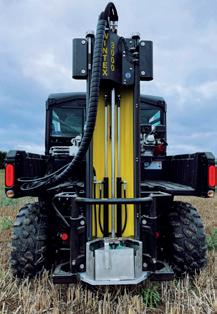



Quality equipment, an experienced team and a focus on reliability has seen Rhino Agricultural Services establish itself over the past 31 years as the first choice for farmers, landowners and organisations looking for a first-class service.
Neil Morgan has grown Rhino Agricultural Services into a wellrespected company with an impressive fleet of machinery and an equally impressive client list that ranges from local farmers to the National Trust.
The business, based near Dover in Kent, now employs 12 people and serves farming, conservation and archaeology customers across the county and beyond.
The talented and experienced team provides a range of services including muck spreading, mowing, tedding, rowing, forage harvesting and drilling. Rhino Agricultural Services has also completed three large reservoir projects in the county.
The plant and machinery that handles the farming workload includes six John Deere tractors and one Fendt, together with a Claas forage harvester, JCB loading shovel and JCB telehandler. Two maize drills, a seed drill, round and square balers, a plough and cultivation equipment, including a 10-metre rake, complete the line-up.
Rhino Agricultural Services is now taking forage harvesting, dung



With 60 years of service under their wheels, the experienced team at Watling Tyres knows all there is to know about supplying and fitting agricultural tyres. Established in 1962, this family business has grown steadily over the years and now services farmers and farming businesses across Kent, Surrey, and East Sussex from 14 well-sited locations across the region.
The highly skilled team at Watling Tyres provides a 24/7 operation across the South East, utilising a 50 strong fleet of specialist vehicles. They meet or exceed the industry standard response time of 90 minutes and can supply and fit a vast range of tyres. Executive Director Pat Laming attributes the strength of the Gravesend, Kent-based company to its excellent, well-trained, and customer-focused staff. While the company’s focus is on service, Watling Tyres prides itself on offering competitive prices and can fit tyres for anything from a fuel bowser or fruit trailer to a tractor or combine harvester.
Looking forward to 2025, Pat noted that with the industry undergoing significant changes, Watling Tyres aims to be a key partner with farmers and growers as the country moves towards providing more of its own food. Watling Tyres will be exhibiting at Farm Expo, where Pat and the team look forward to meeting customers old and new.
For more information, visit Watling Tyres at one of their 14 locations or catch them at Farm Expo to see how they can support your agricultural needs.
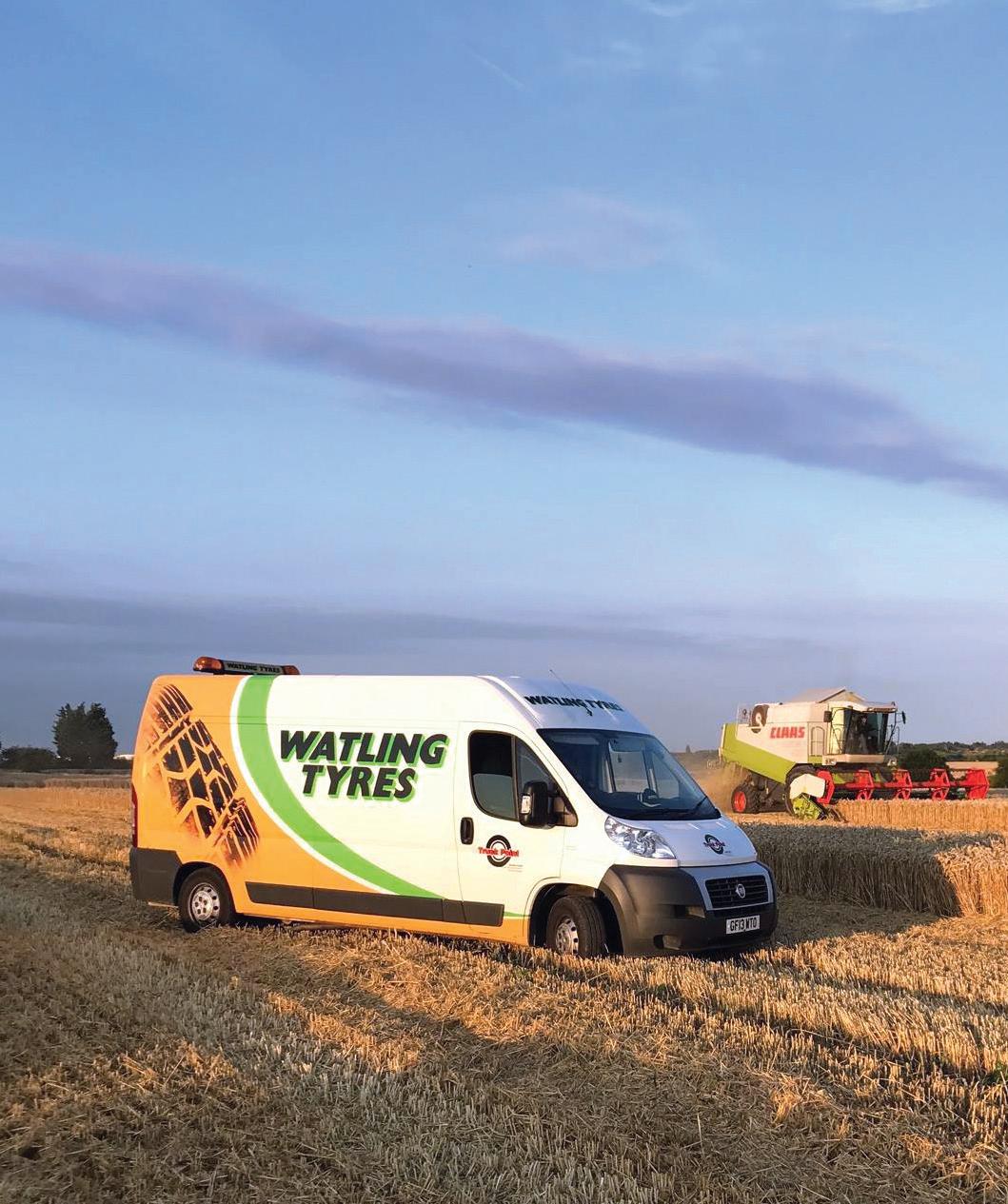
The Kent County Agricultural Society is proud to support nine students per year through the Kent Rural Scholarship scheme. Now in its 10th year and, so far, supporting 26 students, this scheme awards £1,000 per year for up to three years to students who wish to pursue a career in agriculture, horticulture, forestry, equine, veterinary or animal management.
Applicants must be living in Kent at the time of application and aged between 18 and 25. They should be studying in the UK in one of the fields listed, on a full-time college or university degree-based course.
Applications for the 2025 new entrants to the Kent Rural Scholarship are now open.
www.kcas.org.uk/awards-grants/scholarship-scheme/

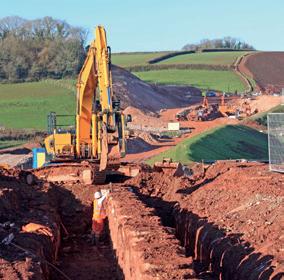


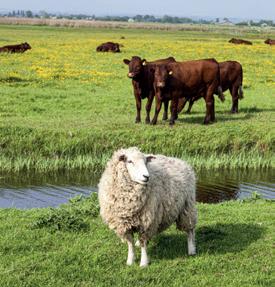


New
machines, hiring options to spread the cost and a wide range of cleaning equipment are all on offer from Pressure Clean as 2025
heralds another busy year for the Uckfieldbased team headed up by Gary and Donna Fielding.
Pressure Clean, with a well-established reputation for supplying, servicing and repairing pressure washers and other cleaning equipment across the South East, carries a wide range of Nilfisk and Karcher models that run from the simplest cold water fill washer through to three-phase hot water machines that can make light work of the dirtiest combine harvester.
Alongside the pressure washers that have been the core part of their business over more than 50 years, Pressure Clean sells and services a broad range of industrial vacuums, ride-on sweeper scrubbers and floorcare equipment that can help farmers keep barns and other buildings spick and span.
With farmers currently facing a number of financial challenges, Pressure Clean also offers long-term hire deals that are designed to give farmers worry-free use of the equipment they need for a modest monthly payment that includes maintenance costs and avoids an upfront capital spend.
Short term hire over a day or weekend is another option, allowing a farmer to deep clean a barn or shed, for instance, without having to buy a machine they wouldn’t use regularly enough to justify the expenditure. Full training on how to use the equipment is provided and
hire machines can normally be delivered to site within 24 hours.
The machinery itself continues to evolve, with Nilfisk rolling out a new, rebranded range in a darker colour that reflects the fact that it uses a higher percentage of environmentally friendly recycled plastic.
First out of the rebrand stable is the Nilfisk MC 2C range, a lower cost machine that is ideal for light agricultural use and promises to tackle daily cleaning tasks with “ease, speed and efficiency”.
The cold-water range features a new hose design that minimises tangles and is easier to reel in, a unique, pressure activated system and an ergonomically designed spray gun that Nilfisk claims reduces the risk of strain for the operator while allowing the machine to work more efficiently at a lower pressure and save energy. Colour coded touchpoints are designed to make life simple for the operator.
Not to be outdone, Karcher has updated its popular three phase HDS 10/20-4M range, replacing it with the HDS 10/21-4M, the single digit difference revealing a slight improvement in operating pressure, from 200 bar to 210.
Beyond that, the range sports a new, updated look, impressive reliability and simplified, one switch, front panel operation. Karcher claims its ‘made in Germany’ burner technology ensures high efficiency
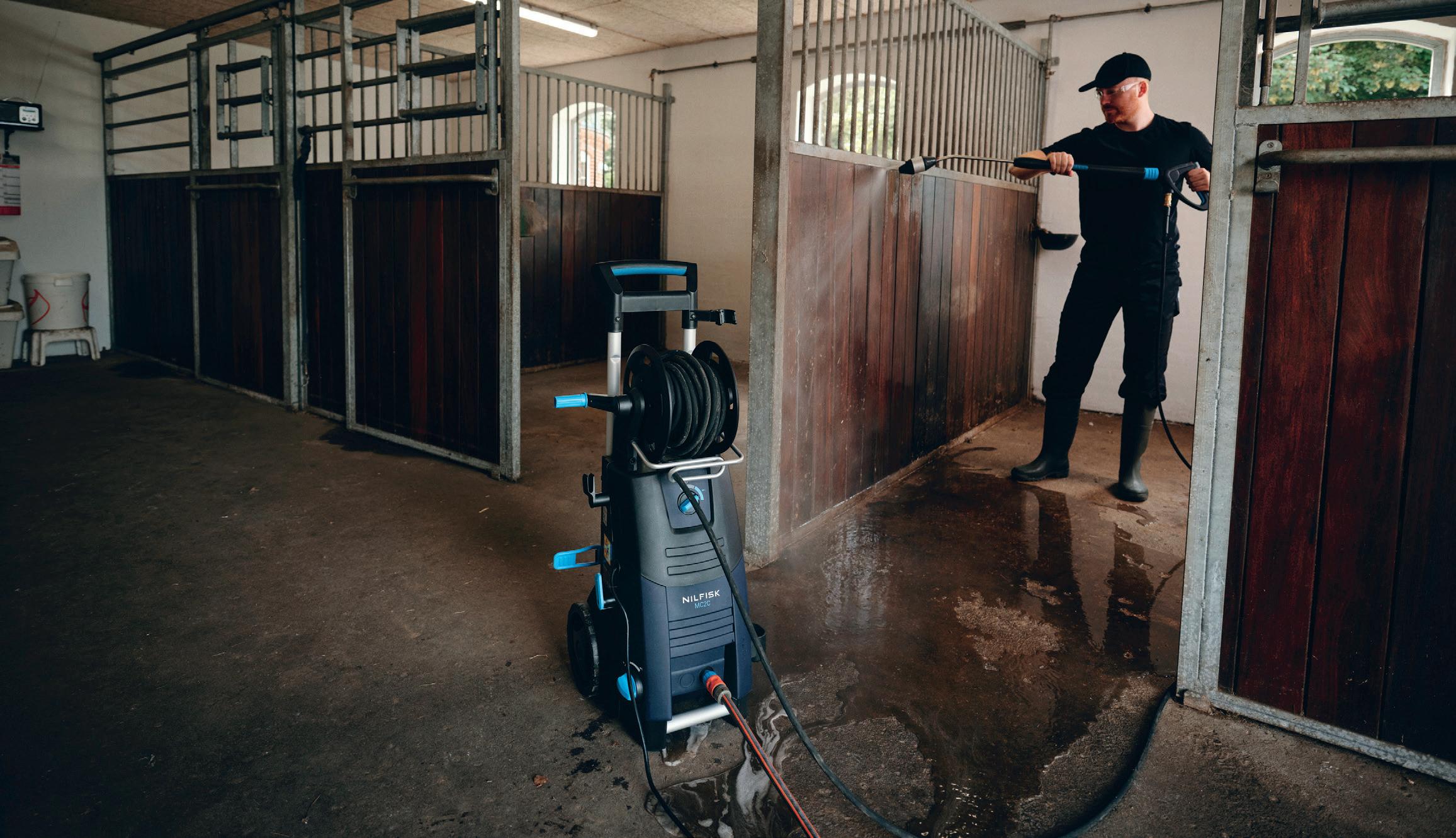




and low emissions, while its three-phase power supply will appeal to many farmers and growers.
Karcher has also released a new EcoBooster accessory nozzle that offers 50% higher area performance compared to its standard Power nozzle. Suitable for cold and hot water pressure washers, the EcoBooster produces a wider spray pattern with no loss of pressure.
“It uses clever technology that cleans a 50% larger area with the same amount of water and at the same pressure,” explained Gary. “That means whatever you are cleaning ends up just as clean but takes less time, less water and less energy to achieve the same result.”
The new nozzle can be used with most existing Karcher HD and HDS machines and is ideal for cleaning large areas, such as walls, trailers and lorries, efficiently and quickly. “It’s a well-priced accessory that can quickly pay for itself in saved time and energy,” Gary added.
Pressure Clean will be showcasing the new EcoBooster nozzles at Farm Expo at the Kent Showground on Wednesday 5 March and will be offering one free with certain Karcher pressure washers.
While sales of new machines are still buoyant, with farmers facing a number of financial pressures they are also keen to keep their existing pressure washers working efficiently for longer, which is where the company’s experienced service team comes into play.
Pressure Clean has five highly skilled engineers, four of them mobile and all of them able to maintain, service and repair the full range of machines that the company sells – together with plenty that it doesn’t.
“We offer competitively priced servicing plans that allow farmers and growers to spread their costs and avoid surprises, but we can also carry out repairs either here at Uckfield or on site,” Gary explained. “Machines can usually be repaired for a reasonable cost, giving them an extended lease of life and avoiding the cost of a new machine, although the improved technology on offer can make that option tempting.”




Environment Bank explores how Biodiversity Net Gain (BNG) is helping to build long-term resilience for farm businesses across England.
Why are so many farmers interested in BNG?
Many farmers have parcels of land that are challenging to farm, but this can make them ideal for things like BNG.
BNG Habitat Banks are most profitable when the land starts out low in biodiversity, often the case on low-productive farmland. A low-biodiversity baseline gives you the potential to create the highest uplift and generate the maximum number of Biodiversity Units which can be sold for BNG.
Farming can continue on the wider holding and, often, the Habitat Bank too – with activities like hay cutting and low-intensity livestock grazing. While the farming system may change, the land can remain productive, and farmers can help manage the habitats using skills already in their wheelhouse.
Unlike rewilding-related projects, BNG doesn’t require huge swathes of land. We typically require at least 25 acres where new habitats will help support the wider farming business rather than changing the land use across the entire holding.
How can BNG support agriculture?
Nature projects of all sizes have helped to build farm resilience – planting trees and shrubs can improve flood mitigation, and creating meadows and grassland can reduce soil erosion and runoff, just to name a few.
People outside the world of agriculture might think farmers are only driven by high yields or outputs. But the farmers we work with see themselves as stewards of the countryside making their land more resilient for the next
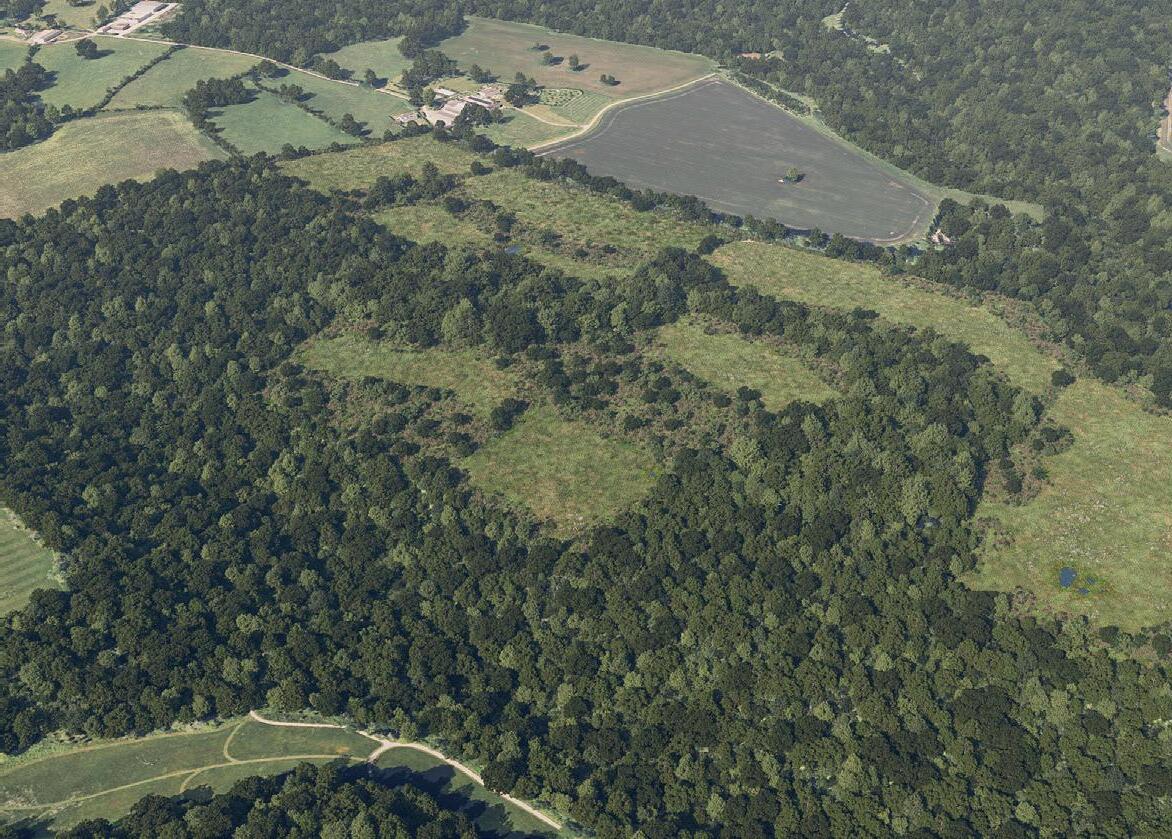
generation – in both financial and environmental terms.
A diversified income stream can help fill the funding gap and provide secure funds to make business improvements like newer machinery, more sustainable livestock, or other projects like building conversions.
Why are farmers partnering with Environment Bank?
The key thing for farmers is having a clear, visible income stream. Our farmers know exactly what their annual payments will be for the next
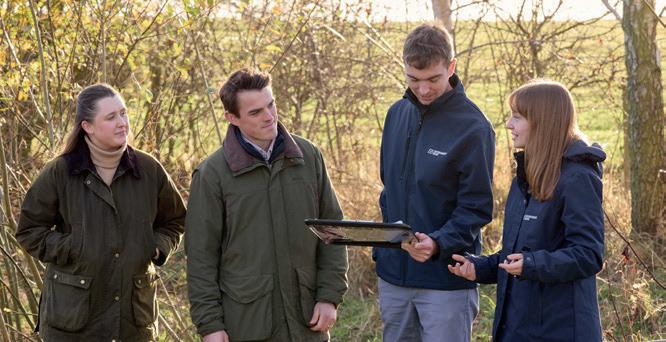
Banks, with customers including household names like Aldi and National Grid. Any revenue from these sales that exceeds our forecast target for each Habitat Bank is shared 50/50 with the landowner.
While our agreements mitigate as much risk as possible, we appreciate that our farmers are still tying up multi-generational assets for a considerable time – so if BNG sales exceed expectations, it’s only fair that they get to share in the upside.
Farmers can be wary of private finance entering the rural space.
the success of the Biodiversity Unit market has really given landowners confidence in diversifying their income with a BNG Habitat Bank
three decades – that’s incredibly valuable for business planning.
We also prioritise agricultural management. We rarely start a Habitat Bank where hay cuts and grazing don’t play a role.
One landowner had previously sold their dairy herd because it was no longer sustainable for their business, but partnering with us allowed them to farm again with a far more sustainable system.
We fund and deliver all the habitat creation works and we secure the planning obligations. Landowners have the option to be as involved as they’d like. If they prefer a handsoff approach, that’s not a problem, but most of our partners want to get involved, and that’s great too!
How does Environment Bank create and share revenue?
We have a strong Biodiversity Unit sales pipeline from our Habitat
That’s why we aim to lease rather than buy land – so local people retain their ownership.
We always try to hire local contractors (or work with the farmers themselves) to help us deliver habitat creation works because it’s a fantastic way for us to support local business.
How robust is the BNG market?
A year since BNG policy came into effect, the success of the Biodiversity Unit market has really given landowners confidence in diversifying their income with a BNG Habitat Bank.
We’ve built a fantastic team here at Environment Bank and we’ve become a trusted BNG partner for farmers around England.
We’re proud to say that we’ve got the nation’s largest and fastest growing network of BNG Habitat Banks. Across this network, we’re creating thousands of acres of thriving new habitats alongside incredible farmers.
We’re helping to channel funds directly into the rural economy at a time when it’s needed most – and it’s already making a real difference for farmers and their businesses.
We are looking to create BNG Habitat Banks in the south east, visit our website to find out more environmentbank.com/land
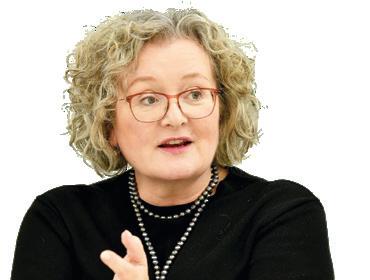
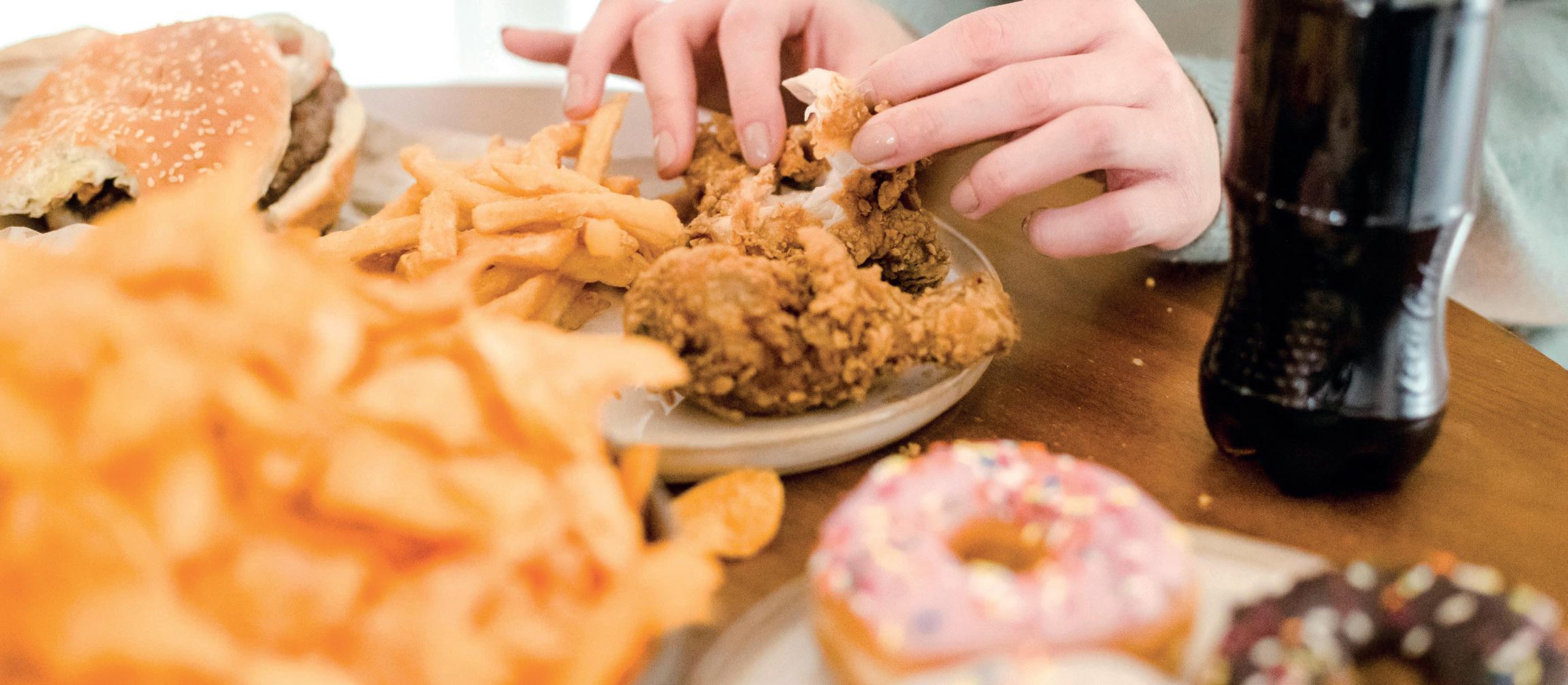
Good news this month from the Red Tractor team, which has revealed that the UK’s trust in food is at the highest level for three years. With 75% of adults now saying that they trust food in the UK, up by 4%, our industry is now trusted more highly than the NHS or water from a tap.
This level of trust is still lower than in 2021, which saw the Red Tractor consumer trust survey return an 81% confidence level, but currently, when thinking specifically about home-produced food, consumer confidence is at 91%, with 85% stating that they trust UK farmers. The survey also showed great confidence in the suggestion that our farmers follow good animal welfare standards.
On food strategy, the Government seems to be setting the stage for a bold transformation across health, food security and environmental sustainability, but it’s going to be a challenge. I’ve read a number of excellent articles in the past few days which have done a great job of summarising the direction of travel. To precis:
A major part of the announcement was around tackling the unfair farm supply chain, unhealthy diets and the rapid rise in obesity levels. Steve Reed, DEFRA Secretary of State, has announced the formation of a coalition of food sector leaders, academics, charities and key thinkers to create a new way of working with the sector.
There would be no more ‘random interventions’ and instead there would be a joined up and systems-wide approach across government and industry to reduce environmental impact, increase investment and tackle food poverty. Henry Dimbleby’s 2021 report will be part of the strategy building process, though the elements around regulation on health and the environment are yet to be clarified.
All the reporting agreed that the Government will expect to see fundamental changes to the national diet, as well as to the food supply
chain, and all mentioned the economic crisis facing farmers and the unfair trading conditions that were putting home production at risk. Steve Reed was quoted as saying that “our food and farming sectors are the cornerstone of our national identity and economy”.
Unhealthy diets will undoubtedly be a major focus of the strategy, as they were within Henry Dimbleby’s original report. Reed linked the issue to the additional challenges of the pressures on food security from climate change and the toxic nature of our food supply chain.
DEFRA has also vowed to drive investment, productivity and innovation to ensure the food and drink sector will realise its economic potential in years to come. The section of Reed’s speech that was absolute music to my ears was the declaration that the strategy won’t just sit within DEFRA but is being developed in collaboration with the Departments of Health and Social Care and Education.
This supports the fundamental idea of a healthy, economically thriving society being based on a healthy diet with a population which knows about nutrition and good diet and has the ability to cook and plan its consumption.
The 2021 strategy document talked a lot about the taxation of high fat and high sugar foods, and the recent report from Lord Darzi on the NHS crisis will undoubtedly fuel the prominence of this element again. It really does feel that the strategy will work towards guaranteeing access to affordable, healthy and nutritious food for everyone.
I’d like to end with a thank you to the amazing farmers of the South East who helped City Harvest deliver food to 130,000 people this Christmas. The donations of outgraded and rejected stock made a fundamental difference to the thousands who desperately need a healthy diet; there really is nothing better than a meal rich in sustainably produced, low food mile, nutritious British produce.
Spring barley still offers the best option for rotational suppression of grass weeds such as blackgrass, ryegrass and brome.
Laureate remains the undoubted number one in the marketplace, outselling its competitors whilst offering dual purpose end markets, as does LG Diablo although it’s not as widely grown. RGT Planet will slip further as the newer options gain a greater share of the market, but will still have support from growers who have seen very consistent performance over the years.
Skyway offers brewing ability and is fully approved, as is SY Tennyson which is more akin to Laureate with its dual-purpose credentials. Several varieties are under test for malting quality, including LG Aquarius, Nos Gambit, Belter, Nos Munron and Olsen.
Feed varieties Westminster and Kelim still sell well for this market, but arguably the malting varieties offer better yield.
Mulika, KWS Harsum and KWS Ladum are the Group 1 offer, with the former, now under significant yield disadvantage. KWS Ladum has no major disease weaknesses, with high resistance to mildew, brown rust and Septoria tritici. It will be a major consideration for next spring. KWS Harsum has orange wheat blossom midge resistance.
KWS Cochise and, to a lesser extent, KWS Chilham provide alternatives in the group 2 sector, which is little changed. KWS Alicium has the best yield.
WPB Escape has the largest market share with KWS Fixum since its arrival within the sector. It is a relatively late-maturing variety, which will be a limitation to some. It appears that KWS Fixum has no major disease weaknesses, with high resistance to yellow rust, mildew and brown rust. SEW19-3003SW (proposed name ‘Everlong’) is the highest yielding at 107 – Group 4.
WPB Isabel is the market leader, with Melrin making significant headway. Canyon still has support within the marketplace. Essentially the key to growing spring oats is rainfall in June and timeliness of harvest. Conway is an early maturing option. Asterion, newly added to the recommended list last autumn, has
If you would like advice on spring cropping choice and seed supply, please speak to your agronomist or contact our dedicated seed team: seed.orders@hlhltd.co.uk

Peter Brundle, Hutchinsons southern seeds manager, gives his views on spring cropping variety choices.
high untreated yields with good resistance to mildew. The end market will dictate the preferred variety in almost all the spring quality cereals.
Spring Beans will again be dominated by Lynx. Genius remains the highest yielding option on the descriptive list. Yukon has the best mildew resistance and is the earliest maturing. New options for this spring include Navara and LG Hawk, but neither compete with Genius for pure yield.
Synergy is a new low-vicine and low-convicine variety (LVC) and is higher yielding than the other two LVC varieties, Futura and Victus.
As far as peas are concerned, it will be Concerto (115%) and Batist (113%), which are the new top-yielding yellow peas. Carrington remains the top yielding blue pea. Bluetime will again be popular, and Butterfly is new and again showing the strength in depth of the LSPB portfolio. Kameleon from Senova and LSPB’s Orchestra are the standout white peas, but availability is key.
A new pink pea category has been created in the Descriptive List to accommodate the new variety Flamingo from Cope Seeds & Grain. In trials, it was the lowest-yielding pea listed
(78%), with specific end markets from uses for human consumption to bird and pet feed. Vision is the new addition to the list for Marrowfats, with the best downy mildew rating of 7 and the highest yield in the sector, whilst Sakura has shown its consistency and support from the end user. The yield gap is circa 10%, but again, as with anything that involves a quality premium, will be decided by the end user.

PETER BRUNDLE
Southern seeds manager
T: 07774 707494
E: peter.brundle@hlhltd.co.uk
Canterbury: 01227 830064
www.hlhltd.co.uk
It feels far too soon to be thinking about spring nitrogen applications, given that many drills have only recently been parked up following this winter’s drilling campaign. It won’t be long, however, before crops start to grow and fertiliser spreaders are back on.
Before any nitrogen gets applied, it is important to calculate or measure how much nitrogen is likely to be left in the soil and available to the crop. Soil type, previous crop, rainfall and previous manure applications will influence the soil nitrogen supply (SNS), so each farm and field will be different. Where possible, it is worth getting some fields tested to 90cm to measure their soil mineral nitrogen (SMN) levels to help determine what the soil nitrogen supply is. There is often funding through local water companies for this service. This helps to determine how much nitrogen is required for the spring. If the SNS index is low, then a full nitrogen programme will be required, with early applications likely to be needed. However, where the SNS level is high, we will be able to cut back nitrogen applications this spring.
It is strongly recommended that growers get their fertiliser spreaders calibrated before applying any fertiliser this year, to ensure an even spread. Most products will spread slightly differently and so calibration is essential to ensure a uniform spread. A coefficient of variation over 20% will lead to visible striping in crops and a likely yield decrease. The financial implications of this can be huge, especially where milling wheat is being grown and protein levels are compromised.
Wheat after oats, second wheats and crops after maize will likely have a low SNS and should be a priority for early nitrogen application, especially given that we have had another wet winter and it is likely that there has been significant nitrate leaching. Wheat after a legume, or oilseed rape, will likely have a higher SNS and should not be as high priority for early nitrogen unless the crop is noticeably behind.
Early nitrogen applications are designed to aid tiller survival, increase rooting and build biomass, and therefore late-drilled and backward crops should be a priority. This will likely be a large proportion of winter
Chichester Crop Consultancy is a farmer member run co-operative agronomy service that aims to deliver truly independent, research/ science-led agronomy advice with no commercial bias and now covers the South of England.
CCC works closely with Crop Advisors, which supplies independent group purchasing on crop inputs as well as sourcing cover crop /environmental scheme seed mixes.
wheat this year, with many crops drilled into November being backwards in development. Any early-drilled crops that have a high tiller count won’t want nitrogen too early. Creating a large biomass on early drilled crops will only lead to higher disease pressure, especially septoria tritici, as well as a greater risk of lodging.
Tiller survival is also vital for winter barley to ensure enough ears/m2 to optimise yield potential. Winter barley should therefore be targeted early for nitrogen applications to ensure yield potential is maintained.
Nitrogen applications on oilseed rape will depend on canopy size. Earlier-drilled crops with large canopies are likely to be carrying significant nitrogen within the crop and may not need pushing too early. Later-drilled crops will need encouraging to increase biomass and get the crop to a green area index of 3.5 by yellow bud (GS59). This will be especially important where pigeon damage is evident. Where cabbage stem flea beetle larvae are a concern, early nitrogen will help to increase stem size and strength and reduce potential damage this spring.

TV personality and farming campaigner
Jeremy Clarkson is set to host the 2026 Cereals event at Diddly Squat Farm in Oxfordshire.
Event director Alli McEntyre said Cereals at Diddly Squat Farm would deliver a technical, progressive arable event while further raising the profile of British farming.
“Hosting Cereals at the high-profile farm under the auspices of host farmer Jeremy Clarkson will help to draw attention to the ongoing issues that arable farmers and the wider UK farming industry are facing,” he commented.
Over two days, 10 and 11 June 2026, the site in Chipping Norton will be home to an estimated 550 exhibitors and upwards of 25,000 visitors, bringing people from across the industry together for the annual event.
“Farmers across the country are facing some of the toughest conditions seen in decades,” said host Jeremy. “So we wanted to be involved in something positive, and hosting Cereals was an opportunity for us to run a large-scale, practical event for UK food producers. It will be interesting to see how the event’s crop plots perform on our Cotswold brash land.”
Helping to curate this key date in the 2026 calendar is Cereals’ agronomy partner Ceres Rural, led by the farm’s agronomist Charlie Ireland, managing partner at Ceres Rural and fondly known as 'Cheerful Charlie' in the farm’s popular TV series.

“There are a lot of conversations that happen every day on any given farm,” said Charlie. “And now more than ever the industry needs solutions to meet the challenges and priorities on both sides of the farm gate. Diddly Squat Farm is very much like any other arable and diversified farm, despite the cameras; it is still subject to the vagaries of the weather, volatility of markets and navigation of industry transition and policy."
�� Registration for Cereals 2025 opens on 3 February 2025 at www.cerealsevent.co.uk
Multi-year offers to include 2025 and 2026 events will be available at this time for 2025 registrants and priority stand booking for 2025 exhibitors.
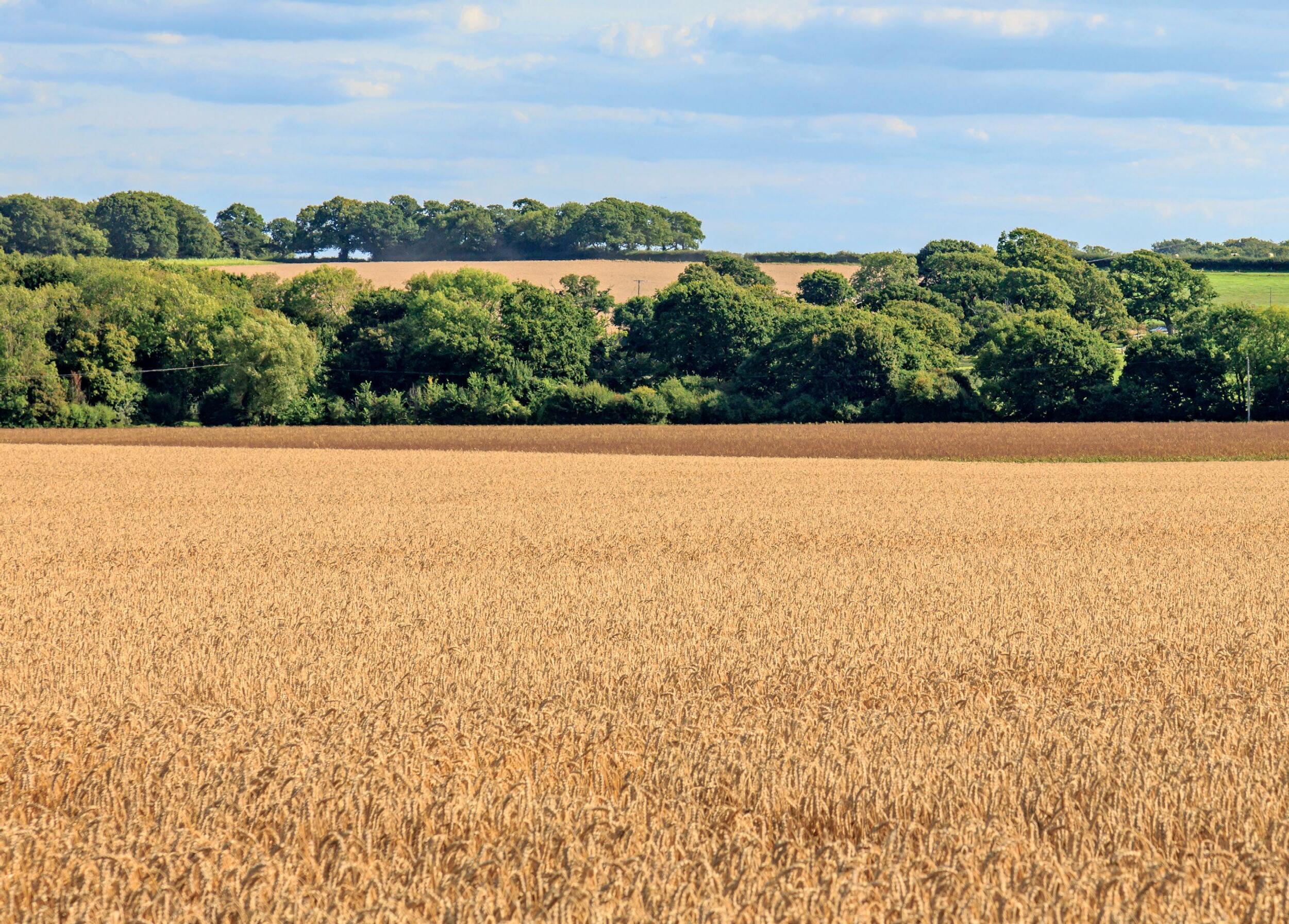


Improved yield even under reduced synthetic fertiliser conditions
Improved abiotic stress tolerance
Increase grain protein from 11.30% to 13.30% without using urea*
* Results from independent UK field trial (2024) in ‘Skyfall’ winter wheat.


Farming colleagues turned out in some force again in January at the Oxford Farming Conference to give Environment Secretary Steve Reed a piece of their mind. Meanwhile the NFU ploughs on with its plans for national days of ‘unity’. Their complaint, of course, is the government’s plan to dilute farmland’s exemption from inheritance tax (IHT) from 40% to 20% in 2026 – what the NFU have labelled ‘the family farm tax’.
But what exactly is this ‘family farm’ the NFU is talking about? Does it include James Dyson’s estate, for example? The man who owns 36,000 acres of some of the best farmland in England? That is quite some ‘family farm’.
What image are we currently projecting of ourselves to the public as we lobby for a reversal of the watering down of IHT relief for farmland, no matter how much land an individual owns? (And, as a farmer said to me recently: “Who are these farmers who can take days off to drive half the length of the country in their sparkling new £200,000 tractors to protest in Westminster?”) Are we really saying to the Government: “How dare you tax farmland estates worth as little as £1million?”
Personally, I don’t get it. Over a 40-year farming career I’ve managed to buy quite a lot of farmland and, as things stand, none of it is currently given away to my children.
Precision Soil Sampling
Accurately
Soil sampling provides accurate and reliable measurements of soil health and fertility enabling the targeted and efficient use of fertilisers and lime.

But just how worried about a potential 20% IHT bill for my heirs after my death am I supposed to get? Apart from the obvious fact that I’ll be dead, (so why worry anyway?) the Government has not abolished the key capital gains tax (CGT) relief on farmland given away upon death.
This relief means that my heirs will enjoy a ‘re-basing’ of the value of the farmland left in my will. In other words, no matter how long I’ve owned the land for, or how cheaply I’ve bought it during my farming career, upon my death it will be revalued to reflect current land prices. This means that the beneficiaries of my estate will then be able to sell the land completely free of CGT. This will give my heirs the option to sell off as much or as little land as they need to, and to meet any IHT bill without paying any CGT on those sales. Rightly or wrongly, that scenario is not giving me or my children sleepless nights.
Surely the important point the NFU is missing is that some watering down of farmland’s exemption from IHT was necessary to make it less attractive as a vehicle for ultra high net worth individuals wanting to pay less tax. So when I hear such individuals continue to grumble loud and long about having to pay 20% IHT on their farmland, it’s music to my ears.
If we are serious about the future of the ‘family farm’, we need to ensure that the tax system does not encourage investment in farmland simply as a way for super wealthy individuals to avoid IHT. If my children do decide to follow me into a career in agriculture, cheaper land will be a much bigger help to them than farmland made prohibitively expensive due to the tax advantages of owning it.



This month sees the 18th National Apprenticeship Week (NAW) taking place. Explore apprenticeships at Hadlow College.
This annual, week-long event, which runs from 10 to 16 February, showcases and celebrates apprentices, apprenticeship employers, parents, schools, colleges, universities and more.
Hadlow College is always keen to promote the apprenticeships we offer and the benefits they provide for both apprentices and employers, along with the exciting progression opportunities they present.
The benefits are numerous:
• Statistics show around 90% of apprentices stay on after completing an apprenticeship.
• Apprenticeships are open to anyone in England aged 16 years and above, whether employed, unemployed or leaving school. There is no upper age limit.
• According to the National Apprenticeship Service, 96% of employers that take on an apprentice report benefits to their business.
• There is usually minimal financial outlay for businesses, as the Government pays the vast majority of associated fees for apprenticeships offered by small businesses.
At Hadlow College we offer the following apprenticeships:
• Level 2 carpentry and joinery
• Level 2 golf greenkeeping
• Level 2 horticulture and landscape
• Level 2 sports turf operative
• Level 3 advanced sports turf technician
• Level 3 crop technician
• Level 3 horticulture and landscape supervisor
• Level 3 motor vehicle service and maintenance technician
• Level 5 golf course manager.
An apprenticeship can take you pretty much wherever you want it to, and we have plenty of apprenticeship success stories here at Hadlow:
Charlie’s career flourished after he completed his level 3 sports turf apprenticeship at Hadlow. It enabled him to get promoted from his position as a qualified groundsman at Millwall FC. He initially became assistant head groundsman, and then two years later he was offered the head groundsperson role.
Charlie said: “The advice I would give to new apprentices is to ask questions. You can never ask enough questions and we are all learning, so don’t be afraid to ask.”
Daniel is a recent success story. In 2023 he was named as the Toro Young Student Greenkeeper of the Year, winning a two-week, all expenses paid, work experience placement at the exclusive Vidauban Golf Club in the south of France. Daniel is first assistant at Farleigh Golf Club in Surrey.
Daniel said: “My Level 3 greenkeeping apprenticeship has been a massive benefit to me personally and for my career. Not least as it allowed me to win Toro Young Student Greenkeeper of the Year, but also because it provides me with a credential to prove my knowledge in the industry.”
James was our first student to complete a crop technician apprenticeship that was introduced in September 2021, gaining a merit for his course. He is now working permanently at Berryplants Ltd, the employer who put him


If you are interested in starting an apprenticeship, or think your business might benefit from an apprentice, we have a dedicated apprenticeship team to provide help and guidance.
through the apprenticeship.
James said: “I learnt valuable skills and experiences I wouldn’t have learnt if I hadn‘t been working alongside learning. I’ve obtained both practical and theory skills which enable me to do my job and perform it to a higher standard.”

The UK has long experienced windy weather, but in recent years farmers have been subject to a troubling trend: an increase in both the frequency and intensity of wind events. According to the Met Office, average wind speeds have risen by 1.5% over the past two decades, with gusts over 60 mph becoming more common.
We have all seen the effects of strong ‘Santa Ana winds’ in Los Angeles which have been linked to a greater spread and intensity of wildfires as the dry, powerful gusts rapidly fan flames and hinder firefighting efforts. This highlights the broader impact of extreme winds, with the UK now facing its own growing wind-related challenges that demand urgent attention and innovative solutions.
Wind can profoundly affect farming operations, from soil health to crop yields. One of the most visible consequences is soil erosion. High winds can strip valuable topsoil from fields, particularly during dry spells or over bare ground.
The drying effect of wind compounds the problem. Prolonged exposure to strong winds dries soil, reducing its ability to support healthy plant growth. This is particularly concerning in regions like the South East, where lighter, sandy soils are more vulnerable to drying out. As a result, crops can struggle to establish and grow, leading to reduced yields and higher input costs for irrigation and soil amendments.
Wind damage isn’t limited to the soil; the crops themselves are at risk. For fruit growers, wind can bruise delicate produce, cause premature fruit drop, create tree damage and reduce pollination.
While we cannot control the weather, farmers can take proactive steps to mitigate the impact of wind on their operations. The following strategies are proving effective across the UK and beyond.
Windbreaks, such as hedgerows, are a time-tested method for reducing wind speed. These barriers can decrease wind
Managing the growing impact of wind on UK farming.

MEGAN FITZPATRICK MRES
Horticultural Agronomist at Hutchinsons, SFI Specialist and BASIS qualified
velocity by up to 50%, protecting both soil and crops from erosion and damage. In addition to their practical benefits, windbreaks enhance biodiversity by providing habitat for pollinators and beneficial predators.
The Woodland Trust offers grants for farmers looking to establish hedgerows or tree lines, making this a cost-effective and environmentally friendly solution.
Planting cover crops, such as clover, rye or vetch, is another way to combat wind erosion. These crops protect the soil surface, reducing the risk of particles being lifted by strong gusts. Additionally, cover crops improve soil structure, enhance water retention and add organic matter, making the soil more resilient to both wind and drought.
To counteract the drying effects of wind, farmers can use precision irrigation techniques to maintain optimal soil moisture levels. Drip irrigation and other targeted methods deliver water directly to the root zone, minimising waste and ensuring that
crops receive the hydration they need, even during dry, windy conditions.
Adapting to increased wind requires more than individual effort. Policymakers, researchers and farming organisations must work together to provide farmers with the tools, knowledge, and financial support needed to implement effective solutions. Government schemes such as the Environmental Land Management scheme (ELMS) offer incentives for practices like planting hedgerows and adopting cover crops, aligning agricultural resilience with broader environmental goals.
As the UK continues to experience the effects of a changing climate, wind will remain a formidable challenge for farmers. However, with thoughtful planning and adaptive practices, it is possible to protect our soils, safeguard our crops and ensure the long-term sustainability of farming in the South East and beyond. By embracing windbreaks, cover crops and other innovations, farmers can not only weather the storm but thrive in the face of it.
What a fantastic start to 2025 for livestock producers in the eastern area. There were record prices achieved for cattle and sheep through the live auctions, with prices advancing since before Christmas in both sheep and cattle rings and between 20% and 30% up on twelve months ago.
On a weekly basis, more cattle and sheep could easily be sold in Colchester to a strong contingent of buyers who are willing to compete well for all stock.
The quality through the cattle ring was exceptional throughout January, with strong, good quality cattle regularly touching 370p/kg, while on 7 January there were only five cattle in the prime market below 300p/kg and only one below 278p/kg. This reflects both the tremendous quality and the very strong demand.
With numbers short nationally, it is hoped this trade will continue as long as the buyers of the prime stock can turn the purchases into a saleable product at an affordable price.
Cattle are regularly fetching over £2,200
and up to £2,600 a head in the prime ring and more could easily be sold to advantage.
The cull cow trade is also remarkably strong as it often is after Christmas, with exceptional levels seen. Farm Assured British Beef and Lamb (FABBL) cows through January were trading at between 200p/kg and 270p/kg for Hereford crosses and Simmental crosses in Colchester. Feeding cows are also keenly sought.
The store trade is seeing very few coming forward, but where reported they are fetching exceptionally high prices as vendors attempt to refill yards where numbers are short.
In the sheep market the hogget season started remarkably well, with hogs regularly trading at £160 to £190 a head, some £30 a head up on 12 months ago. The wet weather at the beginning of January did not help, but still buyers are desperate for stock and looking to compete strongly in the market.
Cull ewes are also above 12 months ago, with numbers short, and many more could
be sold to advantage if not in lamb.
Hopefully numbers will have increased through late January/early February when this report is being read and this can be reported on in the March issue.
As a result of the prime hogget trade, store sheep are also dear, although again the wet weather is not helping.
In the pig market the trade remained strong throughout the Christmas and post-new year period, with more numbers required. Although reported falls on the continent may have some negative effect, we are still seeing prices that mean producers of prime pigs will return a sensible living.
Let us hope the good news for the early part of 2025 continues throughout. We have many uncertainties in agriculture from all sections, including weather, international issues and politics. Farming is a sustainable industry which will tend to work together, and hopefully we can all come through the negative issues with some positivity.
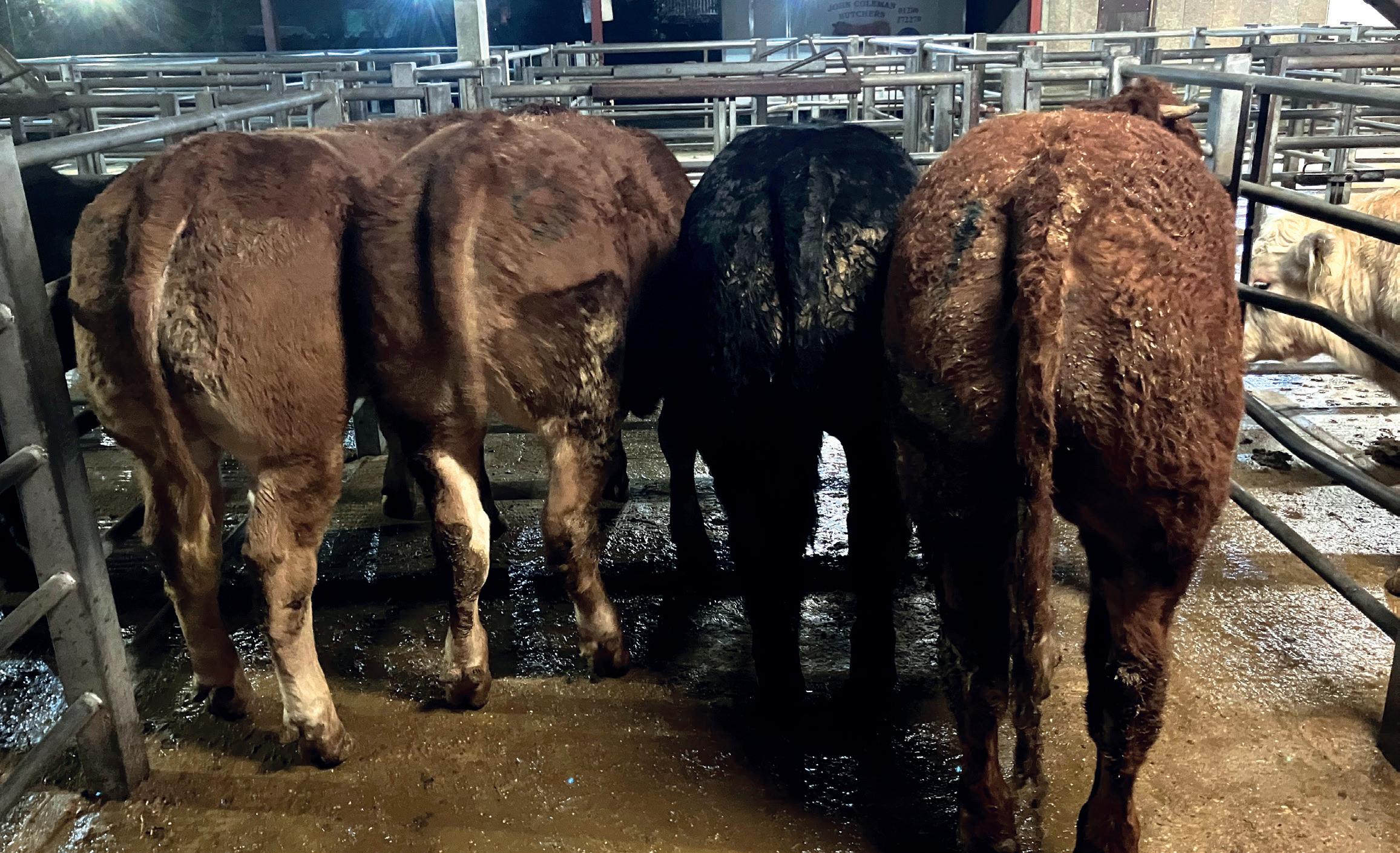
GRAHAM ELLIS FRICS FAAV FLAA
For and on behalf of Stanfords
T: 01206 842156
E: info@stanfords-colchester.co.uk www.stanfords-colchester.co.uk

The speed at which prices have risen in the first month of the year has taken all of us in the industry by some surprise.
Everybody in the livestock sector (cattle and sheep) has for some time been warning of the imminent danger of dramatically short supply largely created by a contracting industry caused by the long-term greed of a retail sector hell bent, with political support, on keeping prices to the consumer as low as possible without having any regard as to how those providing that supply might survive, even at subsistence level, and certainly not allowing them any chance to invest and expand for a brighter future.
This has been said time and time again, but nobody listens and certainly nothing is done to improve the lot of the ‘hands on’ working farmer. Indeed, our ‘bright new future’ government has done its level best to sabotage family farms by taking 20% out of their futures each generation rather than giving them any encouragement to kick on and go forward and feed the nation.
Sadly, our politicians, civil servants, popular media and mainstream consumers have absolutely no idea of how British agriculture works, and take their advice only from retailers, big business processors, factory farmers and an over-zealous environmental lobby, all of which is chasing so much of our valued heritage into a period of disillusionment and abandonment.
Prices and therefore margins react to market forces and factors such as the weather, the volatility of currencies, German foot and mouth disease, Trump Talk and

101 other issues, combined with supply and demand (that farmers try desperately to plan and manage) on a daily basis.
Maintaining close contact with the wider market is essential, and in these times of rapidly rising cattle and sheep prices, what might have been a good price last week seems horrendously out of line come the next.
For example, everybody wants to buy more store cattle immediately, in a month, or later in the spring, so why not place them in front of open competition in the sale ring in the market of your choice, having regard to your location, your stock, your restrictions associated with TB or bluetongue, and taking the advice of your auctioneer or fieldsman, whose interests lie firmly with your returns?
Too many horror stories are already coming out of cattle sold privately to save 3% but to lose 10%, and maybe substantially more!
Market staff specialise in sorting stock into appropriate cohort groups according to conformation, breed, age, sex and size, and this marketing bonus is brought to the fore even before the effect of having the right customers for the right goods brings competition out to its fullest extent.
Competition is everything for producers and yet too many in the supply chain are desperate to suppress it in order to better their position, either controlling those below
them or to satisfy powerful masters further up the chain.
Dissatisfaction with conditions in certain milk contracts is regularly voiced by farmers witnessing market prices improving as any number of buyers, with different outlets, customers and specifications, compete strongly whilst those contracted farmers have to go to their choice of one and play catch up on price.
Mealy-mouthed excuses concerning welfare, journey times and environmental issues are simply box ticking systems devised by clever ‘supermarket mantra’-trained whizz kids who recognise the advantages to those above in the chain by limiting competition while bringing no benefit to those below.
Auctioneers and their market staff clearly believe in their system and support their customers with a passion, but they also recognise that others may choose an alternative and go direct to an abattoir or a private buyer.
But establishing that right price is the important matter, and that opportunity should be open to all, big or small, with reference to market forces and prices, without restrictions thrown around by many to serve their own purposes not the common good.
Support the common cause; respect the market and use it regularly.
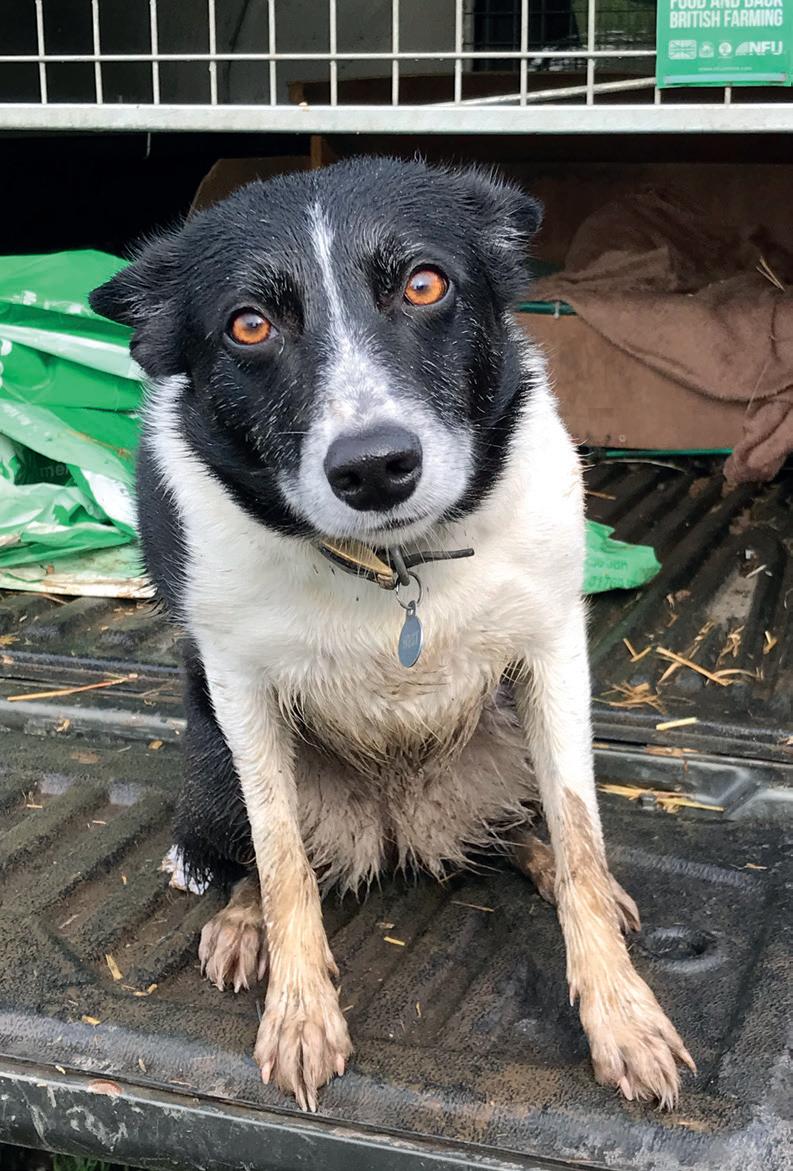
ALAN WEST Sheep farmer
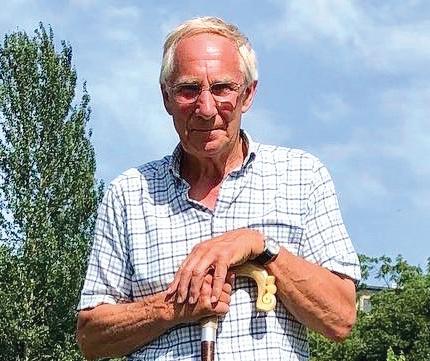
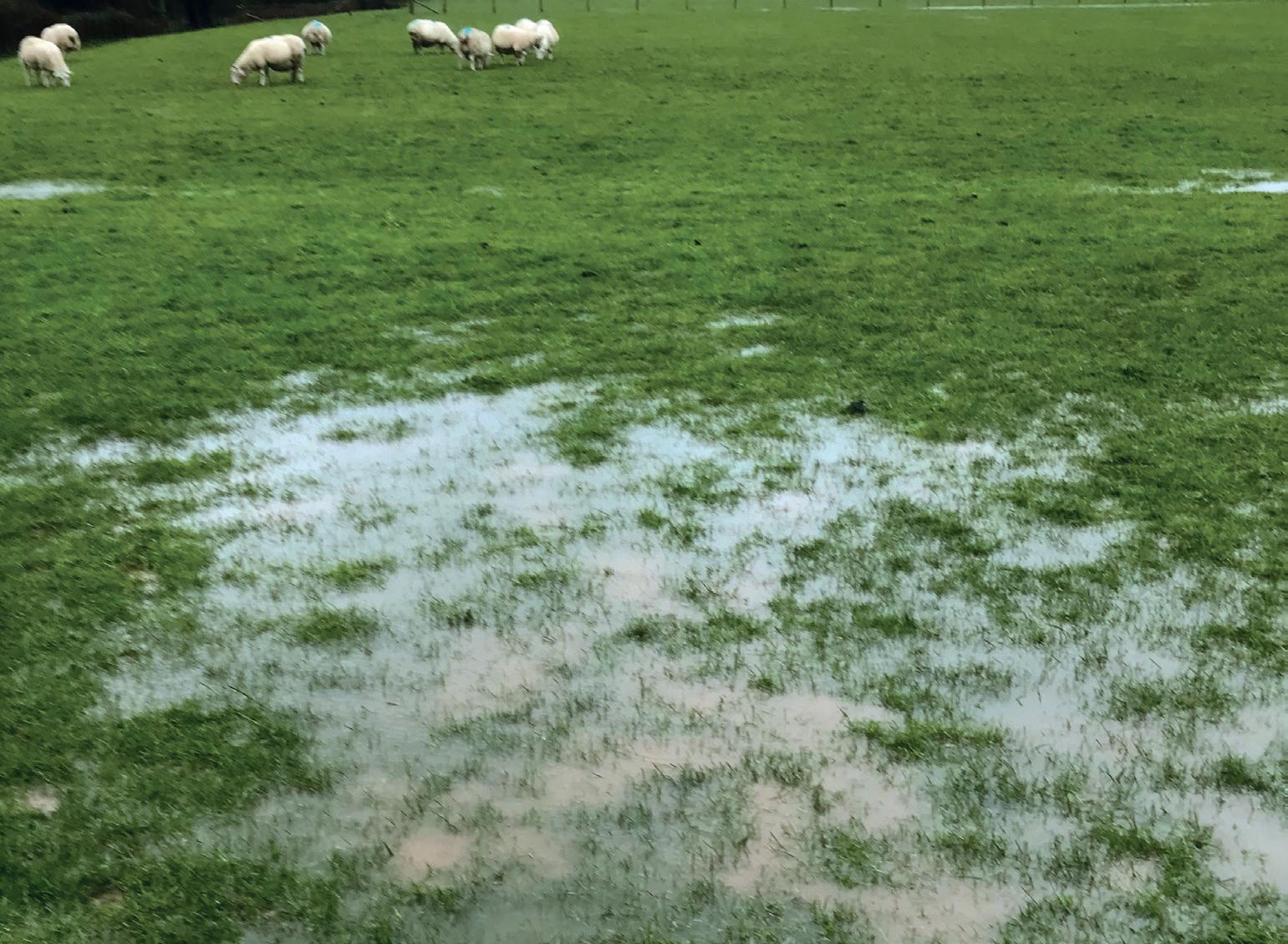
I suspect that many entered the New Year with hopes for a change in fortunes in the sheep world. Unfortunately, the weather for the first week of January rather dampened the enthusiasm. Come the first weekend of the month we were paddling in mud, with some paddocks having large areas of standing water that we have not seen for a number of years.
We’ve had worse in the past and managed, but it really was not a good way to start the year and certainly helped to level expectations. There is grass in front of the sheep, although not an abundance, but quality is somewhat questionable; molasses blocks help to boost rumen energy levels, which may keep the rumen biome happy but does not seem to have the same impact on the sheep that it services. Sheep certainly have the capacity to let you know when they are not happy; on some of the cold, windy and wet mornings they just looked utterly miserable, so much so that we resorted to putting a bit of hay out for some of the ewes. Not that they needed it, but I’m sure they appreciated the bit of extra dry matter.
It’s those sorts of days when one thinks, probably being somewhat anthropomorphic, that it would be nice to be able to house the ewes. It would make life so much easier,
although I’m not sure that the sheep would totally appreciate it, particularly as our sheep have never been housed, apart that is, from a couple of days in a pen each year as they are drifted out of the lambing paddock for mothering up and routine treatments; even then they always seem, after 24 hours or so, to favour getting back out to grass in preference to the relative warmth and comfort of a mothering pen. Fortunately for us all, sheep (many breeds, anyway) really are a lot tougher and hardier than they appear and most people imagine.
On the plus side, all the predictions for the sheep sector in the year in front of us seem to be positive, in spite of the concerns and upheavals within the sector generated by government policy at the end of 2024. Although, to be fair, that same policy has in part contributed to this positivity. Some of the challenges faced by many hill farmers, where reductions in subsidy payments have encouraged them to divert land to alternative uses, have driven cutbacks in stocking rates and sheep numbers, with consequential impacts on supply – and supply is king when it comes to sheep market prices.
A continued steady decline in the national flock, marginally tighter supplies from the antipodes and a reduction in the EU sheep
flock have all contributed to a lessening of supply, the principal stimulus for maintaining firm prices for both lambs/hoggets and cull ewes and for prospects. Those who are doing the job right should see a positive margin this year. We could always do with a bit more, but we do need to be aware of what the consumer market will stand; as ever it is price at the retail end that is the key driver of demand, on the subject of which we simply cannot ignore the contribution to demand made by the halal market, which, once exports are added into the equation, accounts for about 30% of lamb sales. It’s a market that we cannot ignore, however much some producers would like to; it is a huge segment of our market that really does strengthen and support sheep meat prices.
The prospects of a sensible margin does not, however, leave room for complacency. Opportunities for improving margins still exist. It’s rather too easy to do what we have always done; the familiar is rather more comfortable than the unknown, but the simple expedient of standing back and taking a critical and detached view of what we do will often flag up areas for improvement, possibly only small gains but every little helps. As an industry we are still rather too focused on the output per ewe. Considerable resources may be expended
trying to gain a percentage or two on lambing performance without a proper consideration of the incremental costs which can frequently exceed additional returns. Output in terms of kg of lamb per hectare can provide a more accurate measure of true efficiency than output per ewe.
The occasional critical appraisal of any sheep enterprise is a good thing, but taking the trouble to step back and look at what you are doing does not mean that changes are inevitable. If the outcome of a truly honest appraisal doesn’t flag up any obvious scope for improvements, why change? And if requirements for some changes are identified, they should be appropriate. For example, it is almost unescapable that last year’s poor performance in the arable sector will impact on of the costs of hard feed this lambing season; a good incentive to cut hard feed and improve performance off grass and forages. But it may not be quite so simple. There is still a need to consider the nutritional requirements of the ewe, particularly as we approach lambing.
Ewes cannot perform off grass that isn’t there; increasing performance off grass and forages necessitates some increase in grass/forage resources, either in terms of area allocated per ewe or by increasing the nutritional output per unit area i.e. through better quality grazing. Simply deciding to reduce costs by cutting back on hard feed without appropriate adjustments on the other side of the equation may generate costly issues around lambing and for subsequent lamb performance. It is important to consider the reasons for providing hard feed. For many it simply supports high levels of ewe output; for others, particularly those on permanent pasture, it may be required to make up for shortcomings in the quality and or quantity of grazing, particularly where this is combined with relatively high levels of stocking, where hard feed may simply be a means of buying in additional hectares when a rather more strategic approach may be required.
While deciding to reduce or remove expensive hard feeds may seem an obvious solution to cutting costs, realistic and informed decision making is essential. As obvious as it may appear, it may not always be the correct or appropriate approach; short term savings may have drastic, long-term cost implications.
Well, a short sharp cold snap was just what the doctor ordered, although the mud has now returned…
I can’t quite decide which is the lesser of two evils. Carting water to the livestock while some of the pipes are frozen, or slipping and sliding in the mud after the large thaw.
I was reading an article the other day which was explaining how a passenger jet plane had been converted to transport dairy cattle from the UK and Europe to Saudi Arabia. This is now proving to be a very popular source of income for many dairy farmers. The plane is currently making two or three journeys a week to Saudi.
Saudi currently produces approximately one billion litres of milk per year in the middle of the Arabian desert, not the first place in the world that I would look to find a dairy farm. A farming company owned by The Kingdom of Saudi is the biggest producer of milk, bread and cereals. It imports fodder from all over the world to feed the cows in 40ft containers and these are transported via sea to the Kingdom. Twenty containers of forage left UK shores last week alone.
In 1997 the dairy farm in Saudi had 300 cows in an air-conditioned barn. Today, the company has more than 37,000 cows. Each cow’s average yield is around 41 litres per day.
Despite the extreme heat (although the air conditioning is pretty amazing), the cows milk well. Water mist sprays are also used constantly to keep the cows at the desired temperature. The operation is run with military precision, with a team of more than 700 workers.
The cows are milked four times a day and are fed 90 minutes before each milking. The site looks to be an amazing place. It has all the facilities needed to process and pack
the milk on site and then transport it. Saudi has a huge future commitment to the dairy industry. This is far from the truth here in the UK.
The innovation for this empire comes at a huge cost in water. Water is obviously quite a scarce commodity in the desert. It takes 1,800 Iitres of water to produce one litre of milk, more than four times the amount of water needed in the UK. I wonder if they have to spend hours filling in paperwork for the Farm Assurance man or ClimateCheck.
I sat down with Teddy the other night to watch some of the video footage of the Saudis milking and it was fascinating. Definitely worth a watch on YouTube. Back at home, farm life continues as per normal. The sheds have been dunged out and we feel as up to date as we can be. We now have another ‘trucker’ in the family as Monty passed his HGV test. Hooray. With Germany discovering the first farm (of the water buffalo variety) to have an outbreak of foot and mouth disease, we are on high alert. Lorries etc are being asked to spray their wheels with disinfectant as a precaution. As per usual I feel that the Government was pretty slow to react. The outbreak had been in the media for more than two weeks before they decided to stop imports from Germany. I am old enough to recall the catastrophic pyres that seemed to burn eternally in 2001. Let us hope and pray that it doesn’t reach our shores. Until next time, stay safe.


It will soon be time for turnout, when hopefully concerns about pneumonia and scours will fade, but not before we take advantage of having stock close by to carry out essential husbandry tasks. Here are some measures you can take to ensure the best chance of a disease-free season:
The need to supplement stock may be dictated by their metabolic requirements and pasture quality, plus that of any forage you choose to put out. Pasture analysis can identify some deficiencies that could be mitigated by giving boluses to your animals.
Deficiencies are generally diagnosed by discussing disease history, as well as blood sampling stock, indicating systemic levels of trace elements such as copper, selenium and cobalt, as well as those essential for healthy births, such as iodine. These tasks are much more efficiently carried out prior to turnout to avoid rounding up and stressing animals later in the season.
It’s time to consider lungworm risk. Lungworm typically affects animals in their first or second grazing season, before they develop a degree of immunity. Lungworm can affect all ruminant and camelid species. Infection begins approximately one week into grazing, and clinical signs include weight loss, coughing and difficulty breathing.
Lungworm burdens can be fatal. If a discussion with your vet determines lungworm risk on your pasture, vaccination (licensed for cattle) is possible.
The risk of disease caused by
gastrointestinal parasites in the first grazing season is higher. Youngstock must be monitored for signs of parasitism, ranging from diarrhoea to weakness, failure to thrive and sudden death.
The history of the pasture will determine its risk; worm eggs may have survived winter on pasture. Faecal egg counting (FEC) regularly after turnout is the best way to monitor parasite populations and indicate how and when to treat. Treating too early is minimally effective and promotes resistance. If treatment is too late, permanent damage could already have been done to the digestive system, so there is a delicate balance to uphold.
Your vet should be on hand to help guide you through the frequency of sampling and interpreting your results.
Soft pasture could potentially exacerbate lurking lameness issues, so foot checks are essential before sending stock out. Foot checks are particularly important if you’ve been understandably reluctant to turn ewes over in late stages of pregnancy.
Once lambed, you can safely investigate any overgrown or problematic feet, make sure infections are treated, trim underrun or overgrown hooves and have them sound before returning to pasture.
If you are not already up to date with clostridial vaccines, then turnout presents a good opportunity to get on track. Clostridial diseases include botulism and tetanus, and the causal bacteria can live in soil for years.
Animals become infected by ingesting their
spores or via grazes or wounds, and infection can result in sudden death or sometimes severe systemic disease. Vaccinations for clostridial disease are relatively inexpensive.
This year it may also be wise to consider whether you intend to vaccinate stock for bluetongue virus. There is potential for this virus to have overwintered or to emerge in newborn animals from dams that were bitten by infected midges during pregnancy. It pays to consider how long it would take for onset of immunity if you administer a primary course (which can be one dose or two, three weeks apart, depending on the vaccine) and to plan ahead.
Of course, this is not an exhaustive list, but a health planning chat with your vet should identify any potential risks to your stock, depending on your location, type of livestock, parasite forecasts, pasture and disease history.
Vets prefer to prevent disease than treat it, which upholds animal welfare and makes economic sense. The time just before turnout presents a great opportunity to get beneficial husbandry tasks done before your animals disappear off to the fields, no doubt evading capture for a little while.
Here we are again with yet another article that could start with a moan about the weather – though at least it finally feels appropriate for the time of the year and we have managed to see some sunshine. Like most of the population, we are all desperately trying to avoid the winter colds going around by wrapping up warmer, eating that bit healthier, getting our ‘flu jab or avoiding socialising with those we know to be infected.
The same principles apply to our livestock when protecting against pneumonia; provide more shelter and more feed, vaccinate and isolate sick animals. The weather has been tough and not on our side, with wildly differing temperatures overnight and during the day, and until now plenty of warm and wet weather has created the perfect pneumonia storm. Sadly, we have been seeing the effects of the storm across our youngstock, affecting calves varying from young and still being milk-fed to seemingly strong six to 12 month-old cattle.
The calls to the practice have varied from advice on pneumonia treatment, visits to treat and assess groups of calves and, sadly, plenty of post mortem examinations (PMs). PMs can provide us with useful information, from visual findings to the varying samples we can take for further testing.
It is always worth keeping any fresh carcasses and contacting your vet, as these may yield the best chance of a diagnosis. We have also been taking further diagnostic samples from live calves, including nasal swabs and blood samples, to further our picture of the situation on farm, or when PM samples are not available.
The results across our clients have varied greatly from farm to farm, showing the need to get good quality samples to help direct us towards the best treatment and management. Going forward on each farm, we aim to use the results to change management i.e. a change in vaccination protocol, change in feeding or updates to housing.
Unfortunately, we have even seen vaccinated animals succumb to illness. Upon further investigations we have found reasons why there appears to have been ‘vaccine failure’; these have varied from cases where the causative pathogen has not been vaccinated for to inappropriate farm environment and management, such as poor housing or poor nutrition, and even some outbreaks of non-infectious pneumonias caused by toxins.
This has served as an important reminder that, although vaccines are great at allowing our animals to safely build their own immunity, we need to give our calves the best opportunities to be able to do this and then provide them with an ongoing suitable environment to be able to use the tools we’ve given them.
It’s important to remember that although extra feed and bedding, buying vaccines and making changes to buildings is expensive, it is cheaper than the cost of treating pneumonia and the ongoing losses that need to be recuperated. We may not be able to control the weather (if only!), but we can give our calves the best chance of surviving in it.





Crystalyx Pre–Calver is research proven to reduce the risk of milk fever, di cult calvings and retained placenta. Improved colostrum promotes calf health and vigour, with a full complement of vitamins, minerals and trace elements supporting the cow’s immune system.
Pre–Calver supports rumen condition for an easier transition into lactation and enhances post-calving conception rates.



Call us today or visit our website: 01227 763939 furleypage.co.uk

Following the release of the latest figures from the Health and Safety Executive (HSE), which show farming is one of the most dangerous professions in the UK, a personal injury lawyer with solicitors Clarke Wilmott has said more needs to be done to keep the industry safe.
The new figures show that 27 people lost their lives on farms in 2023/2024, including two children, and that while agriculture only accounts for 1% of the working population, 20% of all workplace deaths are in this sector.
Specialist serious injury lawyer Lee Hart said that despite increased awareness of health and safety measures, the number of deaths and life-changing injuries remained too high, adding that the HSE’s decision to halt farm safety inspections was concerning.
“Farming is undoubtedly a dangerous profession and of course, accidents are going to happen.
“But that aside, incidents are happening too frequently. For more than a decade, the Farm Safety Foundation, also known as Yellow Wellies, has been running its Farm Safety Week campaign to ensure
farms are a safer place to live and to work on. These initiatives are incredibly important to reduce accidents across the agriculture industry, but more needs to be done.
“It is concerning that the HSE has decided to put a stop to farm safety inspections, a decision which is likely to increase risks to the health and safety of workers in the farming sector. While they will continue to investigate serious accidents or deaths, the halting of safety inspections, training and events could lead to an increase in serious injuries and lost lives.
“We need the HSE to work collaboratively with farmers to improve standards and prevent accidents occurring.”
Lee said further data from insurer NFU Mutual showed that there were 937 farm accident claims in 2023/24 totalling more than £68m. Claims included those related to falls from height, trapped body parts and falling objects.
Lee continued: “Major agricultural insurers, such as NFU Mutual, will increasingly be relied upon to fill the gap left by the HSE halting investigations.”
As a lawyer specialising in contentious inheritance and trust matters, Jennifer Alderman, an Associate at Brachers law firm, understands the unique challenges that farmers face when planning for the future. Here she shares the typical disputes that arise and how best to avoid them.
There is a common misconception that it is not possible for a cohabitee to establish an interest in property or land owned by their partner. However, if the non-owning cohabitee contributes financially or otherwise, they could gain an interest in the land by arguing that there is a ‘common intention constructive trust’. In the event of a relationship breakdown, the cohabitee could force a sale and get a share of the sale proceeds.
Many people are unaware that marriage usually revokes a Will. An individual might divorce and subsequently make a Will leaving their estate to their children. However, if they remarry, their Will is likely to be automatically revoked. If they do not make a new Will,
their estate will pass in accordance with the intestacy rules. Under the current intestacy rules, a spouse receives the first £322,000 and half of the remainder of the estate. The deceased’s children would receive only the remaining half.
It is increasingly common for disputes to arise after death, especially if someone does not receive what they were expecting or were promised. A person may lay claim to an asset that they were promised by relying on the doctrine of proprietary estoppel. They could, alternatively, seek to challenge the validity of the deceased’s last Will.
There are also certain categories of person, such as a spouse, child or cohabitee of at least two years, who may issue a claim for provision from an estate under the Inheritance (Provision for Family and Dependants) Act 1975.
Cohabitees may wish to consider entering into a cohabitation agreement by which they
JENNIFER ALDERMAN
Associate, Brachers LLP
T: 01622 776534
E: jenniferalderman@brachers.co.uk www.brachers.co.uk

“Brachers has the personal touch, listening carefully to clients’ needs in a friendly, sensitive and helpful manner.”
Proud to be recognised for our agricultural expertise in leading directories, Chambers and Partners and The Legal 500
can agree how to manage their finances, the terms of occupation and ownership of any solely or jointly owned property. A court will take this into consideration when resolving any disputes.
Avoid misunderstandings by having open discussions with family members about your plans for the farm. Ensure that everyone is on the same page and that the necessary legal documents are in place to reflect your wishes.
A professionally drafted Will can help avoid disputes among heirs. It is important to outline clearly how you want your assets to be distributed. It is also important to update your Will regularly to reflect changes in your assets and/or family circumstances.
It is often helpful for lawyers, accountants and financial advisors to communicate and work with each other. This will help ensure that your legal and tax goals are aligned and that your estate planning is in the best interests of the farm and the family.
If you are worried about potential disputes, seeking legal advice at an early stage can often reduce the likelihood and severity of conflict.

Savills are delighted to bring to the market a collection of rural investment opportunities for sale near Tunbridge Wells. Each plot will be sold via auction unless sold prior.

Tunbridge Wells, Kent
Tunbridge Wells 1.6 miles Crowborough 5.6 miles
A woodland site containing a subterranean network of bunkers and passages, some 60 feet below ground, built between 1940 and 1941 and extending to around 7,000 square feet. Urban fringe location, set within an AONB.
Freehold
1.90 hectares (4.69 acres) | Offers Invited
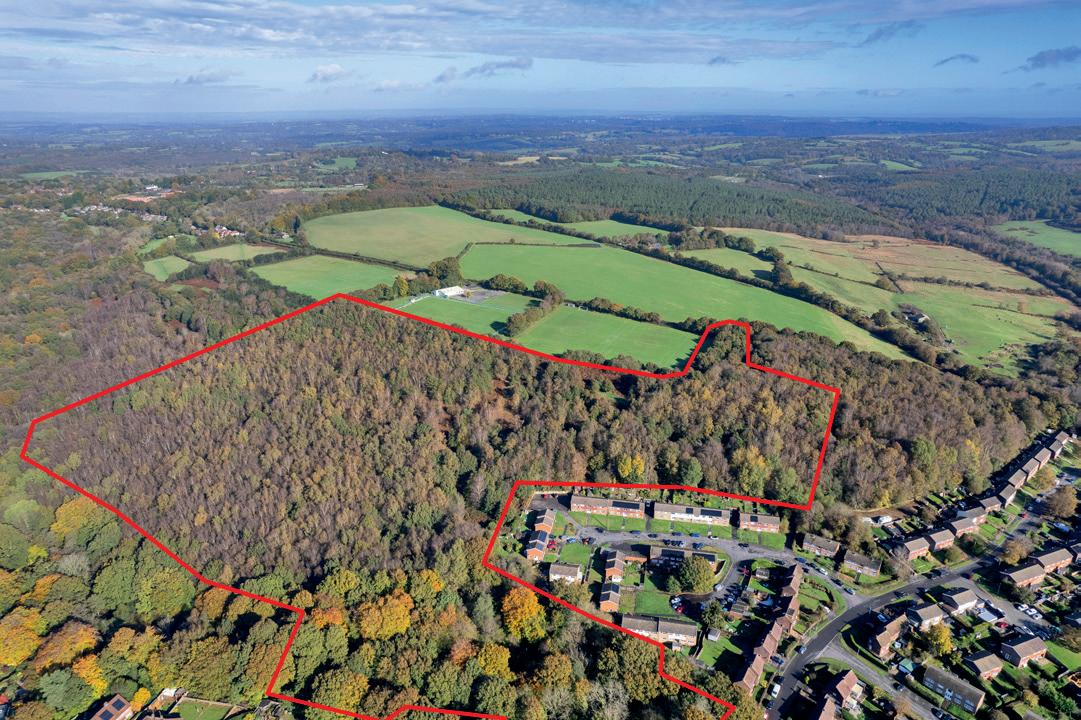
Crowborough, Kent
Crowborough 1.8 miles Tunbridge Wells 7.5 miles
Mixed broadleaf woodland with some mature standing trees and areas of natural regeneration, designated as a Site of Nature Conservation Interest (SNCI). Identified in the national forest inventory 2020, with part of the land included in the Ghyll Local Nature Reserve.
Freehold
9.8 hectares (24.21 acres) | Offers Invited

Eridge, Tunbridge Wells, Kent
Tunbridge Wells 4.7 miles Crowborough 3.7 miles
Available in Two Lots or as a Whole. Grade 3 agricultural land with a small wooded shaw, mainly noted to be ash, set within an AONB. The land is divided into two plots, with Plot 1 extending to 4.49 acres and Plot 2 to 17.68 acres.
Freehold
8.93 hectares (22.07 acres) | Offers Invited

Tunbridge Wells, Kent
Tunbridge Wells 1.6 miles Crowborough 6.3 miles
Broadleaf woodland set within an Area of Outstanding Natural Beauty. The area is identified as Deciduous Woodland in the National Forest Inventory 2022 and borders Hargate Forest which is located to the North. Striped green area to be retained by the current owner.
Freehold
7.24 hectares (17.89 acres) | Offers Invited
Further details are enclosed within our brochures or are available on request.
Bea Adamson
South East Development
01732 789 777
bea.adamson@savills.com
Paul Mooney Auctions 020 7824 9038 PMooney@savills.com
Lambert & Foster, which is this year celebrating 125 years of excellence, has helped generations of clients buy, sell and manage properties over the years.
It is demonstrating that expertise once again by putting the stunning Lovehurst Manor Farm back on the market some 37 years after the firm last sold it, further cementing Lambert & Foster’s place as a cornerstone of the property market in the South East.
Founded in 1900, it has grown to become a trusted name in property services across Kent and Sussex, known for professionalism and local expertise. The business has evolved with the times while remaining true to its core values of integrity, dedication and unparalleled customer service.
Director Alan Mummery commented:
“This is a rare opportunity, with the main house located on its own moated island. The property presents a great opportunity to sympathetically renovate a superbly located house and remains as appealing as it did when we last acted as sale agent 37 years ago.”
Lovehurst Manor is a handsome, Grade II listed manor house believed to date back to the 17th Century and is on a moated island accessed by a bridge. The moat is a scheduled monument listed by Historic England and encircles the house. Lovehurst Manor was a traditional Wealden farm, evidenced by the traditional oast house and buildings which lay close to the main dwelling.
Lovehurst Manor, traditional oasthouse, buildings and 18.25 acres of farmland and woodland: Located on a moated island site, the house consists of six bedrooms. The house retains many original period features but would benefit from general updating and modernisation throughout. Located close to the house on the island is a traditional twin roundel oast house offering potential for conversion subject to planning permission. There are a number of traditional farm buildings including structures in need of general updating and repair. Some of these buildings previously enjoyed planning permission for residential conversion. Included with the farmhouse is farmland immediately adjoining the manor house and providing privacy to the property, including five acres of fallow arable land, attractive pasture parkland running parallel to the moat and a block of 7.45 acres mixed woodland.
No 1 and No 2 The Stables: A pair of converted two bedroomed stables. Both cottages benefit from established garden
areas to the rear and each own part of a detached garage and adjacent store.
The old dairy and farmland extending to 4.6 acres (1.86 hectares): The former traditional dairy is surrounded by farmland on two sides – 2,470 sq ft (220 sq m). The building is the subject of a planning application for a change of use to residential use. The old dairy is offered for sale with farmland comprising a rectangular block extending to some 4.60 acres (1.86 hectares).
24 acres (9.71 hectares) of arable land: An irregular shape block of arable farmland in three fields. The land comprises Grade III arable farmland which is gently undulating in nature.
23.9 acres (9.67 hectares) of farmland, woodland and pasture: An irregular shaped block of land comprises Grade III arable farmland extending to 18 acres, 3.58 acres of parkland pasture and 2.3 acres of mixed woodland. The land is dissected by the moat stream.
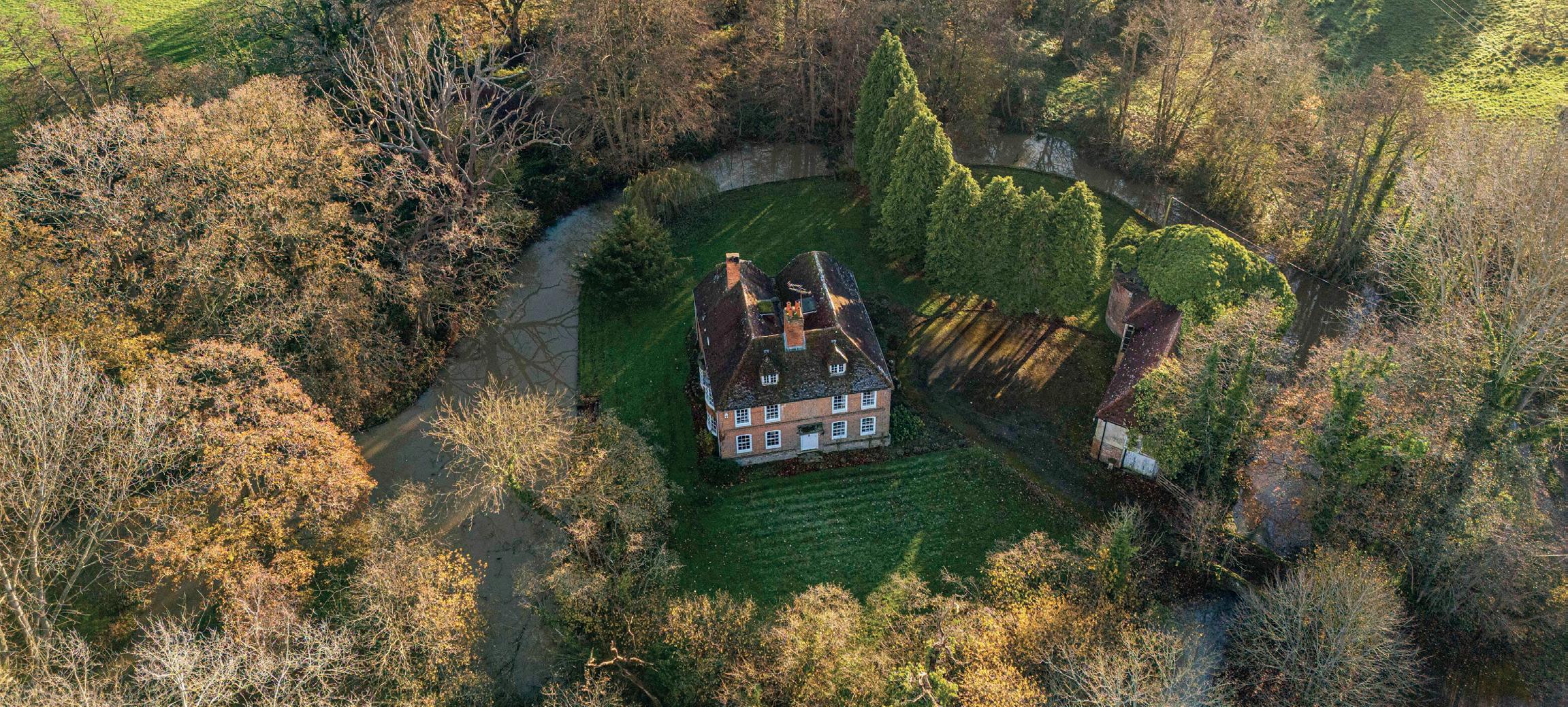
A wonderfully situated, Grade II listed detached three bedroomed farmhouse with detached annexe, outbuildings, stabling and sand school set within 30 acres of pasture and woodland with a superb rural outlook is on the market with Samuel & Son.
In a superb rural situation within the High Weald AONB enjoying unspoilt views over surrounding countryside, Burnthouse Farm is a beautiful Grade II listed farmhouse of 16th century origin. The house offers a wealth of period charm and features, including exposed beams, inglenook fireplace and leaded light casement windows. The present owners have sympathetically extended and refurbished the property during their tenure to create a wonderful family home, notably with the addition of a sizeable oak framed extension to the rear of the house which has a vaulted ceiling and glazed sides providing a substantial family living/entertaining space with superb views over the farm land and beyond.
There is an excellent range of bespoke
joinery and cabinetry throughout the property and a lovely combination of timber and stone flooring on the ground floor.
On the ground floor there are four reception rooms – notably a large sitting room, a family room with inglenook fireplace with wood burning stove, a study and a more formal dining room.
On the first floor there are three bedrooms with a large master bedroom which has an extensive range of bespoke fitted furniture providing ample storage. There are two further double bedrooms and a family bathroom which is well designed.
Set next to the farmhouse, the detached self-contained annexe offers 755 sq ft of accommodation which includes a large sitting room, a double bedroom, a fitted kitchen and a bathroom with separate shower and bath together with its own garden area and terrace.
Off a long private driveway is an expansive gravelled courtyard parking with the cart lodge-style garage having three open bays and a secure workshop/store.
The farmhouse is enveloped by gardens and grounds that have been attractively landscaped over the years.
The stabling, sand school and modern agricultural barn are situated to the east side of the house with separate vehicle access onto the land/track. A tarmac driveway leads to the farm barn 18.29m x 7.62m. There are four open fronted bays and one enclosed bay secured by a roller shutter door. The drive extends down to the stable yard where there is a traditional oak framed stable block comprising two loose boxes with the 40m x 20m sand school set in the adjoining field enclosed by post and rail fencing.
The land wraps around the farmhouse and comprises a number of pasture fields, all enclosed by post and rail fencing with interconnecting field gates and ideally suited to grazing. The pasture extends to about 14.33 acres with parcels of woodland totalling some 16.41 acres set mostly to the periphery of the property that provide excellent screening and privacy.
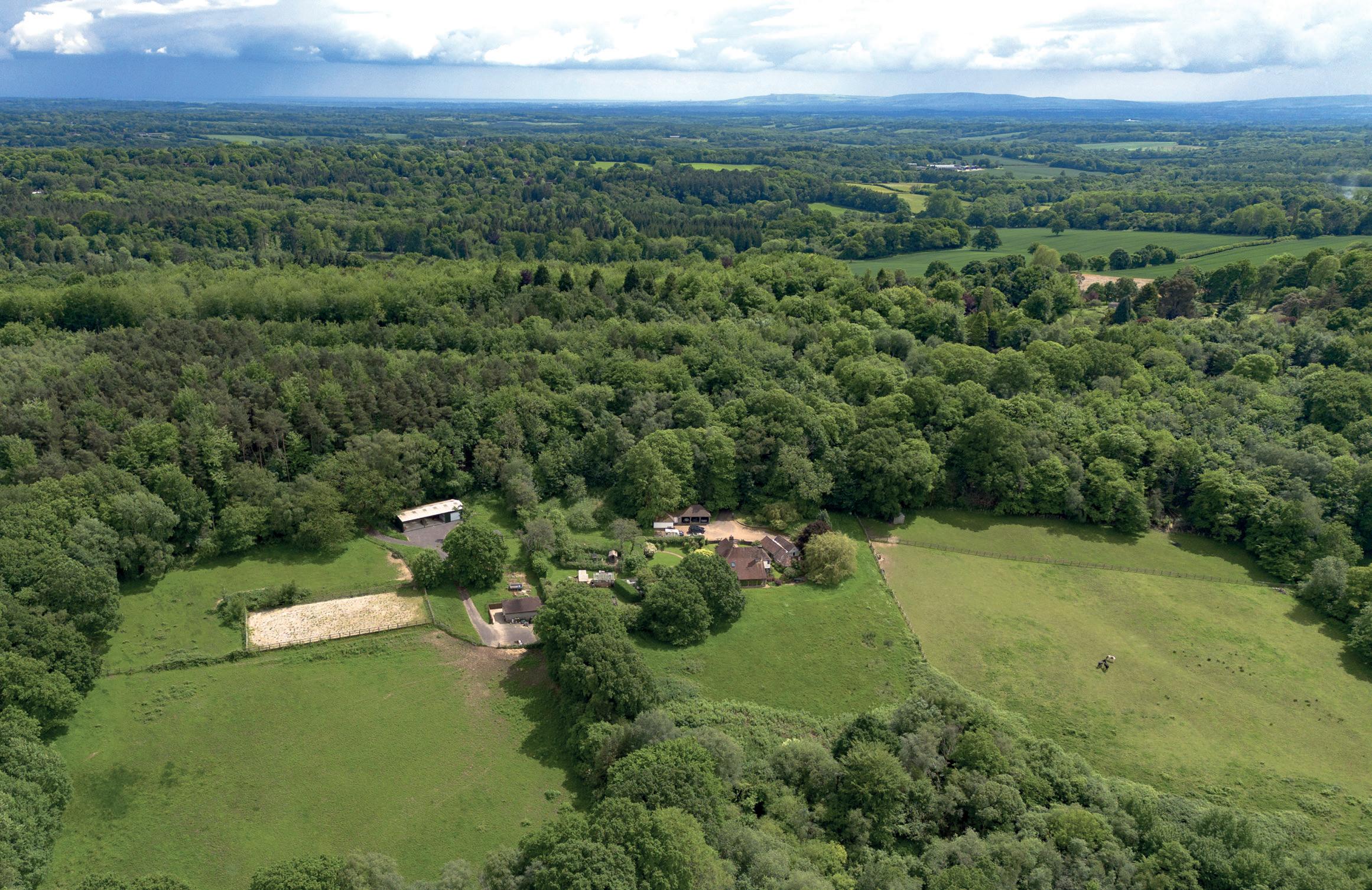
For more information, contact Samuel & Son Horam office: 01435 810077







Savills are selling, on behalf of the Trustees of the Lady Rupert Nevill 1995 Settlement, attractive deciduous woodland at Jarvis Brook.
The land extends to approximately 9.8 hectares (24.21 acres) and compromises mixed broadleaf woodland with some mature standing trees and areas of natural regeneration. The land is a designated Site of
Nature Conservation Interest (SNCI). The area is identified in the national forest inventory 2020 and part of the land appears to be included within the Ghyll Local Nature Reserve.
The site is located within the Wealden local planning authority. The site has been submitted for strategic housing and economic land availability assessment on three separate occasions in response to the council’s call for sites process, but has not been allocated. There is no planning history of applications, and the site is not situated within a conservation area.
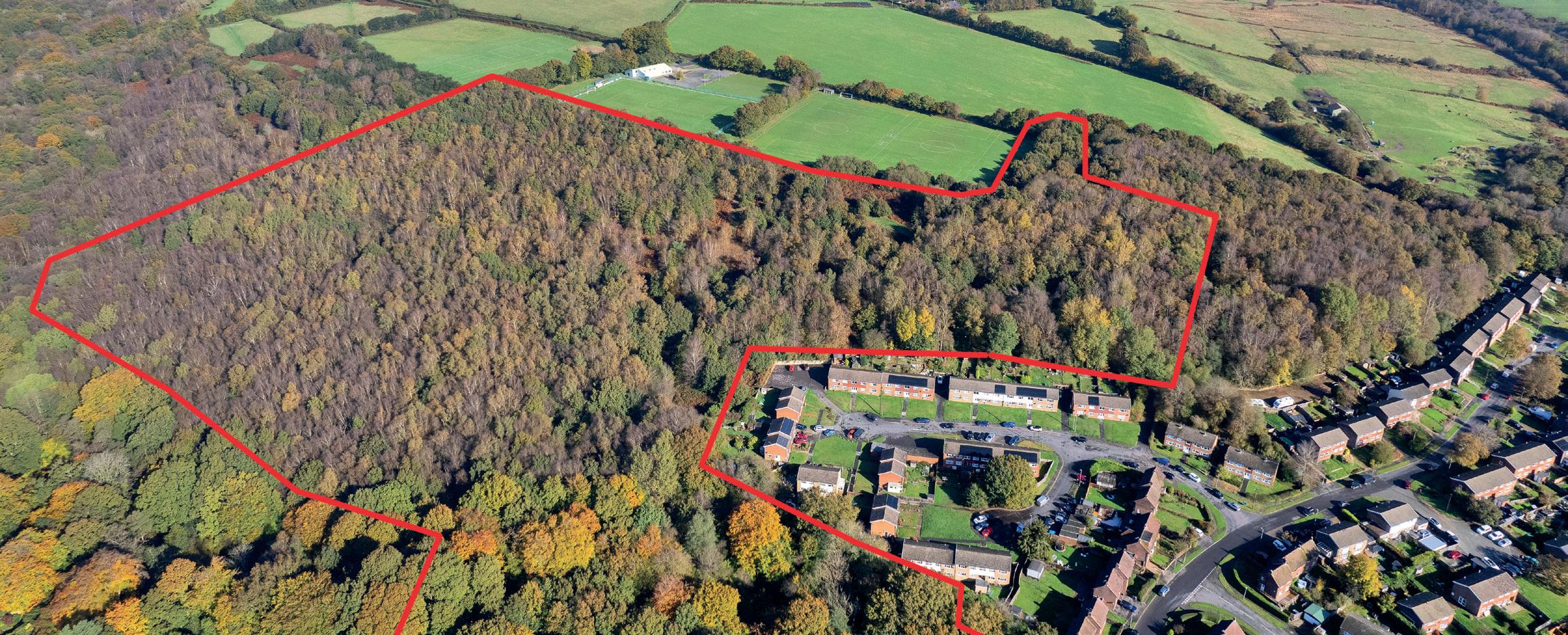
BTF has launched 162.69 acres of arable land between the villages of Smarden and Bethersden in what will be an early test of the post budget market.
The land is set out in easily worked field enclosures with little wastage and has a comprehensive drainage system.
The land is available in two lots, with the largest parcel extending to 136.85 acres and the smaller parcel 25.84 acres. Both lots have road frontage and access and are fallow at the moment, having grown winter wheat in the 2024 harvest.
This is a part of the Kentish Weald near Ashford, where land rarely becomes available and the agents anticipate that several types of buyer profile could emerge, in what is becoming more of a diverse marketplace.
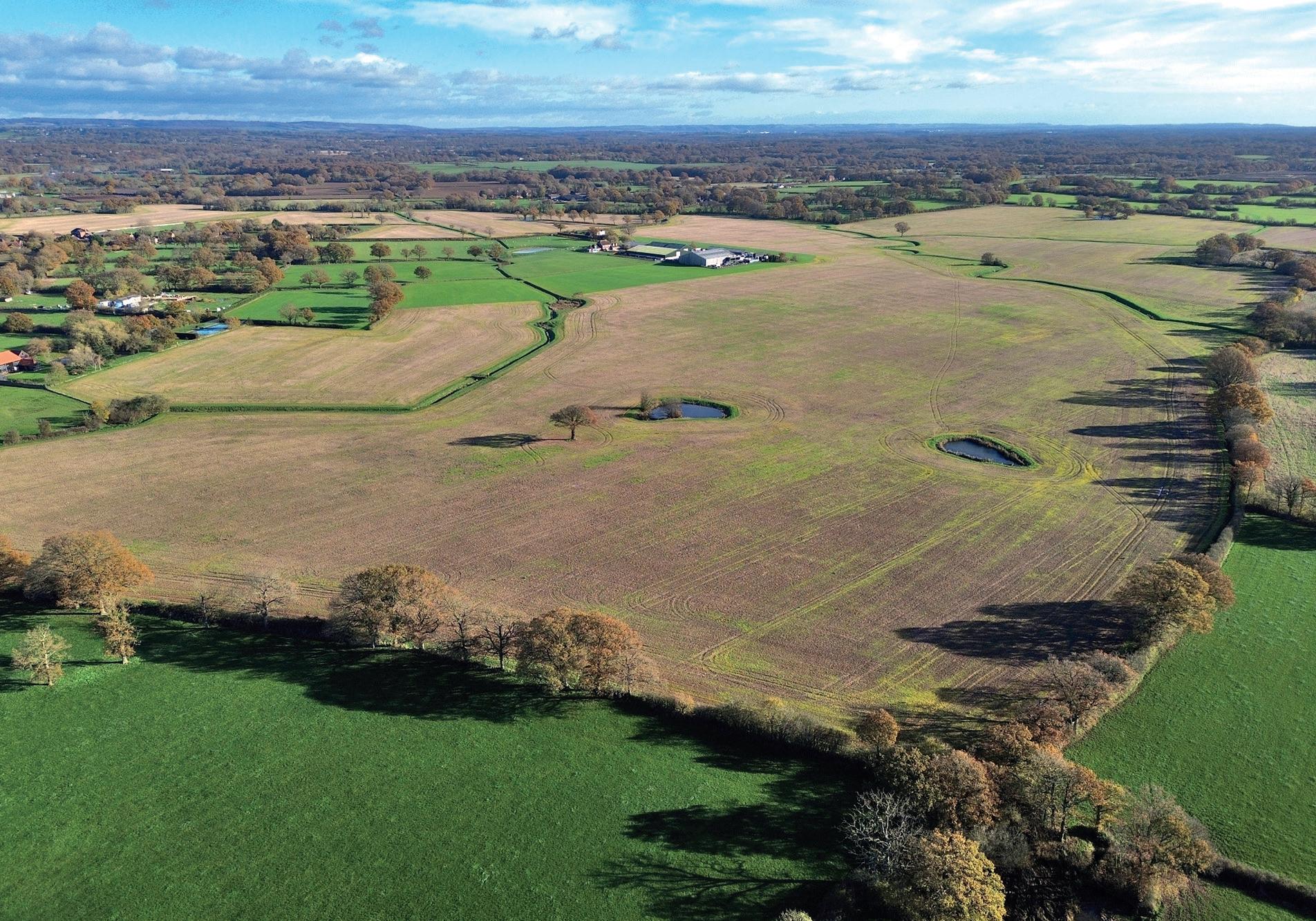

Lamberhurst, Kent Guide Price
£3,000,000 FOR SALE
Attractive 138 acre grassland farm with areas of woodland, lake, annexe, fishing lodge, and three farm buildings.
Tunbridge Wells Office - 01892 512020
SALE

Peacehaven, East Sussex Guide Price
£2,750,000 - £3,000,000
Grade II Listed Georgian home with seven bedrooms, a 28 box stable yard, riding school, paddocks, and around 27 acres.
Haywards Heath Office - 01444 453181

Rushlake Green, East Sussex Guide Price
£2,000,000 - £2,200,000 FOR SALE
Charming 46 acre farm with a Grade II Listed farmhouse, modern farm buildings, pasture, woodland, and three ponds.
Battle Office - 01424 775577
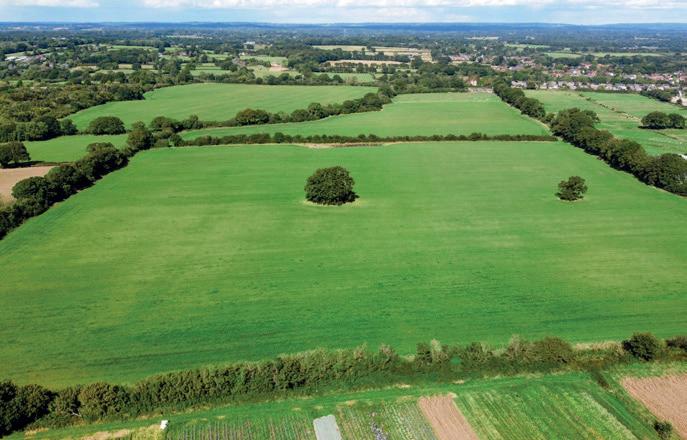
Plumpton Green, East Sussex Guide Price £975,000 (Lot 2) FOR SALE
A level block of Grade 3 agricultural land, divided into 4 fields with mature hedging, trees, and South Downs views. 105 acres.
Haywards Heath Office - 01444 453181



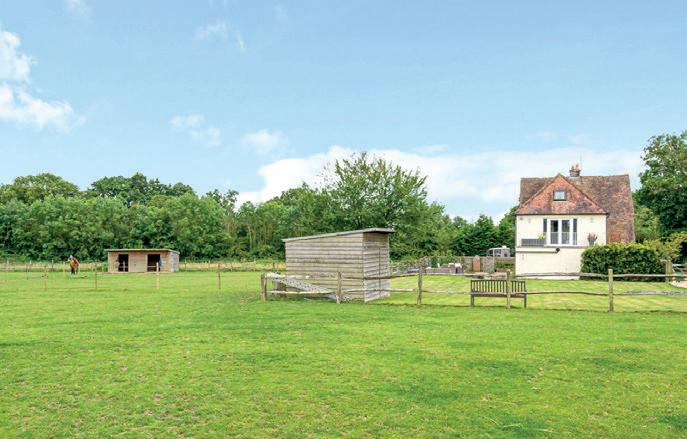
Cowfold, West Sussex Guide Price £1,150,000 - £1,250,000 FOR SALE
Family home with equestrian facilities on 2.25 acres, including a stables, tack room, sandschool, paddocks, and field shelter.
Pulborough Office - 01798 872081

Pulborough, West Sussex Guide Price £800,000 - £850,000 FOR SALE
67 acres of agricultural land between West Chiltington and Balls Green. Convenient A29 access and two entrances.
Pulborough Office - 01798 872081


Mayfield, East Sussex Guide Price £2,250,000 FOR SALE
An exceptional period home with outstanding southerly views, a detached annexe, outbuildings, and 9.7 acres.
Tunbridge Wells Office - 01892 512020

Wisborough Green, West Sussex OIEO £1,000,000
Barn with residential conversion potential (STPP) and grassland, around 64 acres, in a rural location.
Pulborough Office - 01798 872081
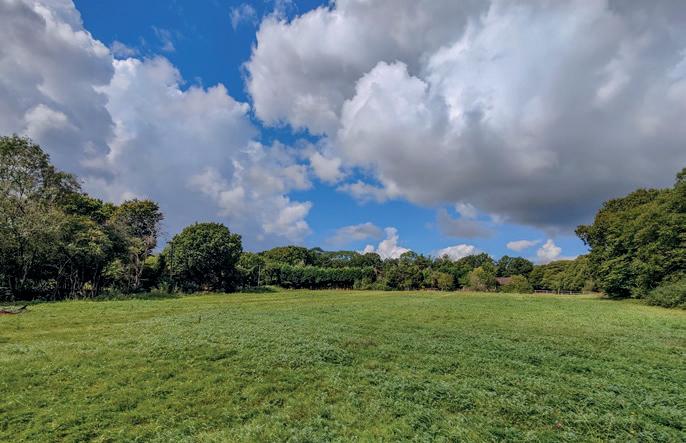
Kingsfold, West Sussex Guide Price £130,000- £150,000 FOR SALE
Pastureland with mature hedging, trees, partial fencing, and a wooded valley with a stream. Approximatley 3 acres.
Pulborough Office - 01798 872081

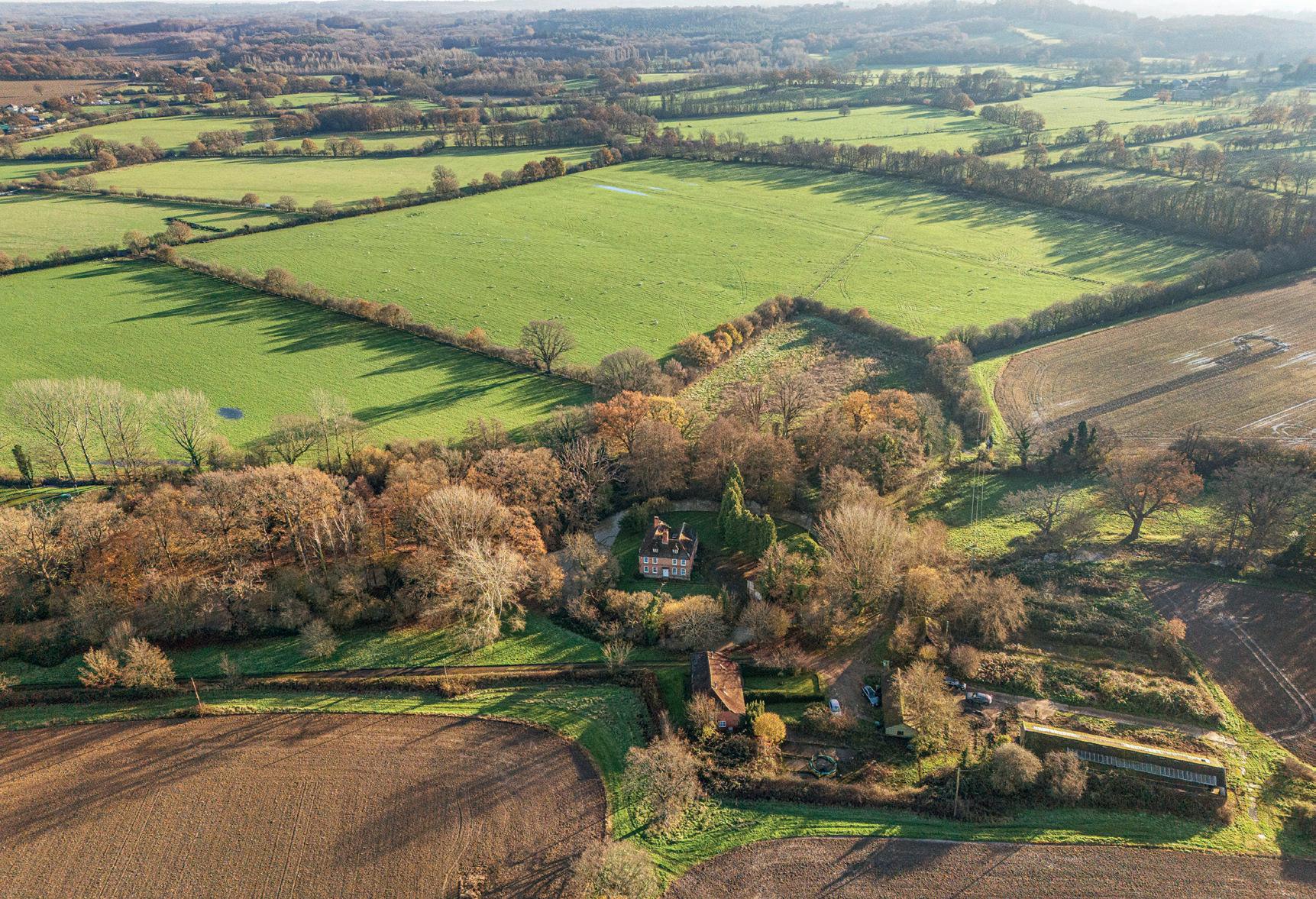



A superbly located residential farm offering opportunity for a sensitive renovation of a Grade II listed moated house, a pair of cottages, together with traditional and more modern farm buildings with further potential (subject to planning). Farmland and woodland extending in all to some 71 acres/28.65 hectares. For sale as a whole or in 6 lots.
Contact Alan Mummery or Antonia Mattinson on 01892 832 325

FOR SALE

In light of the changes to Inheritance Tax, many landowners are reviewing their farm valuations. Lambert & Foster’s team of qualified RICS/ CAAV Registered Valuers are ready to help. We are professionally qualified to provide you and your accountant/solicitors with the valuations needed.
KENT TEAM 01892 832 325
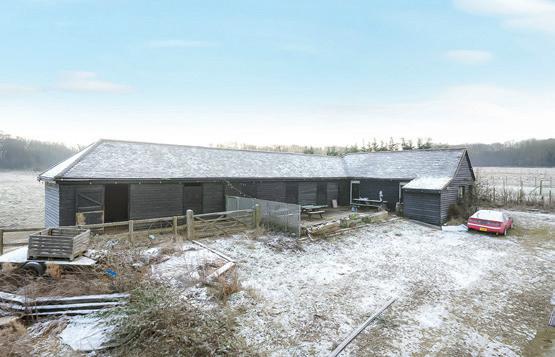
POTTERS BARN FARM, YAUGHER LANE, HARTLIP
GUIDE PRICE £425,000
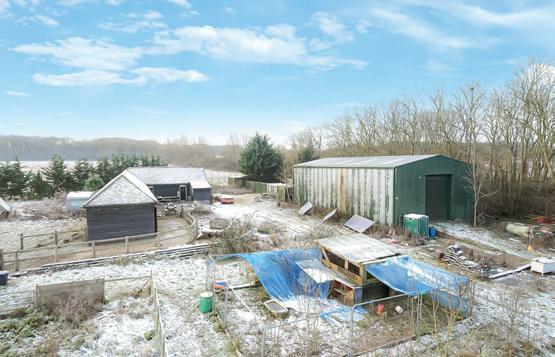
A 5-bay steel portal frame agricultural barn, L-shaped stable block and land extending in all to some 17.24 acres (6.97 hectares). Located in an enviable, rural location in the Parish of Hartlip.
Contact Will Jex on 01892 832 325









In December the Government’s new National Planning Policy Framework (NPPF) introduced some of the most significant changes to English planning rules in recent years. Forming a key part of the promised ‘blitz’ of our planning system, it is pro-development and includes a reversal of many changes introduced by the previous government in 2023.
The most significant changes are geared towards helping the Government’s ambitious house-building plans. These changes will impact significantly on many rural areas across the country, with housing delivery needing to be balanced with economic priorities and environmental considerations.
The headline points are:
• Local planning authorities (LPAs) are required to meet their identified housing need, and reference to ‘exceptional circumstances’ which previously might have justified a reduction has been removed.
• Changes have been made to the ‘standard methodology’ formula used to calculate housing targets, which generally results in increased housing requirements across most of the South East. The calculation includes an affordability multiplier which has the effect of significantly increasing
housing targets in the less affordable areas, for example Chichester (increase from 760 dwellings per annum to 1305), East Hampshire (575 to 1142), Elmbridge (653 to 1562), Horsham (917 to 1357), Mole Valley (460 to 833), Sevenoaks (704 to 1149), Tunbridge Wells (660 to 1098) and Waverley (710 to 1481).
• The ‘presumption in favour’ of sustainable development is retained, but modified to clarify the circumstances in which it may apply where a local plan is out of date. This includes important principles such as the sustainability of the location, the suitability of the proposed land use, quality of design and provision of affordable homes.
• LPAs must undertake a green belt review where they are unable to meet their identified development needs.
• A new sequential test is in place for development in green belts. Priority will be given to previously developed land, then grey belt (which is land that does not strongly contribute to green belt purposes), then other green belt land.
• All new housing developments in the green belt must provide at least 15% more affordable housing than would normally be sought, subject to an overall cap of 50%.

• Significant weight will now be given to the benefits associated with renewable and low carbon energy generation. LPAs should consider identifying suitable areas for such development when producing plans.
• Some development will be permitted in flood risk zones. Development on sites with some flood risk within site boundaries, where no built development is in the affected area, could now be supported.
• There is an emphasis on the need to mitigate and adapt to climate change.
For agricultural development specifically, the new NPPF offers nothing new beyond support for the development and diversification of agricultural and other landbased rural businesses. To support the level of planned housing development, the planning system will need to facilitate development to meet the needs of a modern economy.
Protection given to the best and most versatile agricultural land has not been enhanced.
Clearly more changes are needed if the Government is to succeed in its ambitious building plans. Ultimately, these still rely on better resourced planning authorities and changes to the way in which decisions are made to speed up decision making, to the benefit of all planning applicants.
The new NPPF reflects the Government’s pro-growth stance. Given that LPAs and rural landowners will likely be navigating these changes in 2025, it's crucial for landowners to start preparing early to capitalise on the pro-growth agenda.
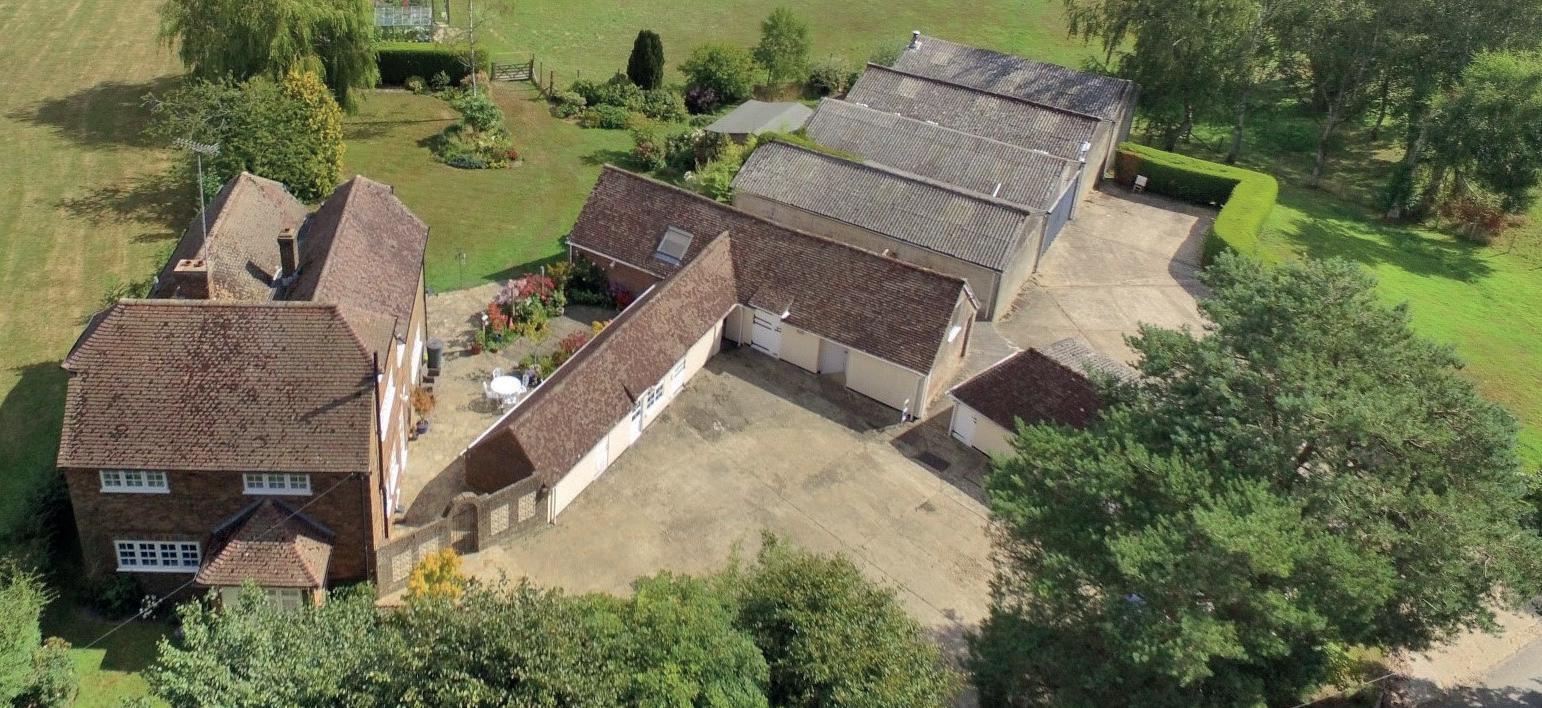


First time to the market in nearly 50 years. A beautifully presented, versatile five bedroom family home. 5,218 sq ft of well-maintained farm buildings including modern farm barn with established commercial use and stable building complex with office having lapsed consent for residential conversion. Pasture fields and woodland. Fabulous location with excellent access to village and main line rail services. EPC F
IN ALL ABOUT 19.12 ACRES Guide price: £1,650,000



A wonderfully situated Grade II listed detached three bedroom farmhouse with a large detached annexe. Outbuildings including a modern farm barn with secure storage, stabling and sand school. All set within 30 acres of pasture and woodland with a superb rural outlook.
IN ALL ABOUT 33.22 ACRES Guide price: £1,700,000
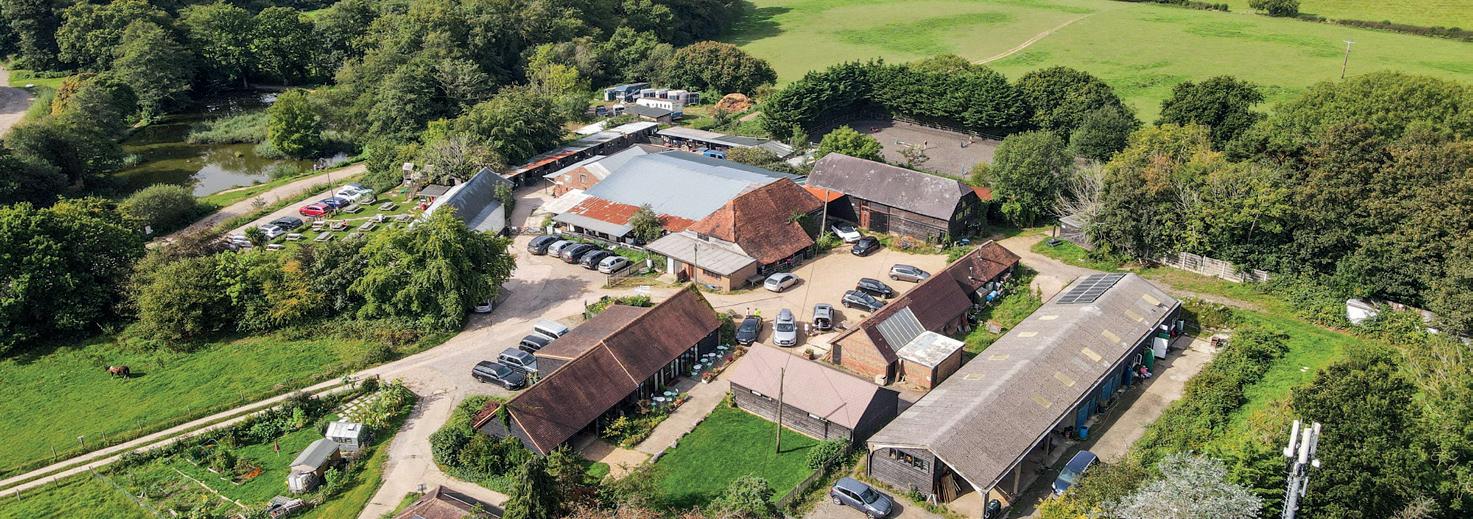
155 acre farm with a range of traditional buildings converted into artisanal workshops and business units, pastureland, woodland and ponds.
Andrew Samuel could, arguably, have timed it better, but his decision to set up his own rural land agency business in February 2005 has proved to be the right one.
Twenty years on, now specialising in delivering strategic professional advice to a broad range of farmers, landowners and institutions, alongside the estate agency arm of the business, he looked back fondly at the birth of Samuel & Son.
“I set up the business at the dawn of the basic payments regime, specifically to help farmers complete their applications and maximise their return from what was a complex new payment system,” he recalled.
“I was 32 at the time and my then-wife and I had one son and another baby on the way. Our second son arrived on 16 May, exactly the same date as the first basic payments application deadline.
“I finished the last application as my wife was going into labour, but that wasn’t the end of the story. While I was in the maternity suite, I received a call from an accountant in London who wanted me to help a client submit BPS paperwork by fax ahead of the midnight deadline.
“When I spoke to the client, it turned out to be none other than a legendary guitarist with one of the biggest and most enduring rock bands of all time. He asked where I was speaking from, and when I told him it was the car park at Eastbourne General, he invited me to lunch instead, and sometime later I enjoyed an interesting tour of his smallholding.”
Focusing on basic payments proved to be a smart move for Andrew, who left Newcastle University with a degree in agriculture and followed that up by studying rural estate management at the Royal Agricultural College before gaining valuable and varied experience with Strutt & Parker and Charles Clark & Co.
“I had to sit down once a year with my clients to talk though their BPS applications, and by doing that I learned about all their other initiatives on the farm, and in many cases that highlighted areas like planning applications, valuations, sales, tenancy agreements and other areas where I could
offer my services,” he pointed out.
Samuel & Son became a thriving business, and after starting out in an attic room at home, Andrew took on a unit at Broad Farm, Hellingly, before outgrowing that and opening an estate agency in Heathfield in 2007, by this time working with Dan Page, Rhiannon Masters and James Hamilton.
In 2016 Andrew acquired the Hunter Coster estate agency in Horam, East Sussex, running it independently before merging it with Samuel & Son in 2018. By then his team included William Fraser and Sam Dutton, together with “a raft of important support staff”.
The Covid-19 pandemic saw the business refocus, with Heathfield closing and the business moving to the Horam office where the property sales and lettings team had always been based. Andrew also began offering a more specialist overview of his clients’ business affairs while outsourcing other areas of work to fellow professionals.
“I now specialise in offering advice in areas such as succession planning, property and financial issues, working in a team alongside clients’ solicitors, financial advisors and the like,” he said.
“There is no place these days for a ‘Jack of all trades’ when it comes to supporting farmers and landowners in making big decisions about their property, their family and their future. Instead, I aim to provide strategic direction while bringing in the right advisers to help tackle specific issues.”
With the music industry as close-knit as the farming community tends to be, connections
prompted by that first 'rock 'n' roll' meeting meant that Andrew’s customer base grew to include other famous names.
“A lot of celebrities are now landowners, and while they may be asset rich, they still face the same land management, taxation and succession challenges as the rest of us. They need advice and I have 30 years of experience to offer them.
“I feel honoured to have found myself accepted, in many cases, as a valued and trusted member of a team of advisers helping families manage their assets and property. It’s fascinating, complex but ultimately fulfilling work and I feel fortunate to be able to play my part in it.”
One such client is Tony Penrose, whose mother Lee Miller was a 1930s Vanity Fair model who became a war correspondent with the Washington Post and managed to get access to Hitler’s apartment in Berlin and to Buchenwald concentration camp at the end of the war.
“I help Tony manage the estate and farm that surrounds Farley Farmhouse and is home to the archive of war photos, letters and artworks previously owned by his mother and which recently featured in the Hollywood blockbuster film Lee, starring Kate Winslet. It’s challenging at times, but also a great privilege,” he said, adding: “Without clients like Tony, all of my other clients, my colleagues, contacts, family and friends, this 20-year – but continuing – journey would not have been as rewarding as it has proved to be so far and I would like to thank them all for their support over the years.”

At Plumpton College, early lambing is now well underway and the lambs are thriving in the mild weather. Third-year agriculture students are working hard to supervise the first-year students, offering guidance and support during this exciting time on the farm.
Fieldwork will soon begin, which students are eagerly anticipating, as it allows them to apply their knowledge in real-world situations. The tractor driving skills they have been developing over the past couple of months will soon come into play as they head out into the fields.
Plumpton’s courses cover a broad range of agricultural topics, including crops and cropping, mechanisation, nutrition, farm management and livestock production. One of the most valuable aspects is the fantastic support from industry partners, which allows students to visit farming businesses and attend major events.
This month, our students attended LAMMA, where they were inspired by the level of advanced technology on display. It’s essential for our students to explore the management techniques used for decision-making in agricultural businesses, and events like LAMMA give them the opportunity to see how technology can be applied in the future of the industry.
Students thrive with practical learning and industry insights.
Plumpton aims to boost students’ employability and professional skills through a variety of industrial experiences. This includes at least one placement in the industry and presentations from external experts, offering insights into the agricultural commercial sector.
Students also enjoy practical workshops and demonstrations from employers in the South East, covering topics like farm business planning and control, which they then apply to real farm case studies.
Here’s what some of our students have to say about their experiences this month.
"At Plumpton College, we get to go on a variety of trips and visits that provide us with a hands-on chance to explore different aspects of farming. These experiences allow us to speak directly with farmers about their businesses and gain insight into how different farming systems operate.
“So far, we’ve visited several dairy farms, where we learned about the best practices for raising calves for both beef and heifer replacements, all while maintaining high
animal welfare standards.
“We also recently attended LAMMA, where we had the opportunity to see both new and older machinery and chat with exhibitors about their equipment. The focus on new technology aligns perfectly with what we’re studying at Plumpton. These trips are incredibly valuable in enhancing our education, and I’m excited for many more opportunities to come."
"The college organized an amazing trip to LAMMA, and it was truly inspiring. I had the chance to talk to numerous agricultural machinery suppliers, including CASE, which launched a brand-new combine.
“It was fascinating to learn from experts about the different machines and their functions. The day was both educational and engaging, and it has greatly expanded my understanding of the various types of machinery used in agriculture. I’ve gathered a wealth of information about their new features and specifications, which will be incredibly useful as I continue my studies at college."

If you are an employer and would like to know more about the benefits of taking on an apprentice, the college would be delighted to help; get in touch with our apprenticeships team at business@plumpton.ac.uk
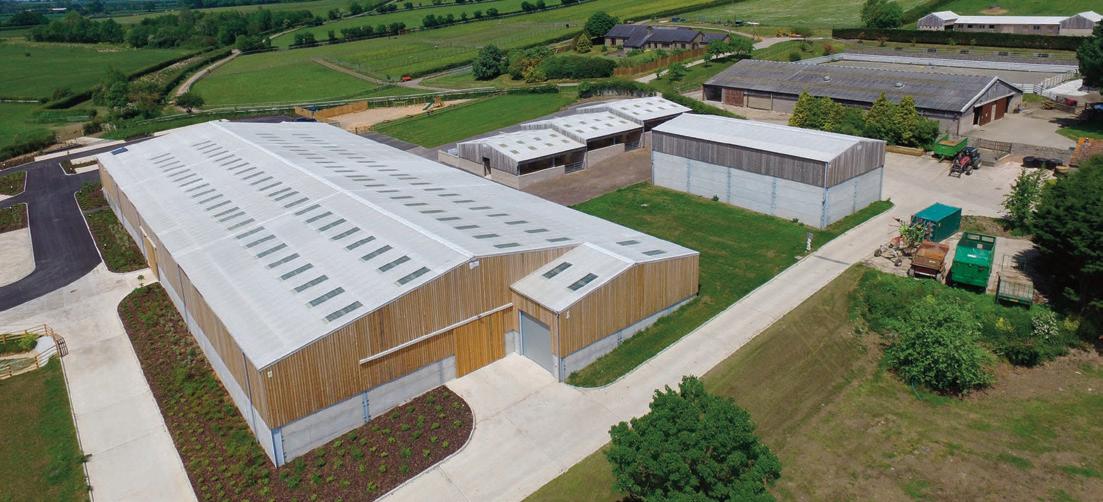
























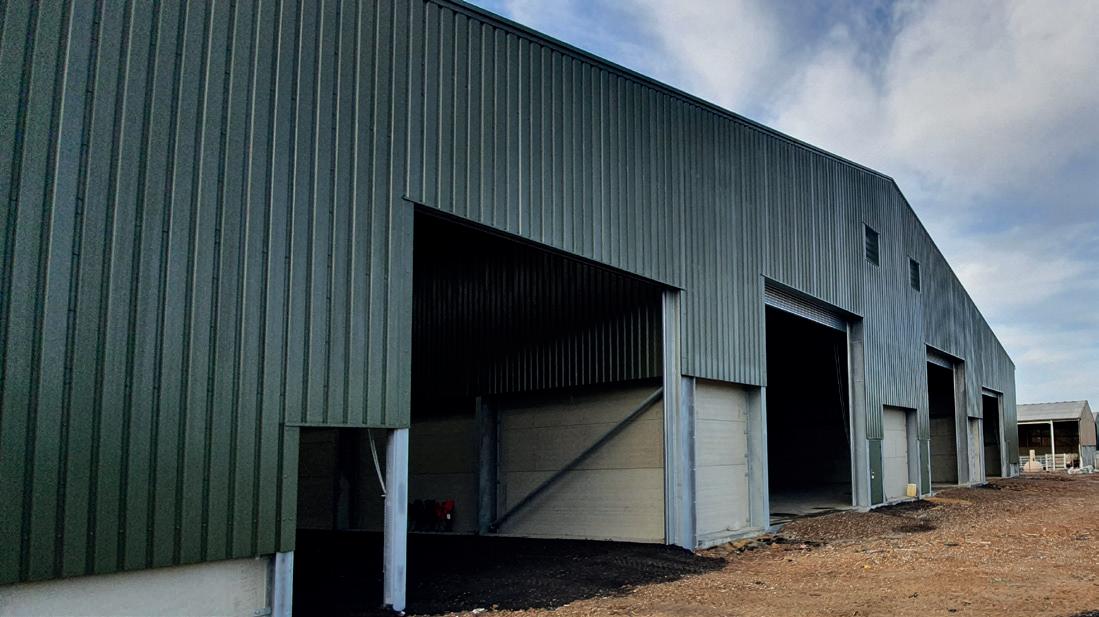




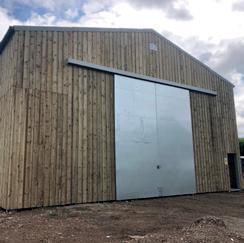







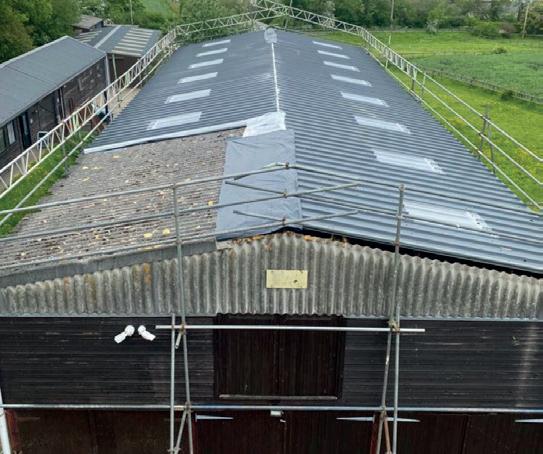



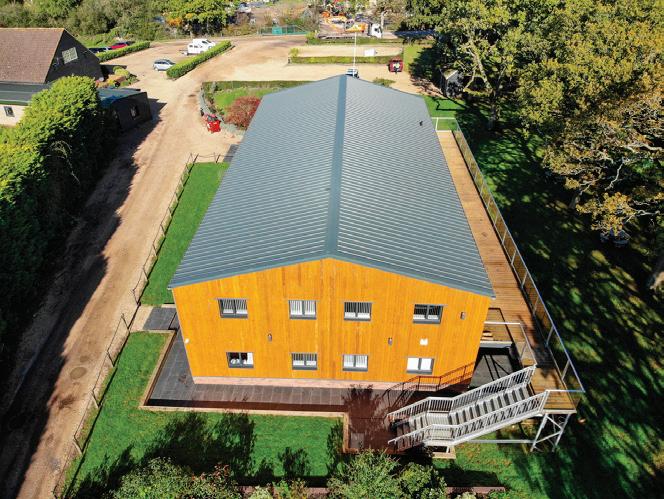
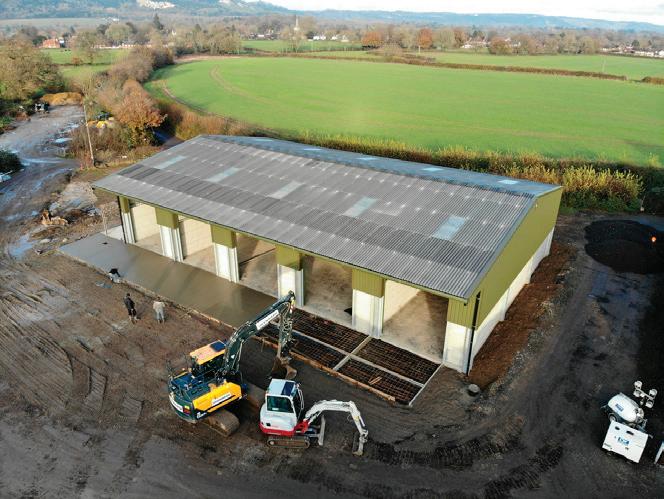







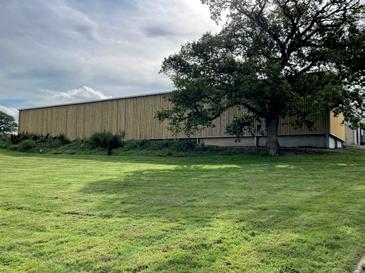
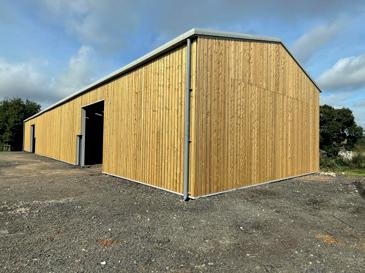




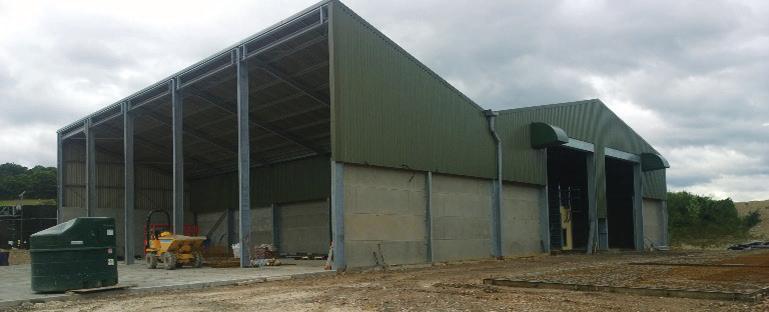


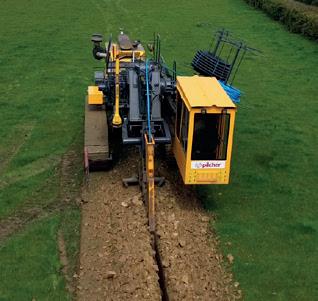

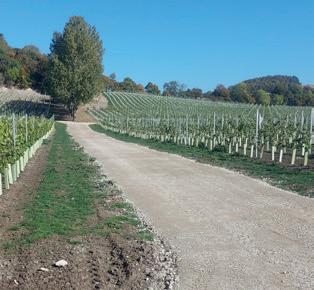
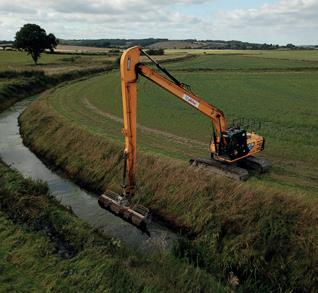




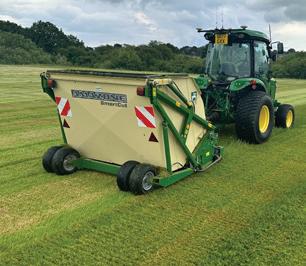





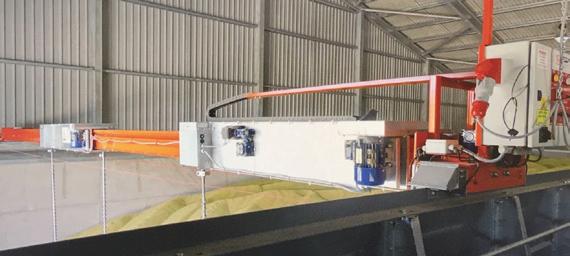




CWP fencing
Cleft post and rail
Standing Sweet Chestnut Wanted
Standing Sweet Chestnut Wanted Cleft post and rail
Standing Sweet Chestnut Wanted
Cleft post and rail
Cleft field gates
Cleft field gates
Cleft field gates
Fencing stakes
Fencing stakes
Fencing stakes
Straining posts
Straining posts
Straining posts
Chestnut fencing
Chestnut fencing
Chestnut fencing









Tel: 07985 298221 colin@cwpfencing.co.uk
Tel: 07985298221 colin@cwpfencing.co.uk
Tel: 07985298221 colin@cwpfencing.co.uk




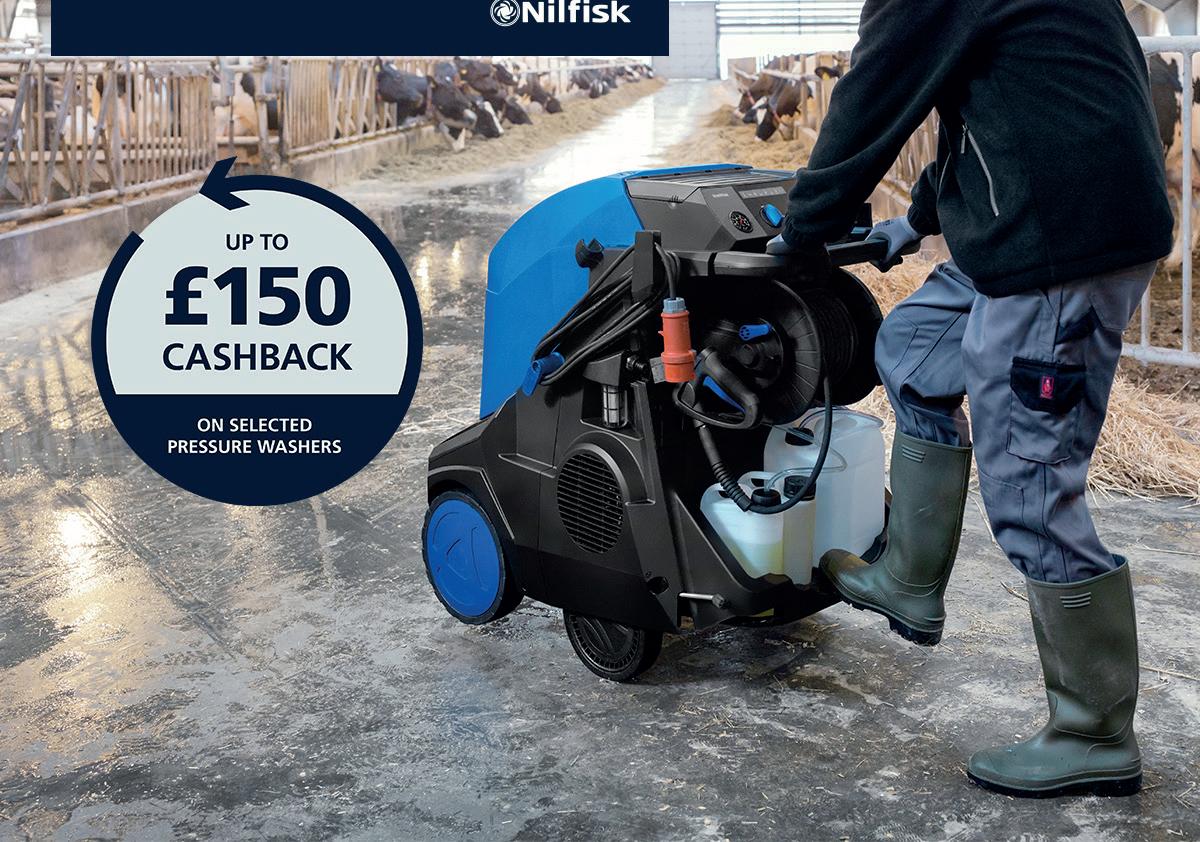





ACROSS
1 Insect common to UK (8)
5 Pasty, wan (5)
8 Introduce (9)
9 Wooden box (5)
11 Eg Ash, Larch, Oak (4)
12 Migrating bird (7)
14 How fairy stories begin (4,4,1,4)
16 A sculpture common only in winter (7)
18 Decorative plating (6)
21 Medicated (7)
24 Meat and vegetable dish cooked slowly (4)
26 Frequent, recurring constantly (9)
27 Helped (8)
28 Brassica (4) DOWN
1 Lift (5)
2 Marine mammal (5)
3 Drinking vessels (4)
4 Vomit (5,2)
6 Metal pin with a thread (5)
7 Utmost, maximum, greatest (7)
10 Biting, jumping insect (4)
13 Pathogen (4)
14 Very unpleasant (9)
15 Mountain lake (4)
17 Soggy (3)
18 Wicker lobster pot (5)
19 A place to wipe shoes (3)
20 Sudden pain (6)
22 Precipitates (5) 23 Entertain (5) 24 Meat cut (5)
To enter, simply unscramble the anagram (3,7,8,4)


L a n d & P r o p e r t y E x p e r t s t


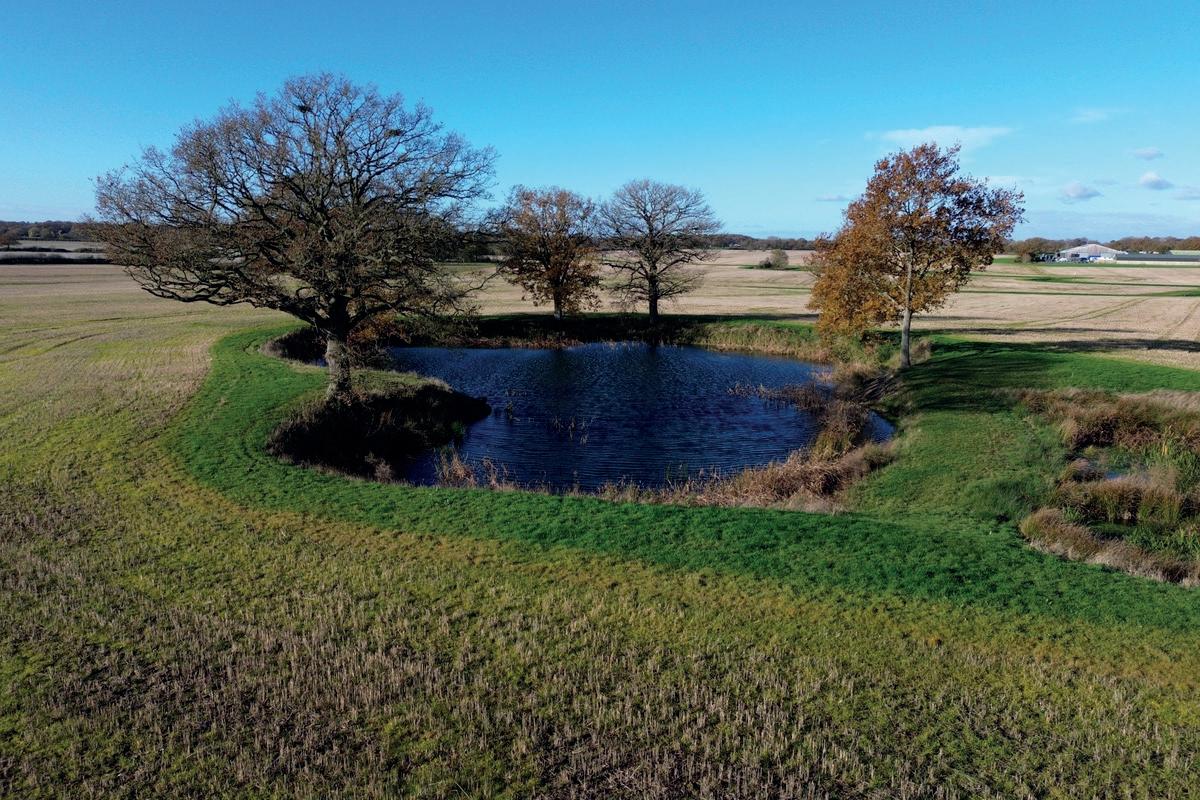
S M A R D E N , A S H F O R D , K E N T - 1 6 2 . 6 9 A C R E S F O R S A L E
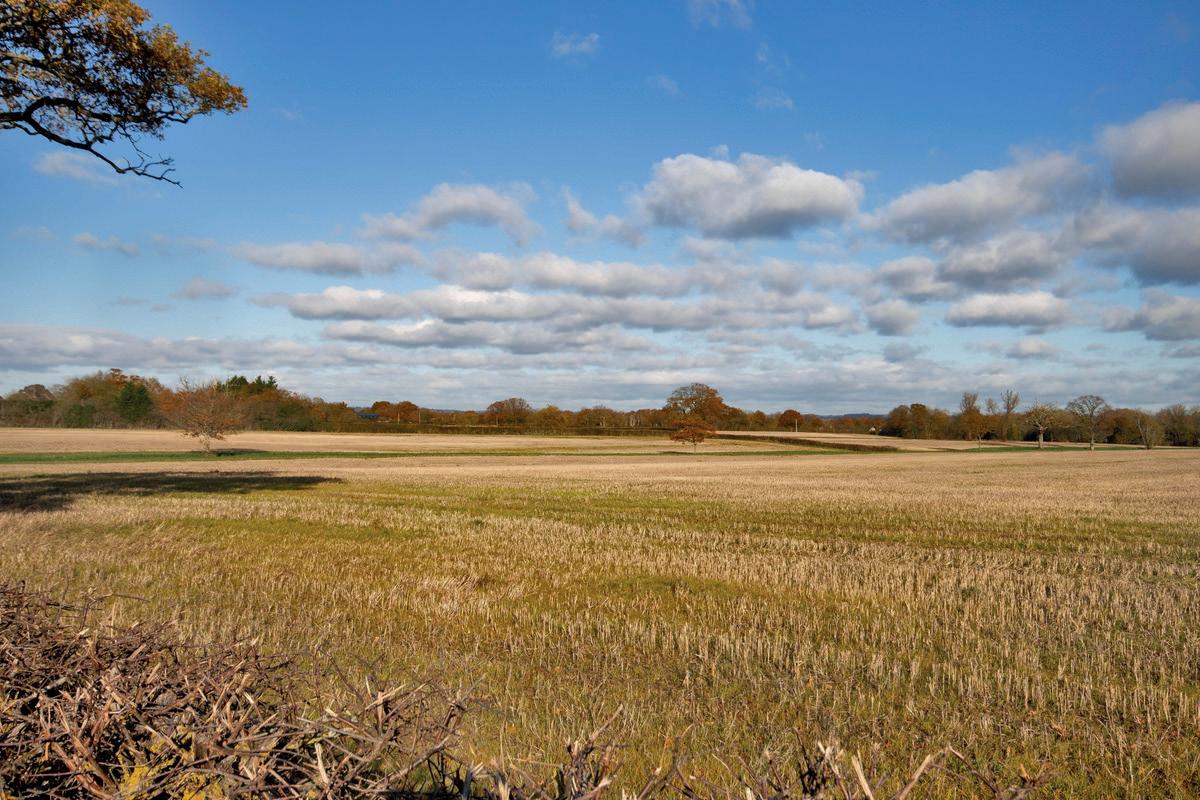
T w o p a r c e l s o f l e v e l a r a b l e l a n d b e t w e e n S m a r d e n & B e t h e r s d e n
T h e l a n d h a s c o m p r e h e n s i v e l a n d d r a i n a g e .
L a r g e f i e l d e n c l o s u r e s w i t h l i t t l e w a s t a g e .
R o a d f r o n t a g e & l a n d s c a p e d W e a l d e n p o n d s

Artists Impression
G u i d e P r i c e : L o t 1 - £ 1 , 2 5 0 , 0 0 0

P l a n n i n g p e r m i s s i o n f o r a 3 - b e d r o o m b a r n
c o n v e r s i o n .
G o o d s i z e d p a d d o c k a n d g a r d e n w i t h i n t h e
C r a n b r o o k S c h o o l C a t c h m e n t A r e a
I n a l l a p p r o x i m a t e l y 1 . 1 5 a c r e s .
S T A P L E H U R S T | K E N T G u i d e P r i c e : £ 3 9 5 , 0 0 0
T w o s t r a t e g i c a l l y l o c a t e d p a r c e l s o n t h e
e d g e o f t h e v i l l a g e - 3 3 . 7 9 a c r e s i n t o t a l .
L o t 1 : 2 7 1 6 a c r e s
L o t 2 : 6 6 3 a c r e s
T H R E E O A K S , N R H A S T I N G S G u i d e P r i c e : P O A L o t 2 - £ 2 6 5 , 0 0 0
w w w . b t f p a r t n e r s h i p . c o . u k c h a l l o c k @ b t f p a r t n e r s h i p c o u k